From incredible sculptures to swimming with seals, sharks and tuna, these are the secrets of Australia – our list of 100 Great Things To Do In Australia You’ve Never Heard Of . . .
Overwhelming feedback from our seminal 100 Things To Do In Australia Before You Die led us to think we’d missed something: sure, we had all the big icons covered, but what about the underrated and unknown?
These are the experiences we as Australians value and love about this amazing, sometimes bizarre, continent. We figured we’re always coming across something fascinating we’ve never heard of before, why not share it with the world?
Once again our esteemed panellists got right into the spirit of the exercise, plucking the best and brightest from an original list of hundreds and hundreds of great nominations from around the country.
The result is a fun, fascinating, wonderful eye-opener of a bible to some of the historic, mythic, incredible hidden corners of Australia. See you out there.
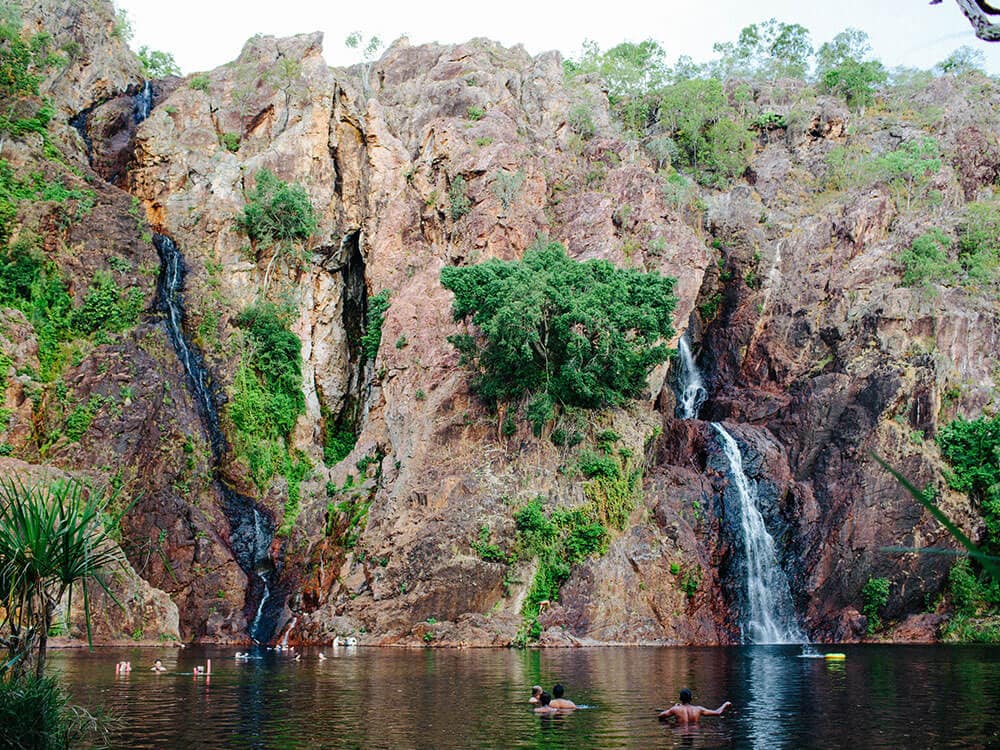
Why should Kakadu get all the glory? Especially when Litchfield National Park, a mere slip of a thing only covering about 1500km2, compared with Kakadu’s immense 20,000km2, lies a far more friendly two-hour drive down the road from Darwin? Kakadu has always held the crown as the Top End’s premier natural attraction, but we submit that this may change in the near future.
Kakadu’s trump cards are its four mighty waterfalls, three of which require 4WD, and the most famous of which – Jim Jim falls – is wet in the wet season (when you can’t reach it) and dries up in the dry.
Litchfield’s four waterfalls are lustily full year-round, and are gathered tightly on the Tabletop Range. Three of these (Florence, Tjaynera and Wangi) are open to swimming in wonderful pools, while the fourth, Tolmer, is protected because of a rare species of bat.
“SPECTACULAR, VARIED AND EASILY ACCESSIBLE FALLS MEANS THAT LITCHFIELD WON’T BE ON THIS LIST FOR MUCH LONGER.” – Richard I’Anson
Access is simple, and sealed roads are improving. And another big plus: there aren’t too many spots in Kakadu where you can feel completely safe swimming, but in Litchfield – no estuarine crocs.
Magnetic termite mounds abound in Litchfield, their perfect orientation along north-south poles a wondrous nod to modern architecture. The Lost City with its bizarre sandstone towers, monitor lizards darting to and fro, endless pools, paperbark swamps and picnic spots . . . the people of Darwin, and farther flung, are rightly flocking to Litchfield for their perfect Top End experience.
Where
100km southwest of Darwin, near Batchelor. Generally accessible year-round via Batchelor. In the dry season it’s also accessible via the unsealed Cox Peninsula Road.
Did you know?
Kakadu attracts around 240,000 visitors each year. However, due to the relatively “instant” nature of its attractions, Litchfield is very quickly catching up, posting figures of 220,000 and gaining.
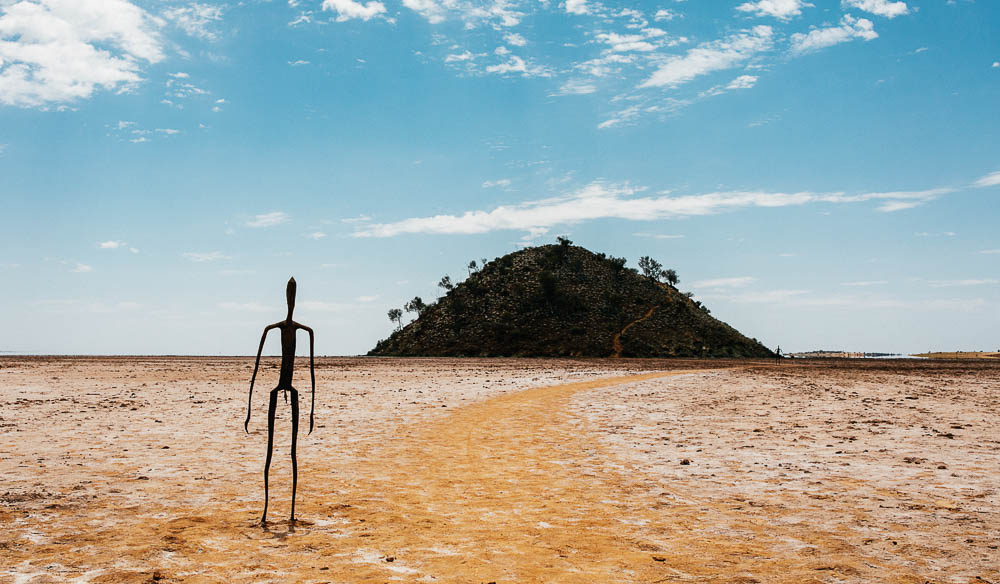
Under a blazing Western Australian sun in December 2002, British installation artist Antony Gormley gazed out upon the brilliant white expanse of Lake Ballard, an ancient salt lake 55km west of the small outback town of Menzies. The celebrated sculptor had hit upon of a very curious plan.
North of Kalgoorlie, Menzies was part of the frenetic gold rush of the late 1890s and is now a virtual ghost town. When Gormley arrived, he had an ambitious sculpture project in mind to mark the 50th anniversary of the Perth International Arts Festival.
First he sought permission from local Aboriginal people for the use of almost 10km2 of the barren salt lake. Then he approached the citizens of Menzies and, after some persuading, spent the next six months capturing digital scans of 51 of them – completely naked.
These scans were then reduced in size by two thirds, cast into moulds, and transformed into 51 bizarre stainless steel sculptures that somehow contrived to represent their subjects’ innards. The strangely extraterrestrial figures were then placed at intervals across the blank canvas of the million-year-old salt lake, making for an extremely eerie and effective installation, especially at dawn and dusk.
A book of the entire painstaking process has since been published, called Antony Gormley: Inside Australia.
WHERE // Menzies is 726km east of Perth and 132km north of Kalgoorlie. Lake Ballard itself is 55km west of Menzies. Call the Menzies Shire on (08) 9024 2041 or check out www.menzies.wa.gov.au for more info.
DID YOU KNOW? // The installation was originally to be 100 figures, but the project ran over budget. It was also supposed to be removed in 2003, but proved so successful that it remains to this day as a drawcard for local and international visitors.

There are a multitude of in-water animal encounters to be had in Australia, of varying quality – some take place in aquariums, some in cages (that’s sharks), others in knee-deep water just offshore and usually with dolphins. But there’s nothing quite like meeting a wild and curious creature, especially one as playful as a sea lion, on its own terms.
Completely non-manipulated, the experience of paddling around with a frolicking sea lion in Baird Bay on the west coast of SA’s Eyre Peninsula is one of the few places in the world where it’s just you and them in shallow, sheltered waters. The sea lions here, and around the small collection of islands nearby, are totally unfed, untrained and in naturally wild conditions.
“THIS IS NO THEME PARK SPLASH-ABOUT WITH HIGHLY TRAINED, ANIMALS. IT REALLY IS ONE OF THOSE EXPERIENCES WITH ANIMALS THAT WILL CHANGE YOUR LIFE!” – Lee Atkinson
For that reason, it’s entirely up to them as to the level of interaction they choose to bestow on you. And it really feels like that: as though they’re bestowing on you the gift of their lively interest, then gradually welcoming you as one of their own.
If they’re in a playful mood, they’ll frolic with you, swim loop-de-loops around you, mimic your movements – try cocking your head to one side and seeing the action shyly mirrored – and play idle games of tag or hide and seek.
A truly awesome experience for anyone wanting more than just a giggle from a well-trained dolphin, or the practice of simply spotting fins from the deck of an observer launch.
WHERE // Baird Bay is about 40km southeast of the main town of Streaky Bay, which is 727km northwest of Adelaide. (08) 8626 5017 and www.bairdbay.com for more info.
DID YOU KNOW? // Sea lions have truly excellent lungs. An Australian male adult was once recorded as achieving a depth of 245m, and in fact California Seals have been trained to help recover lost objects and even detain divers by attaching a cuff linked to a long rope.
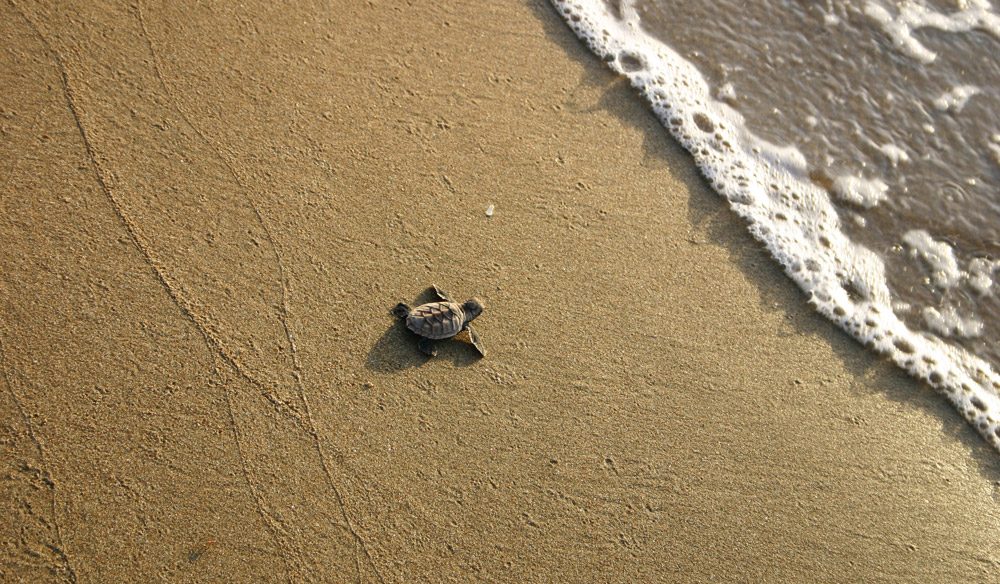
If everyone wants to holiday on a beautiful, quiet tropical beach and return feeling not just good but great, nothing in the world beats Camp Chivaree in the very, very far north of Queensland.
It’s an incredibly special place and very special holiday work: saving the sea turtles threatened with extinction in the next 25 years. They’re being slaughtered by ghost nets in the water and feral pigs on land, and volunteers get to help save them in this idyllic setting.
Working with the Aboriginal community members of Mapoon, local rangers and scientists, you can end up carrying small bundles of wriggling, hard-topped joy to the sea in the hope that your turtle will be that one-in-a-thousand that makes it through the next 30 years to breed.
“A GOOD CAUSE AND A GREAT EXPERIENCE YOU’LL NEVER FORGET.” – Michelle Hespe
You can also help install feral pig exclusion devices over turtles’ nests and, when you get a moment, remove the deadly ghost nets that are washed up on shore before the tides take them out to sea to kill again.
The guest book is chock-full of emotion about just how uplifting and rewarding Camp Chivaree can be. Volunteers arrive in June and the last camp is held in October. Housing consists of permanent tents for two and all necessary items are included – you just need to get there.
WHERE // 200km south of the tip of Australia on the gulf side, 80km north of Weipa at the Aboriginal community of Mapoon. Visit www.capeyorkturtlerescue.com for more info.
DID YOU KNOW? // Australia is breeding home to six of the seven sea turtle species in the world, and the Flatback Turtle is found only in Australia. Sea turtles predate the dinosaurs; fossil records show they’ve been around for more than 120 million years – and could be wiped out before humans can say boo.
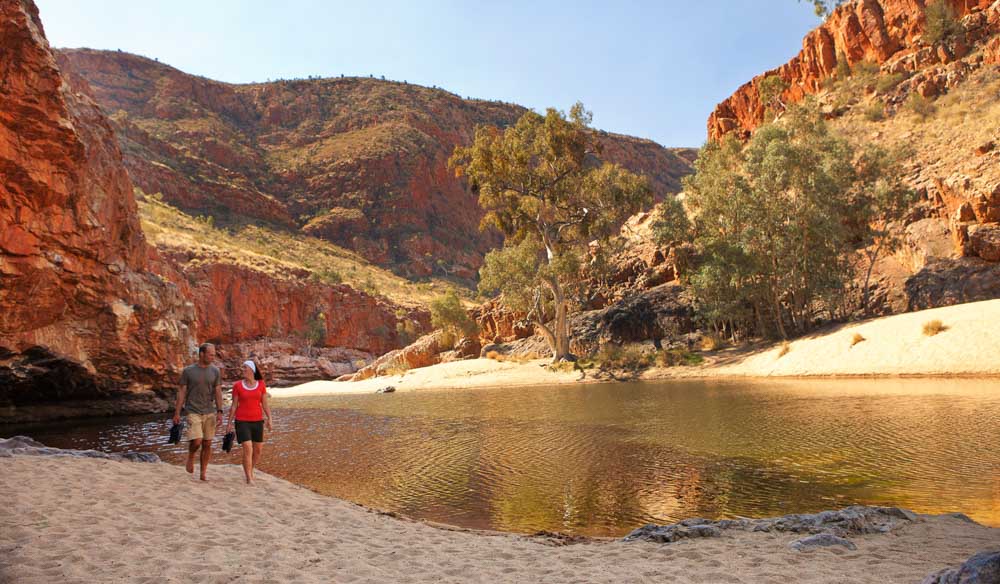
Ormiston Gorge is an oasis in the middle of the West MacDonnell Ranges. It’s also one of the most underrated places in Australia to visit.
The landscape of the Northern Territory simply does not let up. It’s so overwhelmingly harsh at times it’s near impossible to believe that anything out there could survive for any length of time. But of course it doesn’t take long, moving through the vastly changing regions, to see that people, animals, plants and a deep culture has survived, and done so for countless millennia.
“IF YOU CAN ONLY GET TO ONE OF THE SPECTACULAR GORGES IN THE WESTERN MACDONNELLS, THIS IS THE ONE TO HEAD FOR.” – Richard I’Anson
Depending on when you visit the Red Centre, there are many occasions – especially in the wake of rare rains – where young, green shoots can be found making their way up through rocks too hot to touch. That surely encapsulates perfectly what the Northern Territory is all about. Life out there finds a way.
There’s no better expression of this than stumbling suddenly upon Ormiston Gorge. After winding your way there from Alice Springs along the Mereenie Loop Road, taking in the various shimmering horizons, deep craters, desiccated riverbeds and dusty red trails along the way, to arrive abruptly at this oasis is nothing short of remarkable.
Ormiston Gorge, nestled in the West MacDonnell National Park at around the halfway point of the fantastic and world-famous Larapinta Trail, is well and truly a part of Albert Namatjira country.
With a near permanent waterhole at the southern end that plunges to 14m, ubiquitous river red gums and blood red walls rising to 300m, you can catch a break from the heat and the flies for an undisturbed swim here – an incredible treat in year-round average temperatures pushing the high 30s.
Ormiston Gorge is 135km west of Alice Springs, just past Glen Helen at the end of the sealed road section of Namatjira Drive.
Ormiston Gorge is fed by Ormiston Creek, a tributary of the nearby Finke River. It’s said that the mighty Finke only ever has all of its 1000km of interconnected branches and tributaries running perhaps twice a century.

The world’s largest rock is in Western Australia – Mount Augustus.
This is one Great Thing To Do in Australia you may actually have heard of, since it’s so fricking big. Although Uluru garners all the attention here and overseas, splendid Mount Augustus, in the Shire of Upper Gascoyne 850km north of Perth, is more than twice the size of its ancient cousin to the east.
Officially the world’s largest monolith (a single massive stone) and anticline (an arch of stratified rock with layers that bend down in opposite directions from the crest), mighty Augustus thrusts 717m above the arid scrubland and is visible from the air for more than 160km.
Known to the local Wadjari people as Burringurrah, it’s about 8km long and covers an area of around 47km2. (For those of you playing at home, Uluru is 346m high and covers just over 3km2.)
“A ROCK TWICE THE SIZE OF ULURU JUST HAS TO BE SEEN. BUT DO I HAVE TO CLIMB IT?” – Sandra Sully
Compared to Augustus, Uluru has a far more bare rock structure; its hard outer coating means there’s little or no scree or vegetation at its base, whereas the scree slope of Augustus is quite densely vegetated. This is what gives Uluru such a clearly defined shape. Like Uluru, Augustus undergoes rich, vibrant changes in colour from sunrise to sunset.
But unlike Uluru, which these days discourages vertical exploration, Augustus is an amateur climbers’ paradise, with several different walks and climbs of varying difficulty. The summit climb is the Mount’s most difficult at Class 5 (high level of fitness required).
And while at first glance the surrounding country appears empty, on closer inspection you’ll notice a multitude of life: groves of white-barked river gums and wattle trees house feeding honeyeaters, galahs and other bird and animal life.
Nearby Goolinee (Cattle Pool) on the Lyons River attracts flocks of waterbirds. An especially wonderful time to visit is during wildflower season (beginning mid-winter), when the entire area vibrates with fresh colour and new life.
WHERE // 430km east of Carnarvon via Gascoyne Junction in mid-west WA. More info at the Carnarvon Visitor Centre on (08) 9941 1146.
DID YOU KNOW? // Mount Augustus’ Dreamtime Creation stories focus around the young boy Burringurrah, who ran away in fear of the trials of initiation. It’s said the shape of the mountain is that of a body with a spear stump protruding from its leg – a traditional tribal punishment. The stump is Edney’s Lookout at the east end of Augustus.
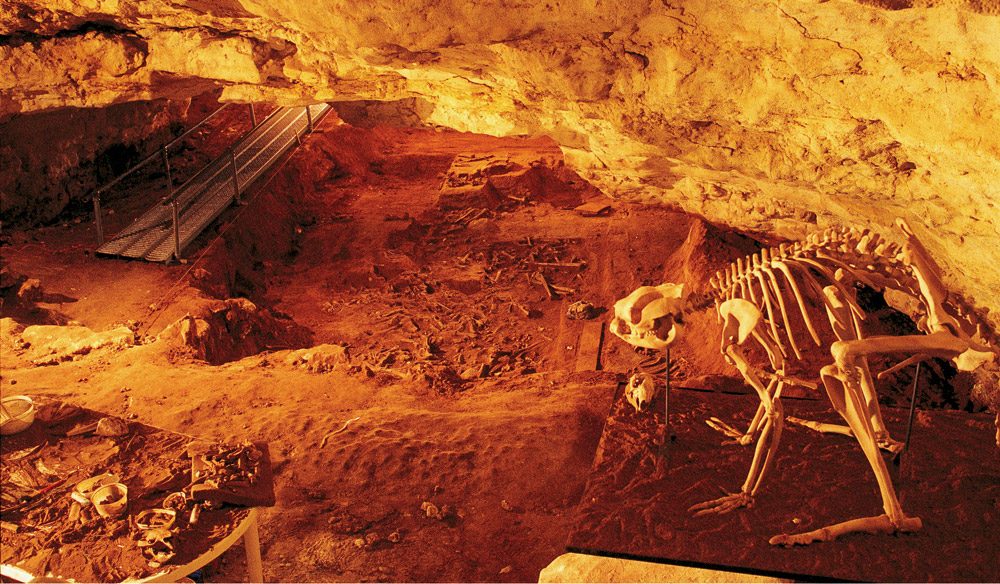
Naracoorte in South Australia is a treasure chest of prehistoric megafauna.
Did you know Australia once had its own lions? The 120kg Thylacoleo carnifex roamed our country from around 25 million years ago, then became extinct – along with (ahem) the lion’s share of our Megafauna – some 50,000 years ago. Part of the key to understanding what went on during that era of mass extinction lies in fossil graves such as those at Naracoorte Caves NP in southeast SA.
Of the dozens of caves in the area, four main ones are open to visitors: Alexandra, Blanche, Bat and Victoria Fossil Caves. Alexandra is known for its limestone formations, Blanche for a calcified Aboriginal body discovered there, Bat Cave as a crucial breeding site for bent-wing bats, and finally Victoria Fossil cave: the absolute mother lode.
It’s acted as the classic pitfall trap for more than 500,000 years, during which time literally hundreds of animals that roamed the area during the Pleistocene Epoch (spanning from 10,000 to 1.8 million years ago) have dropped in, perished and been preserved.
Giant wombats, carnivorous kangaroos, the 2.5-tonne Diprotodon australis – the largest marsupial ever to have lived – all these and more (93 species in all) have found their way to what many describe as the “Rosetta Stone” of Australian palaeontology.
So, to see the intense study of ancient pre-history in action, SA’s only World Heritage site is a must-visit for the curious. Besides, this could be the only place in Australia where you can take your family and legitimately say: “Quick, kids – to the Bat Cave!”
WHERE // Naracoorte is 330km southeast of Adelaide near the Victorian border. The National Park lies on the eastern outskirts of Naracoorte, 11km down Caves Rd.
DID YOU KNOW? // Blanche Cave shows some small signs of damage and wear, since it was commonly used for parties in around the 1860s. It was finally protected and preserved from the late 1880s.
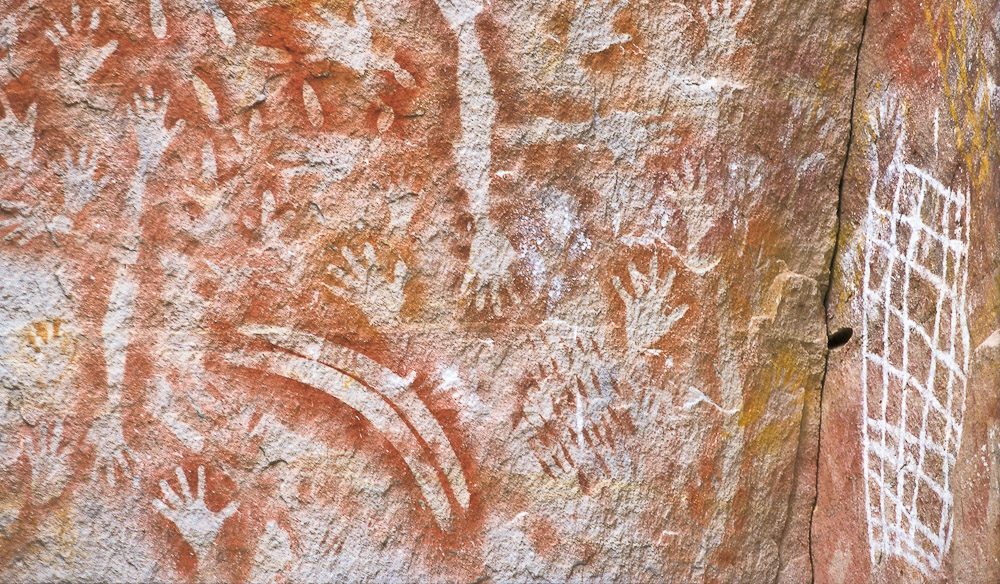
Do you remember being traipsed around art galleries as a child? Well, how about one you have to traipse just to get to? Hiking along a 5.4km track through magnificent flora and fauna in order to reach the ancient art galleries of Carnarvon Gorge is half the fun, especially since it offers a geographical sensation as well as spectacular collections of Aboriginal relics.
Be prepared to be fascinated and puzzled by exhibits of Aboriginal artwork that have been on show for century upon century. Witness the hundreds of handprints both large and small, and marvel at the plenitude of ochre and ash stencils and engravings that depict aspects of the Indigenous lifestyle.
“The stunning art is complimented by a stunning location.” – Richard I’Anson
WHERE // Carnarvon National Park is 593km northwest of Brisbane (about a 9.5hr drive) and the gorge itself, on the eastern edge, is the most accessible and popular portion of the park.
DID YOU KNOW? // Because of vandalism, Carnarvon Gorge was one of the first Aboriginal sites to have a gallery successfully “salvaged” by deleting its presence from brochures and maps and camouflaging access tracks.
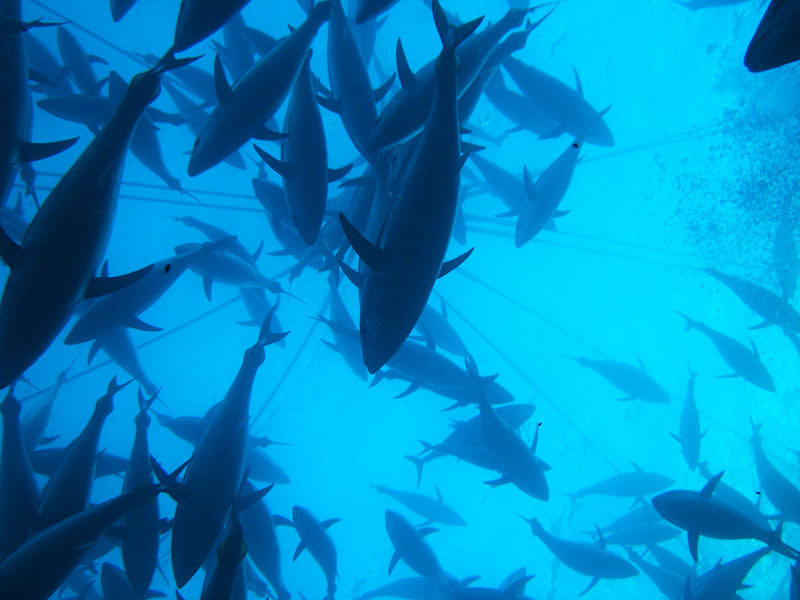
You can swim in the pens of Tuna being farmed off Port Linoln in South Australia.
On the way back from long-haul fishing trips, Matt Waller used to jump into his boat’s tow-cage and float about with the tuna. He remembers thinking what an amazingly different experience that was. Now he’s a partner in an extraordinary venture that brings that experience to the public.
Thousands of people have hopped aboard Calypso Star Charters in Port Lincoln SA for a unique Sea Farm Tour and the chance to swim with schools of Southern Bluefin Tuna – some weighing 23kg and measuring 89cm from nose to tail.
“BRILLIANT! THESE BOYS (THE SAILORS, THAT IS) SHOULD BE STARRING IN THEIR OWN SPIELBERG THRILLER. MAKE SURE THEY TELL YOU THEIR GREAT WHITE STORIES.” – Catriona Rowntree
Each two-hour tour to the 40m commercial-sized floating ring brings you into direct snorkelling contact with hundreds of tuna, as they swarm and flash past you. “They’re so fast and graceful,” says Matt. “They’ll come straight at you, then flick away at the last second, missing you by millimetres, until you begin to feel like a part of the school itself.”
Plans are in place to add smaller populations of King Fish and Australian Salmon, which you’ll be able to catch and release, or keep for a fee. “The most romantic part of tuna fishing was definitely the old poling days,” says Matt. “No reels; just a pole, a line and a hook. That’s the feeling we’re trying to recreate.”
WHERE // Tours depart daily from the Marina Hotel in Port Lincoln, SA. Cost $45 adult, $35 conc, $25 student, $120 family of 4, under threes free. Check out www.calypsostarcharter.com.au or call 0418 817 404.
DID YOU KNOW? // Almost all of the Australian farmed Southern Bluefin Tuna is exported to Japan, and fetches the highest price of any tuna on the Sashimi market. “So if you’ve got $600,” says Matt, “you’re welcome to pole-fish one of ours if you like . . .”
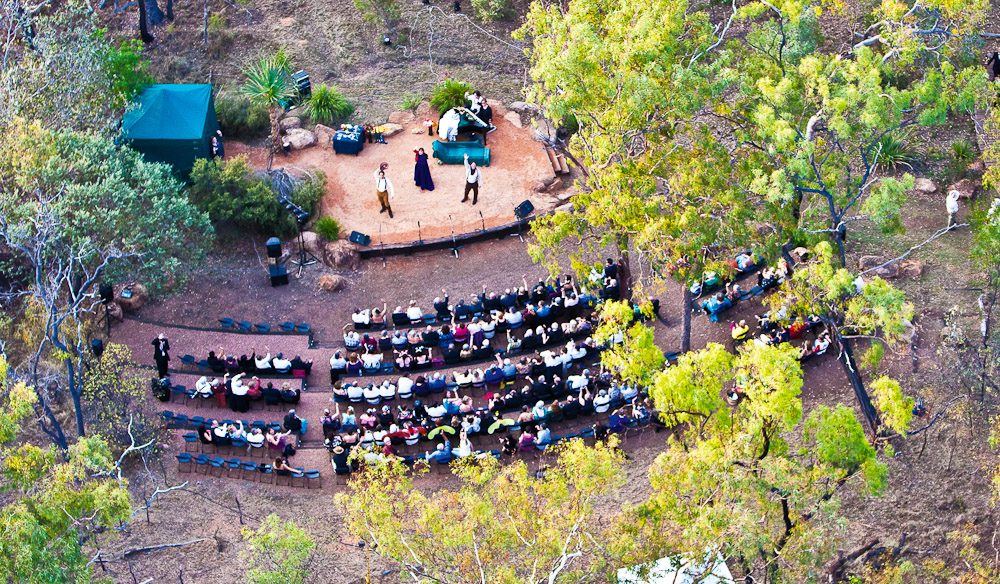
Opera comes to the Queensland outback at Undara every October.
If the soundtrack to Priscilla wasn’t your thing but the landscape was, you may want to book out the third weekend in October – that’s when Undara Experience hosts the Opera in the Outback, adjacent to the fascinating Undara Lava Tubes.
“A PREHISTORIC WONDER PAIRED WITH PERFECT PIPES? HOW LOVELY . . .” – Catriona Rowntree
Sitting out under the stars in the amphitheatre for two one-hour sets while the sun sets, you’re mesmerised by five professional opera singers in this unexpected setting. Food and wine tasting are to opera what bees are to honey, so local providores are on hand for some nibbling at cheeses and other condiments, with a winery offering tastings and bottle sales.
There are two performances over consecutive nights with a different theme for each, so most people stay for two nights. It’s the most pleasant way to spend a weekend in the savannah country of Queensland.
WHERE // Undara Experience is 275km west of Cairns, the last three kilometres of which are on a well-kept gravel road. Friday night performance is $85, Saturday night $110 (www.undara.com.au).
DID YOU KNOW? // A section of the Undara Lava Tubes (the main attraction in the area) known as “The Wall” is the closest geological example on Earth of basaltic ridges on the Moon, which were also formed by lava flows.
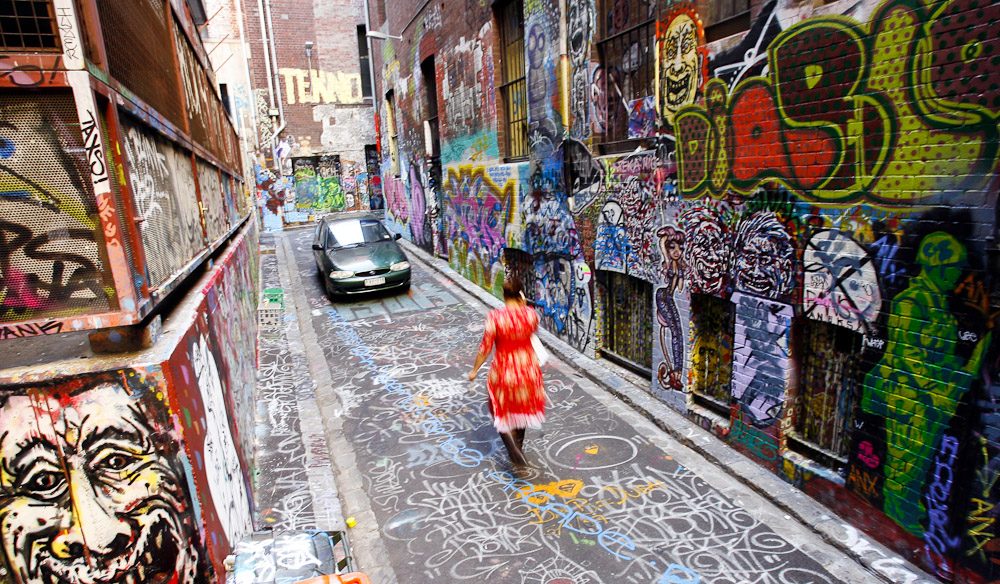
If you’ve ever walked through the maze of Melbourne’s laneways, you’ve seen the great little cafés and restaurants, the odd gallery, and people everywhere who look cool.
You’re left with the impression that in this maze there’s some extraordinary stuff happening around you, but you just haven’t been invited. Bernadette Alibrando (or Bernie as she’s known), runs tours of these very laneways, studios, nooks and crannies.
“YES, I KNOW THIS IS A SOPHISTICATED CULTURAL TOUR. BUT DON’T FORGET TO DO A SPOT OF RETAIL THERAPY WHILE YOU’RE AT IT!” – Catriona Rowntree
Bernie has been in the art industry for the past ten years and knows all the lurks and perks. She prefers that you get to understand and appreciate these artists by visiting their studios and seeing them work, so while she’ll show you galleries, what she really wants is for you to see behind the scenes.
Each tour is unique, going wherever Bernie thinks is the best to see at the moment, and afterward you’ll sample fantastic wines and cheeses in one of those great little hidden laneway bars. There you can relax and ask Bernie a whole lot more questions, which you most certainly will have.
After all, you’re cool now. These lanes don’t seem quite so intimidating anymore, do they?
WHERE // Each tour starts from a secret place in one of Melbourne’s laneways. Cost is $98 (including everything, along with a “starter pack”), 0412 005 901 or www.walktoart.com.au for more info.
DID YOU KNOW? // Melbourne has more groovy artists studios tucked away in its laneways and side streets than Brooklyn, New York.
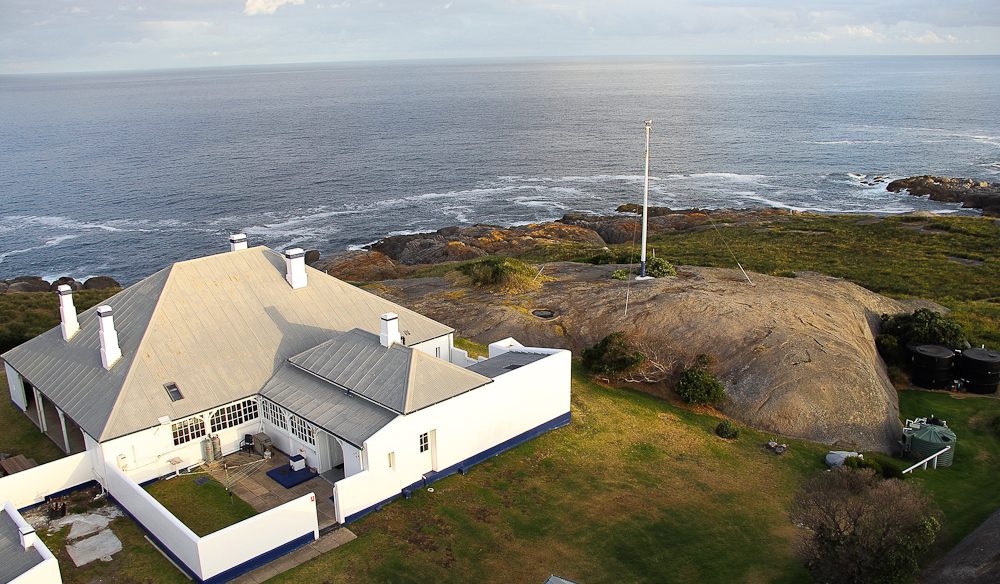
Just 12 kms of the coast of Narooma NSW, you can stay on a secluded island and sleep in the lighthouse!
They’ve been out of bounds to the public for 130 years, but now the head lighthouse keeper’s quarters on Montague Island, smack in the middle of a beautiful nature reserve – are open for you to explore, or even stay over as a wonderfully restored heritage guesthouse.
Just off the coast from Narooma on the south coast of NSW, Montague Island was first operated as a lighthouse site in the late 1800s, and today is a crucial breeding ground and habitat for Little Penguins, as well as playing home to the largest Australian and New Zealand Fur Seal colony along the NSW coast.
“A NIGHTMARE STORY TO FILM BECAUSE EVERY ASPECT IS SO GOOD. I COULD’VE EASILY SHOT A DOCO ON THE PLACE. TWO THUMBS UP!” – Catriona Rowntree
Guests to the isolated island can also assist in ongoing seabird habitat and penguin research projects – doubling up as the perfect romantic eco-adventure.
In fact, tours to this magical place are conducted year-round by Conservation Volunteers Australia. Call (03) 5330 2600 or check out www.conservationvolunteers.com.au for more info.
WHERE // 12km offshore east of Narooma, NSW.
DID YOU KNOW? // The lighthouse was constructed of granite blocks quarried from a large rock outcrop on the island. The Sydney General Post Office’s foundation stone also came from here. The huge, original lighthouse-lens (removed in 1986) is on display at the Narooma Lighthouse Museum.
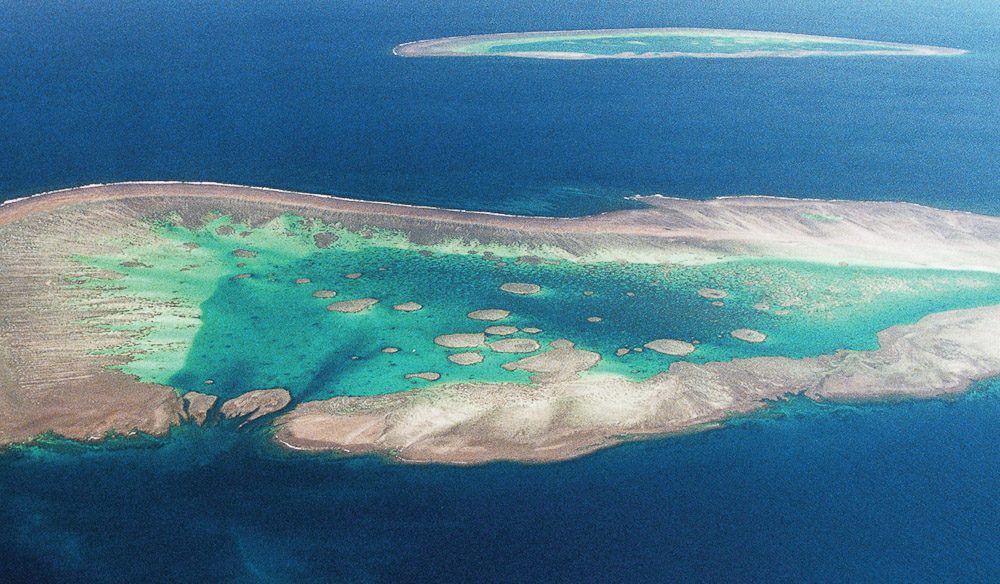
Take 18 Melbourne CBDs, fill them with water six to ten metres deep, wall the whole lot with superb coral and sea life and you have Fitzroy Reef lagoon, the least-travelled and least-spoilt part of the GBR.
Fitzroy Reef is close to the southernmost part of the Reef, off the coast at Agnes Water and 1770, and the beauty is that it’s a sheltered, enclosed and quite shallow reef that forms a lagoon. A very big lagoon, that’s far less busy than many of the pontoons further north.
Being so far south has two advantages for Fitzroy Reef: the water temperature hasn’t risen as much, so the coral is less prone to bleaching and is some of the most colourful that travellers can see; and the aquatic life is more varied, with the southern non-reef creatures finding their way into the waters to mix a little with their northern relatives.
Perfect!
WHERE // Fitzroy Reef is a 90min jet boat ride from 1770, about 490km north of Brisbane and 130km north of Bundaberg in Qld.
DID YOU KNOW? // Nearby Lady Elliot Island, 85km north of Bundaberg, is the official end of the Great Barrier Reef, and is one of many Qld locations used in the recent filming of Fool’s Gold, starring Matthew McConaughey and Kate Hudson.
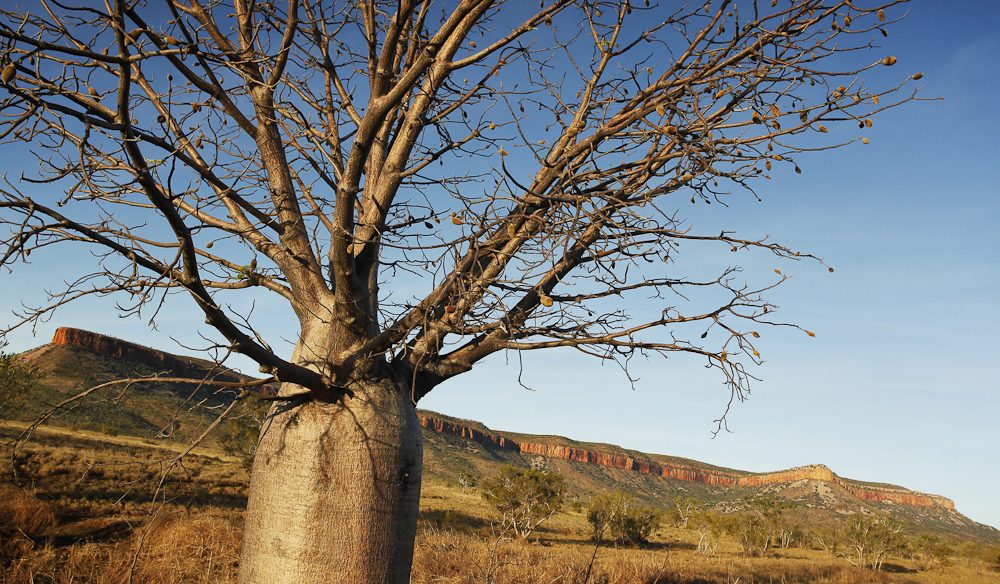
In the seasonally arid landscape of WA’s northern Kimberley grows a tree variety not just unique in its kind but also in its contour and past usage: the humble boab. Baobab is the longer, more proper name of the Adansonia genus, containing eight species of very similar trees.
Six of these occur in Madagascar, where it’s the national tree. One grows only in Africa. The remaining species grows right here in Australia, Andasonia gregorii, named for explorer Sir Augustus Charles Gregory.
Lush green leaves cover its branches during the wet, with sweet-smelling flowers scattered throughout, while its naked, twisted branches protrude during the dry. The boab also stores up to 120,000 litres of water in its trunk, giving it that distinctive swollen bottle-like appearance.
Known as the gadawon to Indigenous locals, the boab has always been of great value: its seedpods are turned into artworks; the kernels are highly nutritious raw or roasted; its leaves are medicinal; the bark becomes rope; and the gum is used as glue. Even today boab roots and leaves are used in a wide range salads, soups, cakes and pickles.
But perhaps the most fascinating feature of the boab is its hollow trunk, which police in the 1890s even used as a lock-up. Two such “prisons” are still standing outside Derby (above) and Wyndham in northern WA.
Where // Andasonia gregorii occurs in northern WA, as well as east into some parts of the NT.
Did you know? // Some boabs are believed to be more than 1500 years old. But since they don’t have rings for each year it’s impossible to tell, with some killjoy botanists arguing they don’t exceed 400 years of age.
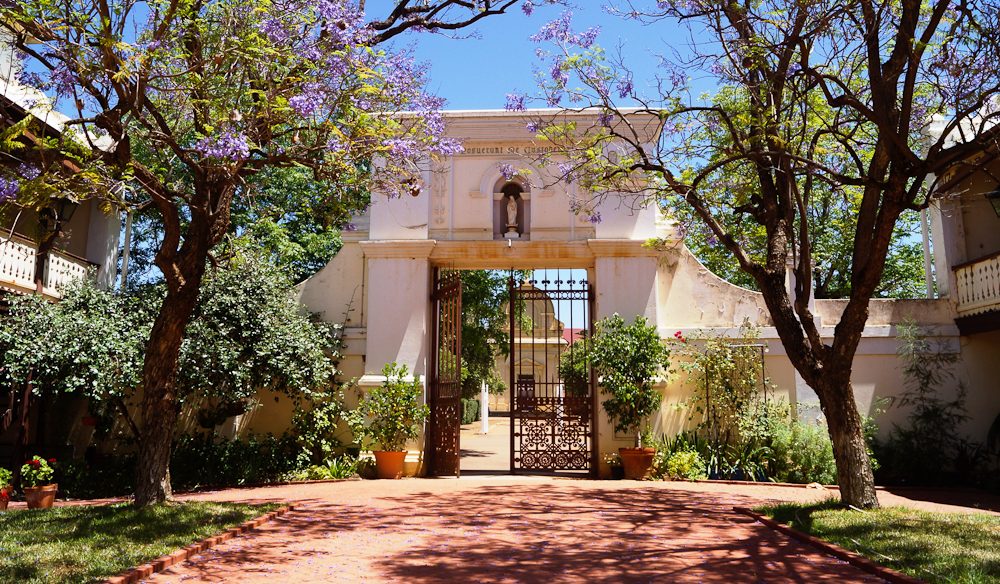
Historic monastic town north of Perth in Western Australia.
A tiny slice of the Mediterranean in the vast Western Australian wheatbelt, Spanish-influenced New Norcia is the only monastic town in the country.
Settled and owned by Benedictine monks in 1847, its changed very little in the past century, and comprises 17 monks and 40 lay people, living according to a strict daily schedule of prayer, study, work and silent devotion.
The town itself is registered as a National Estate, and is a bona fide architectural marvel, with 27 of 65 buildings classified by the National Trust.
“I DEFINITELY FAILED MY VOW OF SILENCE HERE, BUT SAMPLED A SLICE OF HEAVEN WITH THE LOCAL NUT CAKE.” – Catriona Rowntree
The monks still own and operate the grain and sheep farm, and around 70,000 people visit annually – all of whom are invited to join the monks for one of their daily prayer sessions. If you’re feeling particularly devout, you can even try observing the self-imposed complete silence of 12 hours.
And if this living museum doesn’t take your fancy, you can always shoot back to the 21st Century by visiting the European Space Station ground station 8km south of town (entry by prior arrangement). But remember: it’s a radio antenna station for talking to spacecraft in deep space. not a telephone for speaking to God.
WHERE // 132km north of Perth.
DID YOU KNOW? // Its Art Gallery now features a “Robbed and Restored” exhibition, featuring 25 restored paintings from the 26 that were boldly stolen in 1986.
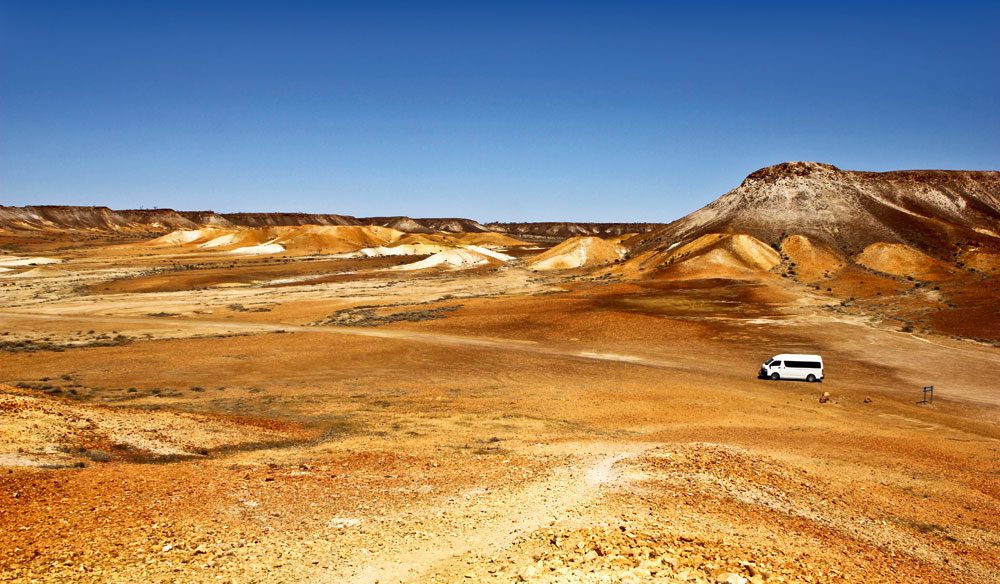
The painted hills in the rugged Breakaways in SA is a recently discovered phenomenon in the SA outback.
“We get people through here who’ve seen the Grand Canyon, who’ve been to Uluru and the Bungle Bungles, and they reckon this is better than the whole lot.”
That’s the word from Wrightsair’s Trevor Wright, who conducts flying tours to SA’s newest – and by the sounds of it most spectacular – natural attraction: the Painted Hills. They’re part of a recently discovered 30km by 10km section of the extraordinary Breakaways country in SA’s far north, and take the form of brilliantly coloured rocky outcrops of large and small hills rising suddenly from the flat surrounding desert.
And while interest is skyrocketing, locals remain firm about preserving this treasure. Channel Seven wanted to shoot a Great Outdoors segment from the ground around the hills and were told to “pack their bags and go home,” according to Wright.
“Only 400-500 people have even seen them so far,” he adds. “You’ve got to fly over three deserts just to get there, the land’s about 50 million years old, there are no roads, no walkways, no camping areas – and that’s the way it’s going to stay. That’s why it’s in such amazing condition, because it hasn’t been ruined yet. And hopefully it never will.”
WHERE // Accessed by air only, via Wrightsair, departing from William Creek 168km east of Coober Pedy. More info on (08) 8670 7962 or at www.wrightsair.com.au
DID YOU KNOW? // While pastoralists in the area have no doubt known of their existence for some time, the Painted Hills were brought to light only in 2006, by a local pilot on an inspection run. Their exact location remains a tightly guarded secret.

Visiting the Australian Garden at Cranbourne VIC allows you to understand Australia’s biodiversity across multiple climates.
Get rid of all those exotic flowers and plants! Enrich your own home garden with native Australian plants and design and save water at the same time. Don’t know how? Find out at the colourful, award winning and inspiring Australian Garden at the Royal Botanic Gardens Cranbourne, a division of the Royal Botanic Gardens Melbourne.
Begin your journey at the expansive and vibrant red sand garden, wander through whispering gums and breathe in the familiar scents of the eucalypts. Walk the Rockpool Waterway, learn about arid gardens and imagine water in the dry riverbed. Enjoy Australian flora, landscape, art and architecture all in one place. Be amazed in the Future Garden and learn about the artificial manipulation of plants.
Everything in the young Australian Garden is connected to typical or unique Australian plants and related to water conservation; 15 landscape displays and exhibition gardens with 100,000 plants are waiting for your exploration and will help to finally dispel the myth that Australia is a big empty country.
WHERE // Royal Botanic Gardens Cranbourne, 50min southeast from Melbourne’s CBD. Cost $9 adult, kids free. More info on (03) 9252 2494 or at www.rbg.vic.gov.au
DID YOU KNOW? // The Australian Garden celebrated its first birthday on Monday May 28 and was recently named top new tourist development in Australia in the 2006 Qantas Australian Tourism Awards.
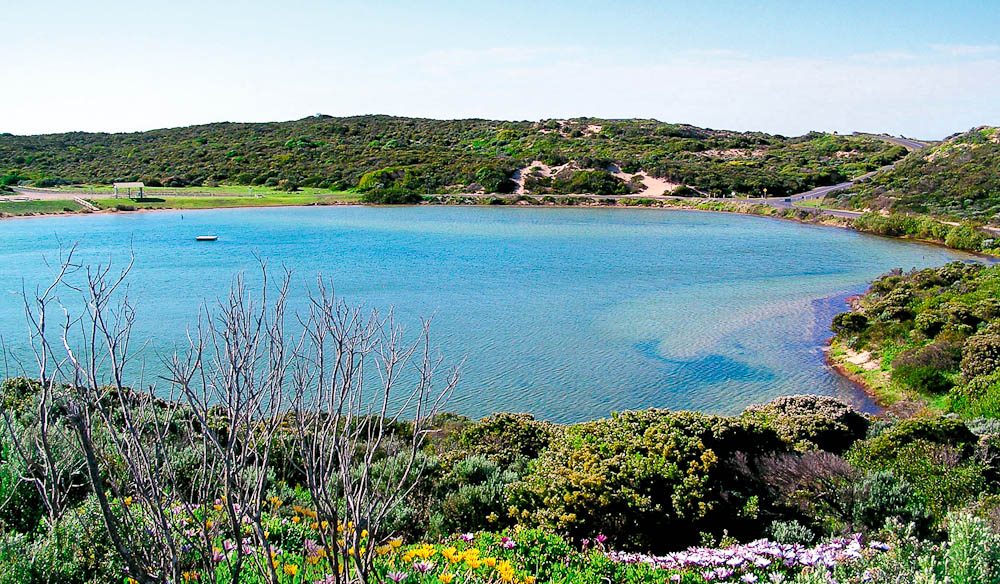
This odd body of water purports not only to have a salinity content seven times that of the ocean, but is also rumoured to boast curious healing powers.
Could this be Australia’s answer to the Dead Sea? Travel all the way to the tiny SA seaside town of Beachport on Rivoli Bay on the extremely pretty Bowman Scenic Drive and you’ll find the mysterious Pool of Siloam.
This odd body of water purports not only to have a salinity content seven times that of the ocean, but is also rumoured to boast curious healing powers. Don’t confuse this particular floating attraction with the biblical Pool of Siloam, near which Jesus is said to have famously cured a man blind since birth.
“FOR THOSE WANTING A TRULY HEALING EXPERIENCE.” – Sandra Sully
This Pool of Siloam, although named for its more famous cousin just outside the walls of Jerusalem’s Old City, makes slightly less dramatic claims: certain elderly residents of nearby towns along the Limestone Coast recommend carrying buckets of the pool’s water home to warm up and soak in, in order to ease various mild ailments.
The pool is fed by underground springs, which means the water level isn’t effected by the nearby ocean – you can bob about, reading a book, at any time of the day or night. And an early morning swim (even if you’re a non-swimmer, since the salt content means you can happily float on the surface) when the water’s glassy, there’s not another person in sight and you’re accompanied only by the sound of the birds singing is surely heaven on Earth.
WHERE // On the outskirts of Beachport, 385km southeast of Adelaide.
DID YOU KNOW? // According to the International Society for Salt Lake Research (motto: “Whatever floats your boat!”), the actual Dead Sea is the saltiest body of water on Earth at about 8.6 times the salinity of your average ocean.
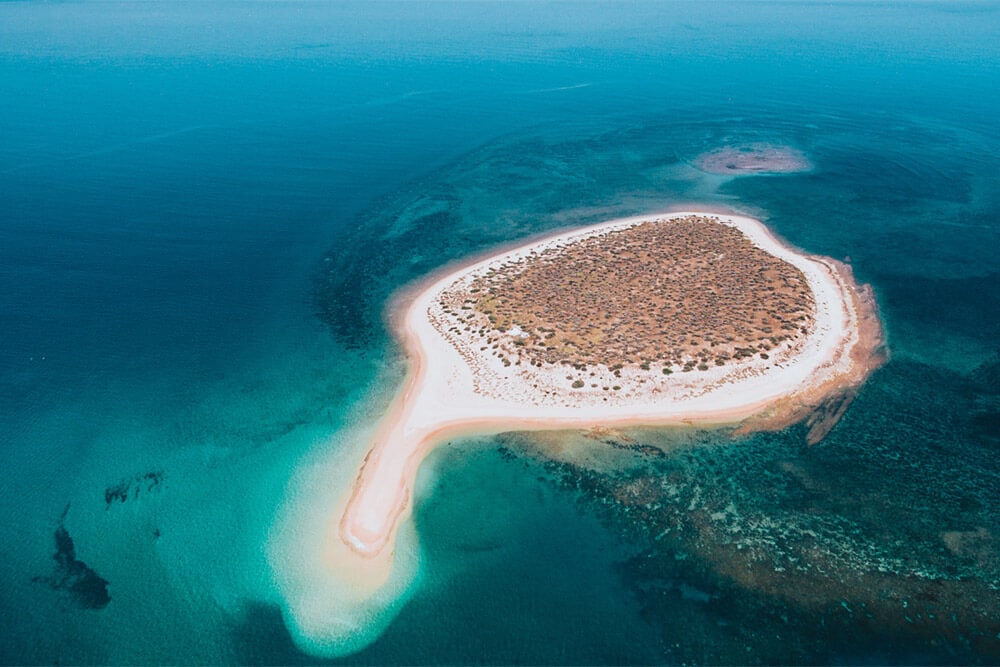
How many places in Australia let you inhabit an island all to yourself? Whether it’s diving, fishing, turtle watching, bird watching or just plain relaxing, the Mackerel Islands in WA’s far north are an ideal destination for the adventurous or the weary.
Of the ten islands that make up the Mackerel group, two provide lodgings: Thevenard Island and Direction Island. Direction is a small island with its own reef and just one cabin, allowing you to live out your wildest Robinson Crusoe dream, but with friends and family.
World-class coral reefs, turquoise waters, a huge range of colourful reef fish and coral formations – and some of the best fishing the world has to offer. Lose yourself on Mackerel.
WHERE // WA’s Pilbara region, 22km offshore from Onslow. (08) 9184 6444 or www.mackerelislands.com.au for more info.
DID YOU KNOW? // On the road into Onslow, the mainland drop-off point for the Mackerel Islands, you’ll see thousands of termite mounds of varying sizes. During sunrise and sunset they’re almost glowing, with a dusty pink sky in the background.
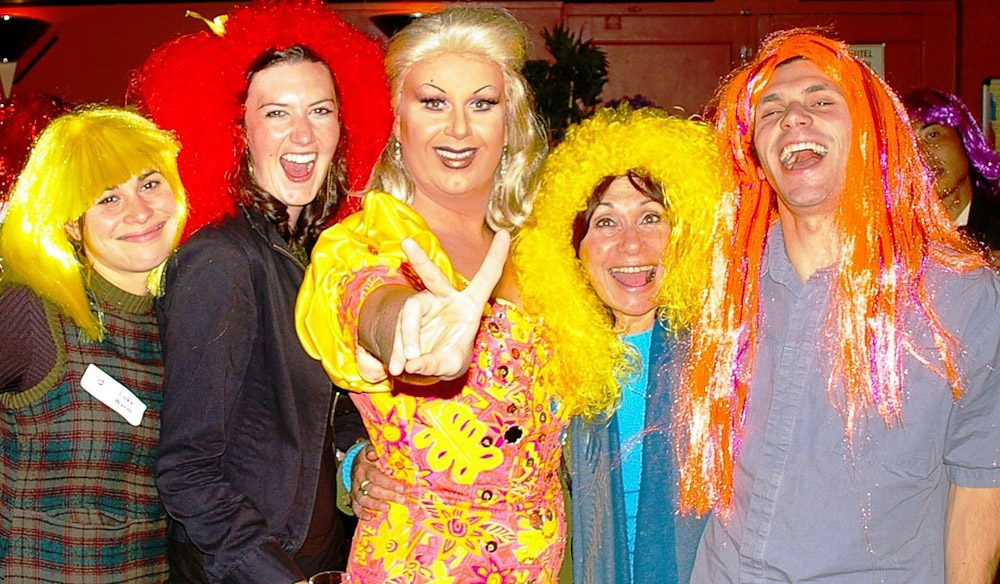
Tours by Diva tours lead you to many of the common attractions (and some you won’t have been to) but with a commentary and history that is as interesting as it is hilarious.
You think you know Sydney. Bridge, Opera House, Manly, Bondi . . . but that’s just the beginning. For the greatest insight into the rest of Sydney and its history, you need to have Portia guide you.
Tours by Diva tours lead you to many of the common attractions (and some you won’t have been to) but with a commentary and history that is as interesting as it is hilarious. On boarding the tour bus, your guide (famous Australian female impersonator Portia) is very worried about your safety, so everyone dons the protective headgear: a wig even Terence Stamp would have balked at. Have some bubbles and sushi on Mrs Macquarie’s Chair and hear all about how Flinders and Bass were “very close friends.” (“But still called it Bass Straight,” purrs Portia.)
“I LAUGHED SO MUCH MY CHEEKS HURT. THIS IS ONE OF MY ALL-TIME FAVOURITE TOURS!” – Catriona Rowntree
And no tour would be complete without a visit to the Imperial Hotel, made famous by Priscilla Queen of the Desert.
Portia is the actual muse for Guy Pearce’s character and she has you in stitches over waking up to Pearce’s antics when picking through her room to research his character. The finale is the entire group on stage at the Imperial. Now that’s a tour.
WHERE // Usual pick up is Kinsellas, but for group bookings they will start the tour “pretty much anywhere”. https://www.easyweddings.com.au/HensParty/Sydney/ToursByDiva/ for more info. or call on 02 9310 0200
DID YOU KNOW? // The bus from Priscilla Queen of the Desert once belonged to well known Australian band The Whitlams, who toured in it unaware that it would soon be such a global icon.
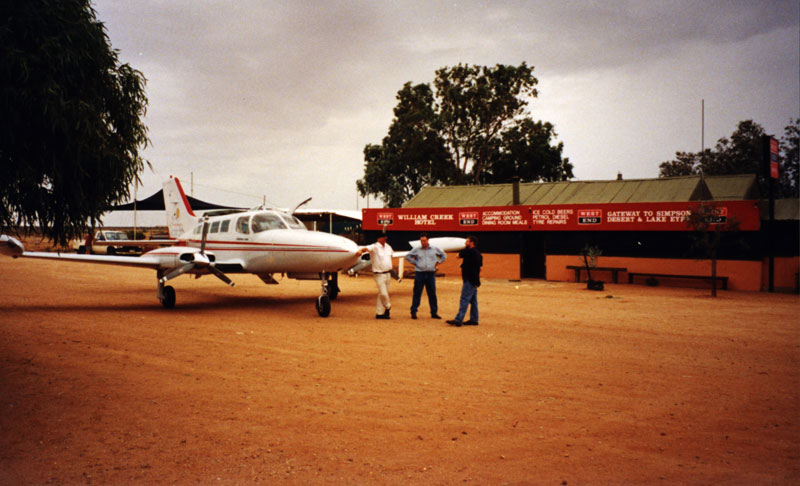
No-one’s averse to a pub-crawl. It’s practically what made this nation great. And forget riding through history on the sheep’s back – a South Australian tour operator has taken the Aussie Pub-Crawl and given it wings.
As they rather accurately point out: “It’s 500km between hotels, so your ‘designated driver’ is a pilot.”
Taking in some of the iconic – as well as unheard-of – destinations in the deep outback, this is a four-day odyssey through spectacular scenery.
“WITH GREAT FRIENDS AND TIME TO SPARE, WHAT A HOOT! I ONLY HOPE MY LIVER COPES.” – Sandra Sully
The Flinders Ranges and magnificent Wilpena Pound from the air, over Lake Torrens and the opal mining area of Andamooka, on to William Creek and her famous Hotel, then into Queensland to Birdsville and her even more famous Hotel, as well as Innamincka, the Burke and Wills Dig Tree and heaps more – half from the air, half from the ground via 4WD, passing through three states in all.
It’s basically a four-day journey from remote pub to remote pub in your own private aircraft, with loads of rugged terrain, history and outback culture to fill in the gaps. A truly unique way to see Australia.
WHERE // Banksia Adventures’ tours take in areas across three states: SA, NSW and Qld. (08) 8431 9311 or www.banksia-adventures.com.au.
DID YOU KNOW? // William Creek is SA’s smallest town (average population: 10) and is surrounded by one of Australia’s biggest cattle properties, Anna Creek Station, which is almost half the size of Tasmania.
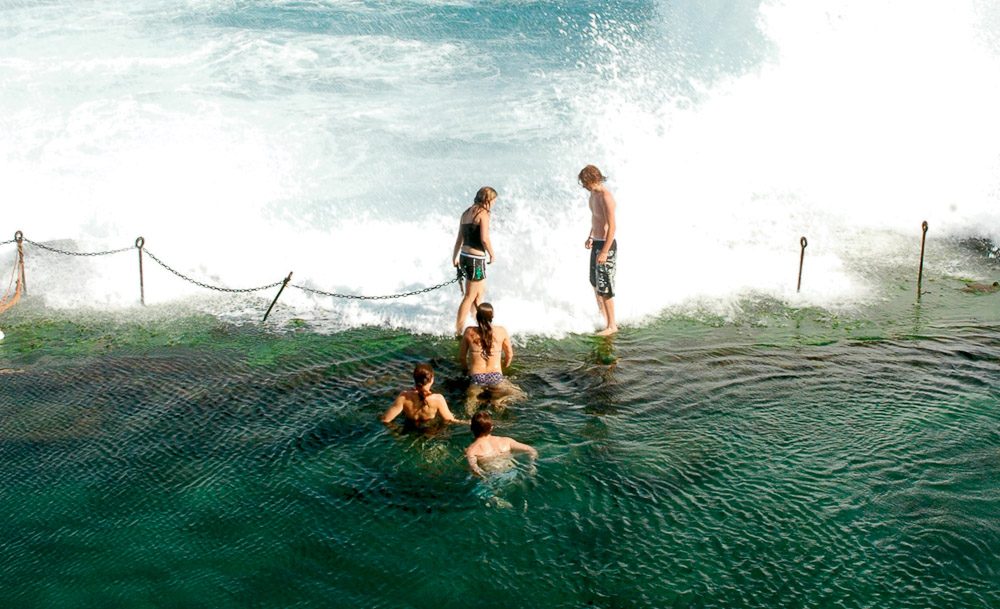
The Bogey Hole in Newcastle is not just your average rock pool. Convicts carved it from the ocean rock wall in a stunning effort in the 1820s.
James Thomas Morisset, Commandant of Newcastle from 1819 to 1822, ordered the construction but decided he didn’t want to share and had it made as his personal rocky ocean bathtub – which was why it was called Commandants Baths for many years.
“THIS WAS MY LOCAL SWIMMING HOLE GROWING UP. FANTASTIC WITH THE WAVES CRASHING OVER THE ROCK WALLS AND AWESOME ON NEW YEARS DAY WITH A BEER.” – Michelle Hespe
Luckily for us, it’s been a public pool since 1863, and was renamed after the Aboriginal Dharug word bugi: to bathe. As you stand and watch the waves smashing into the pool, you can picture what it must have been like to quarry it manually from the rocks, standing deep in troubled water.
Especially since the rocks in the area are a sandstone-conglomerate and considered stubbornly hard.
WHERE // Newcastle, 160km north of Sydney. The pool is at the foot of Shepherds Hill, beneath King Edward Park.
DID YOU KNOW? // Newcastle is the seventh largest city in Australia and is the largest city that’s not a state or federal capital. It’s known for its convict tracks all around the area, such as the site of the former Convict Lumber Yards, the oldest surviving example of a convict industrial site.
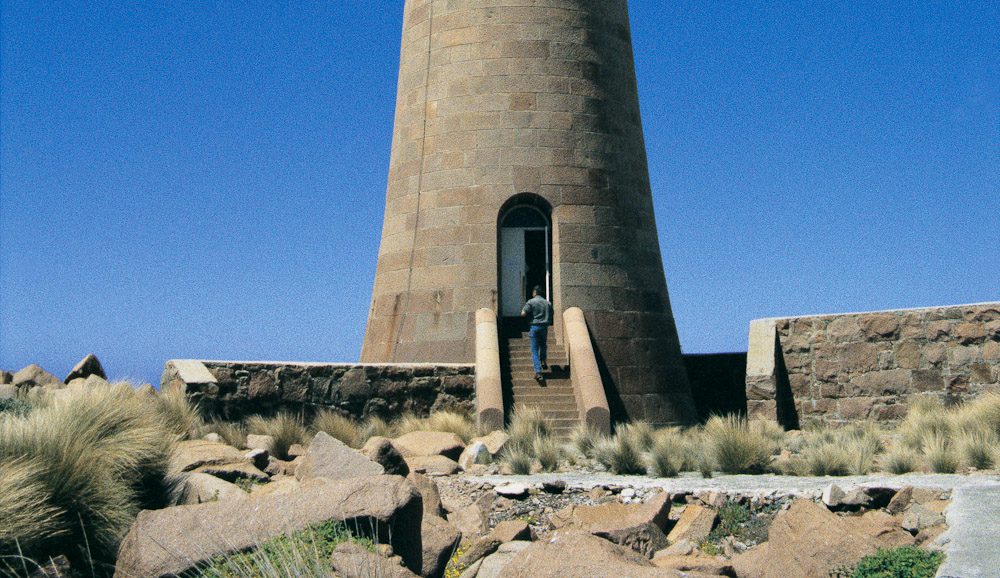
It reaches up 47m into the sky and is Australia’s second-tallest lighthouse.
Gabo Island Lightstation has a graceful appearance with its slim granite tower and was finished in 1862 after several ships sank around the islands, including the Monumental City in 1853 with a loss of 30 people. (A monument on Gabo remains.)
“A GREAT GROUP GETAWAY AND A PERFECT PLACE TO SEE PENGUINS UP CLOSE.” – Lee Atkinson
Gabo Island itself has some astonishing features too: it’s home to the largest colony of Little Penguins on earth, it’s a wonderful vantage point from which to watch seals and whales in their natural habitat, and it’s only accessible by plane or boat, lying a mere 500m off Croajingalong National Park in Bass Strait.
Visitors can stay overnight in the assistant lightkeeper’s quarters, which has three bedrooms and can be a solitary hideout for up to eight. Enjoy spectacular views, watch Little Penguins toddling up the shore, dive to the wrecks, catch your own fish and feel like a lighthouse keeper for a wonderful while.
WHERE // Gabo Island is 500m offshore from Croajingalong National Park between Mallacoota and Cape Howe on the NSW/VIC border.
DID YOU KNOW? // Australia’s tallest lighthouse tower is off Cape Wickham in Tasmania. Frustratingly, it’s only one metre taller than the one on Gabo Island.
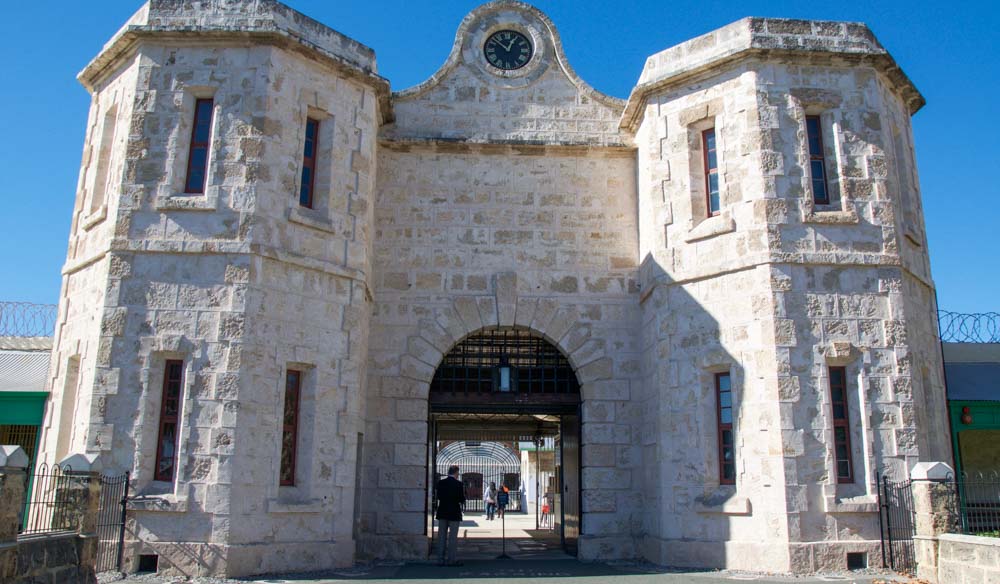
The Fremantle Prison Tunnel Tours are the latest in “soft” adventure. Donning overalls, hardhat, boots and a miners’ lamp, the 2.5hr tour is an enthralling experience.
Just like Venice . . . but underground! Well, almost. The Fremantle Prison Tunnel Tours are the latest in “soft” adventure. Donning overalls, hardhat, boots and a miners’ lamp, the 2.5hr tour is an enthralling experience.
The first hour is spent on the history of the prison, the tunnels important early function as the key water supply for the parched community and a safety briefing and alcohol breath test.
The first step into the chambers (from which you’ll descend 20m underground) is just a grill over one of the original wells – just don’t look down. The first 20min underground are spent walking stooped around the tunnels until you arrive at the waterways.
Then, in pairs, you hop into punts for 30min of navigating the water tunnels. Fossil shells, tree roots and convict inscriptions are just part of the fascinating journey on this underground mini-trek.
WHERE // Fremantle Prison Tours, Fremantle Prison, The Terrace, Fremantle, WA.
DID YOU KNOW? // Fremantle was a settled by free men and women and only became a penal colony when they needed labour to expand the community’s infrastructure.

Swimming with sharks is so last year. In what is the future of sustainable tourism, there are four tours where divers take part in important scientific research like tagging sharks.
Swimming with sharks? So last year. This year you have to catch them. In what is the future of sustainable tourism, there are four tours to the very northern section of The Reef where divers take part in important scientific research like tagging sharks.
And, because it’s scientific research conducted by Undersea Explorer in conjunction with the CSIRO, 20 lucky divers are taken to places that are absolutely off limits to regular tourists.
The first two days are spent in and around Raine Island, the largest Green Turtle rookery in the world, 280km from the tip of Cape York. In one night, around 20,000 turtles come ashore to lay eggs.
Considering the island is only 32ha in total, with the majority of it shrubbery and of no interest to turtles, that’s more than one turtle for every square meter. And baby turtles bring sharks. Where you come in is with the tagging of the sharks, the purpose of which is to find the range and habits of the tiger shark.
Lead scientist Richard Fitzpatrick is on hand to explain what’s happening above and below the surface on up to four dives a day in this most remote and truly untouched area of the reef.
WHERE // 280km from the tip of Cape York. You can get a flight from Cairns with Undersea Explorer.
DID YOU KNOW? // In 1791, in what could be construed as ironic, the ship sent to pursue the mutineers of the Bounty, the HMS Pandora, came to grief just north of Raine Island.
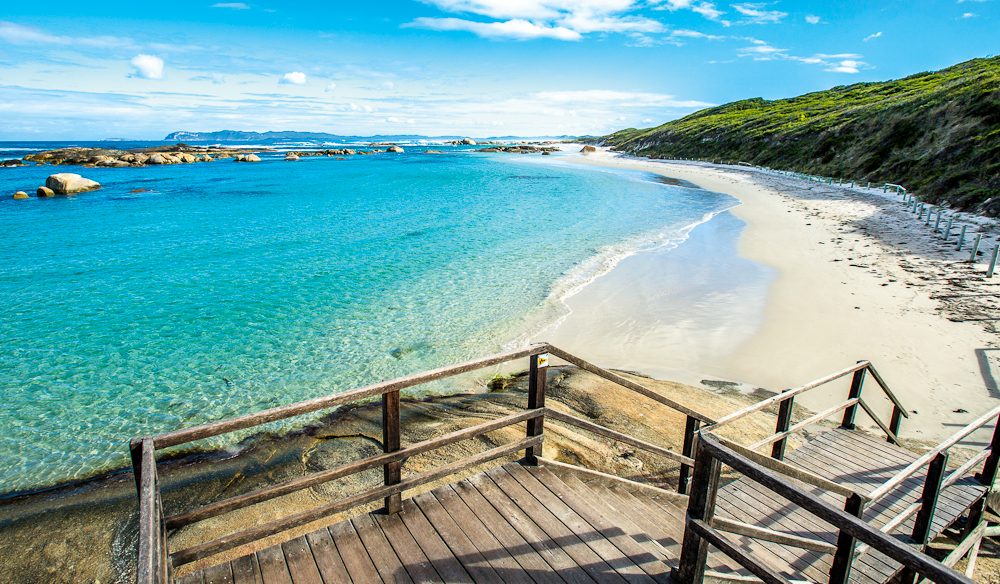
Greens Pool is one of Australia’s best places to swim and has made our list of the “100 Great Australian Things To Do In Australia You’ve Never Heard Of”.
Live anywhere outside of WA and you’re unlikely to have heard of Greens Pool. It’s just one of the natural coastal jewels Australia is home to in their hundreds – cool, crystal clear waters tending towards emerald with the weather and seasons’ ebb and flow.
A cove protected from the elements by a cosy sheltering barrier of granite. Interesting rock formations and rock pools nearby for examining (and being examined by) tiny crabs, anemones and other coastal-dwelling oddities.
Soft sands. A crescent shoreline. Tiny islands just offshore to contemplate. A haven, safe for swimming and snorkelling for all ages, in full view of the larger, mightier ocean.
These secretive pools are dotted all along Australia’s coast, and with 7000 beaches in all, we’ve chosen Greens Pool as just one example among many.
Just a little further to the east of Greens Pool lies another special cove, Elephant Rocks, so named because of the reddish elephantine boulders strewn everywhere that take on the appearance of a lumbering herd – a real photographers’ favourite against the deep blues and greens.
WHERE // Denmark is 45mins drive west of Albany on WA’s southwest coast, and Greens Pool itself lies a further 20min west of that, at the end of a track running right through William Bay National Park to the beach.
DID YOU KNOW? // William Bay NP is one of the areas in which blue-flowered lobelia plants are found. They’re also in New Zealand, South Africa and South America – just one of the pieces of evidence that point to Australia once being part of the ancient southern “supercontinent” of Gondwanaland.

Peter Rowe has one of the world’s biggest mail runs, and you are welcome along for the ride.
Peter Rowe delivers the mail in outback SA with nary a dog in sight – a 620km round trip in all. And you’re welcome to come along for the ride.
“The business people keep telling me to get a bigger bus,” says the sardonic Rowe, who commences his run twice weekly from Coober Pedy. “But I don’t want that. I want to share the history of this place with my passengers. Plus it’s just such a big responsibility.”
“EVERY TRUE BLUE AUSSIE SHOULD DO THIS TO APPRECIATE HOW VAST OUR COUNTRY REALLY IS.” – Chris Smith
Rowe and his son Dave do the run in air-conditioned 4WD buses that hold a maximum of 13 people. And it’s often full because it’s just so different to any other sort of bus tour. The tour follows the footsteps (in many places) of John McDouall Stuart, the man who did what Burke and Wills couldn’t. (No members of his expedition died in their conquest of the interior.)
And Peter is keen to share his knowledge of this region with anyone who wants to do the mail run with him. “Mate, people talk about Kakadu and Uluru and all that stuff, but I reckon there’s more fascinating history in this region than all those others combined.”
WHERE // Departs Coober Pedy 9am Monday and Thursday. All you need is a camera, sunscreen and a bloody big hat. Cost $185 per person, (08) 8672 5226 or www.desertdiversity.com for more info.
DID YOU KNOW? // It was Stuart’s conquest of our arid interior in 1862 that finally allowed Australia to be connected to the rest of the world via the telegraph. Within ten years of Stuart’s return from his final expedition, a line had been strung from Darwin to Port Augusta, effectively connecting Australia’s eastern seaboard with the rest of the world.

It’s a long way down – actually you’ll never find a longer sheer drop from a waterfall in the rest of Australia. Like all biggest and best in Australia, the fine print is important.
Wallaman Falls just west of Ingham in Queensland represent the largest single drop waterfall in Australia at around 305m. So, in terms of impressive waterfalls, this is Australia’s granddaddy.
“THIS IS ONE WATERFALL THAT’S WELL WORTH THE DETOUR FROM THE MAIN ROAD.” – Richard I’Anson
There are very well situated platforms for waterfall watching but to get right into the spirit of things, take the 45min walking track down to the base of the falls; just expect to get a little wet.
And, for the adventurous, brave a swim in the chilly swimming hole. The waterfall is best from about December to March but actually flows year-round. And make sure while you walk to look up – the area is home to the very shy and threatened Lumholtz Tree Kangaroo, a tiny little thing that spends its days in very koala-like fashion, sleeping in the trees.
WHERE // 51km southwest of Ingham, 35km of which is unsealed road. It’s well signposted and most conventional cars can make the journey. Cassowaries are not unknown on the road so be careful.
DID YOU KNOW? // While there are 12 species of Tree Kangaroo, only two are found in Australia: the Lumholtz and Bennett’s. The remaining ten are indigenous to New Guinea.
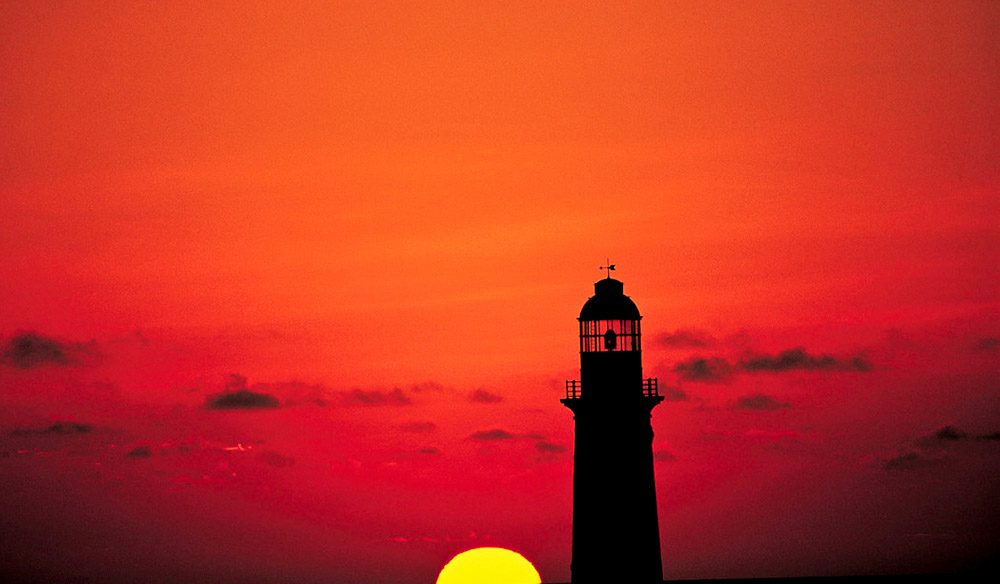
Harsh conditions and rocky shores surrounding Kangaroo Island have been the cause for many shipwrecks and lives lost, and today three of the lighthouses dotted around the island offer heritage accommodation in the original keepers’ cottages.
These absolute beauties are budget friendly, cosily appointed and magnificently positioned. Constructed from 2000 individual pieces of local stone, the National Heritage-Listed Cape du Couedic with its whitewashed look has trim little cottages to rent.
The impressive Admirals Arch is right before it and Remarkable Rocks just a short drive away. What was once an isolated lighthouse now graces the main sightseeing drag of the island, which by world standards is still far-flung.
Dudley Peninsula to the far east of the island is home to the squat 155-year-old Cape Willoughby lighthouse, with quaint red-roofed accommodation charming to some, a little too twee for others.
“UNIQUE ACCOMMODATION IN A BRILLIANT SETTING. YOU’LL DEFINITELY FEEL LIKE YOU’VE GOTTEN AWAY FROM IT ALL.” – Richard I’Anson
One of the three cottages acts as a museum, while the spacious Seymour Cottage is a royal treasure to stay at (it’s fitted with a porcelain antique bathtub, every girl’s delight). The third keepers’ quarters is at Cape Borda, the only square lighthouse in SA.
It retains a Deville lantern room (one of only three in Australia to do so) and is home to a mini canon for defence and for sounding in especially heavy fog. Today the canon fires away daily – just another interesting element of your day as a lighthouse keeper.
WHERE // Cape Willoughby lighthouse is on the easternmost point of Kangaroo Island, Cape Borda lighthouse is on the northwest on the top edge of Flinders Chase NP, and Cape du Couedic is on the southwest edge.
DID YOU KNOW? // On the day Cape du Couedic opened, the weather was so bad that the ship carrying the official “switching on” party wasn’t able to land – so the ceremony was carried out remotely via signals while the ship hovered offshore.
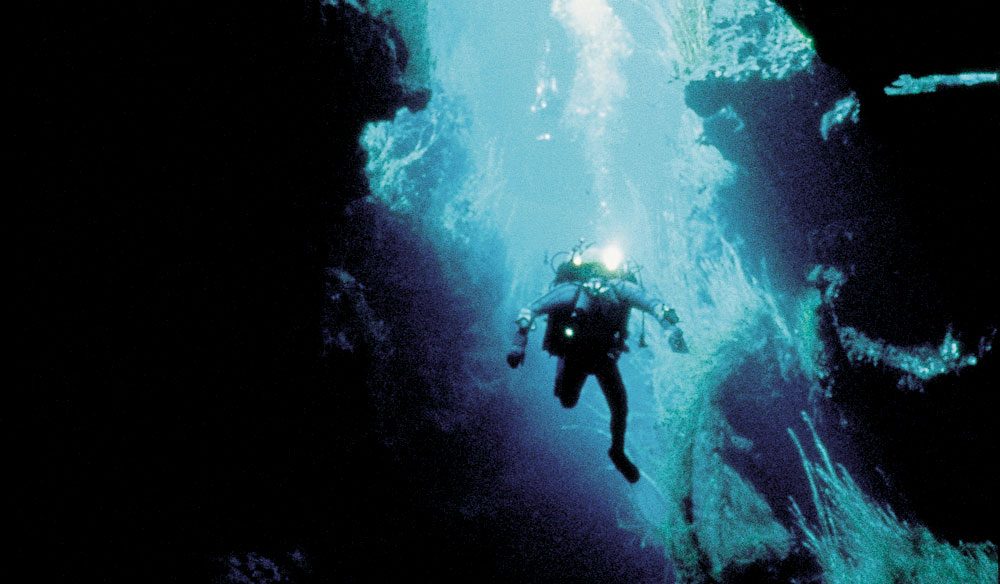
The Piccaninnie Ponds on the Limestone Coast have the purest cleanest waters in the world – dive right in.
South Australia’s Limestone Coast is home to more than 140 caverns, caves and sinkholes that are attracting considerable attention from the world’s diving community.
Visibility in these waters can often extend for more than 40m – extremely unusual for underground cave systems and chasms – making this one of the most spectacular sites in the country, if not the world. And it’s that clarity of water that draws divers from all over the planet.
According to the UK’s best cave diving explorer Martyn Farr: “The exceptional visibility in the Mount Gambier region comes about because the waters that emerge at Piccaninnie and Ewens Ponds, close to the coast, are drawn from a vast area of limestone which is very sparsely populated. This 14°C water is almost certainly the purest, clearest water on Earth.”
“YOU’D HAVE TO BE BRAVE BUT IF YOU HAVE THE COURAGE AND ARE WILD ABOUT ADVENTURE, THIS SOUNDS FANTASTIC.” – Sandra Sully
And Piccaninnie and Ewens are just two of the prime attractions.
There’s also Tank Cave, Australia’s longest submerged cave system at more than 7km, the famous Shaft, a monster cave lurking beneath a nondescript 1m hole in a grassy field in the middle of nowhere (like descending through a shoulder-width hole into a below-ground airplane hangar), and the far more dangerous and intricate passageways of Engelbrecht Cave beneath the very town of Mount Gambier itself.
But it’s Piccaninnie that’s perhaps the surprise experience of the region: a small, purpose-built pontoon hovers over a fairly calm pond-like area, which then leads to a natural drop-off to nowhere.
A sheer Chasm in which other divers can clearly be seen 36m below at the safety point, bubbles winding their urgent, erratic way to the surface, before the trench disappears for a further bone-chilling 85m.This is not a dive for the faint-hearted, and permits and guides are required for all dives in the area.
WHERE // Mount Gambier is in SA’s far southeast, near the Victorian border. The entrance to The Shaft is in a field around 3km west of Allendale East, while Piccaninnie Ponds is 30km further southeast near Port MacDonnell.
DID YOU KNOW? // SCUBA diving aside, it’s possible to snorkel (with a permit) at Piccaninnie Ponds – and other spots on the Limestone Coast – which means even the casual swimmer can float above The Chasm and peer into her eerie depths .
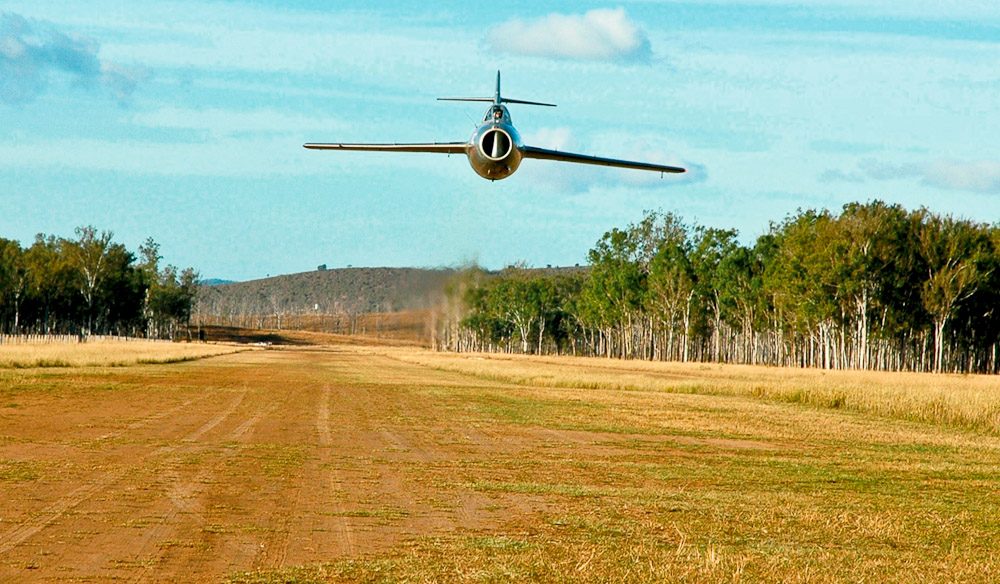
The ride of your life at Rockhampton Airport
Ever since Top Gun roared across cinema screens in 1986, there’s been a certain sector of the community (loosely defined as “males”) that has wondered what it’d be like to take that highway to the danger zone and flick round the sky at 1000km/h.
It’s a dream that’s beyond all but a tiny, tiny fraction of society. Unless you count the experience offered by Mig Jet Adventures, which allows you to come aboard a Polish-built MiG 15 for the ride of your life.
“We begin the experience with a brief history of the aircraft and its previous life when it engaged Sabre jets over Korea,” says pilot and owner Richard McDonald.
The purpose-built USSR combat MiG 15’s top speed is 1170km/h. With a wingspan of only 10m, you feel as though you’re strapped to a missile.
“It’s basically one enormous turbine engine,” adds McDonald.
Full Monty packages (an all-out thrill ride) are $2300, which buys you 25min of flight time and an hour of prep. Most of the high-speed cruising and aerobatic manoeuvres are done off the coast near Great Keppel Island – 25km away from Rockhampton, which takes about 60sec to reach.
Once you’ve wrapped your head around that, we suggest you decline the free tea and coffee offered. Unless you’d like to be wearing it at some point during the flight.
WHERE // From Rockhampton Airport in Qld. (07) 4921 1525 or http://migjet.com.au/
DID YOU KNOW? // Top Gun was riddled with tiny errors. Eg: when you take a Mig Jet flight, please don’t embarrass yourself by calling everything a “bogey” like they do in the movie. A bogey is an unidentified aircraft that, once identified, is either a “friendly”, a “bandit” (non-friendly) or a “hostile” (non-friendly that may be fired at).
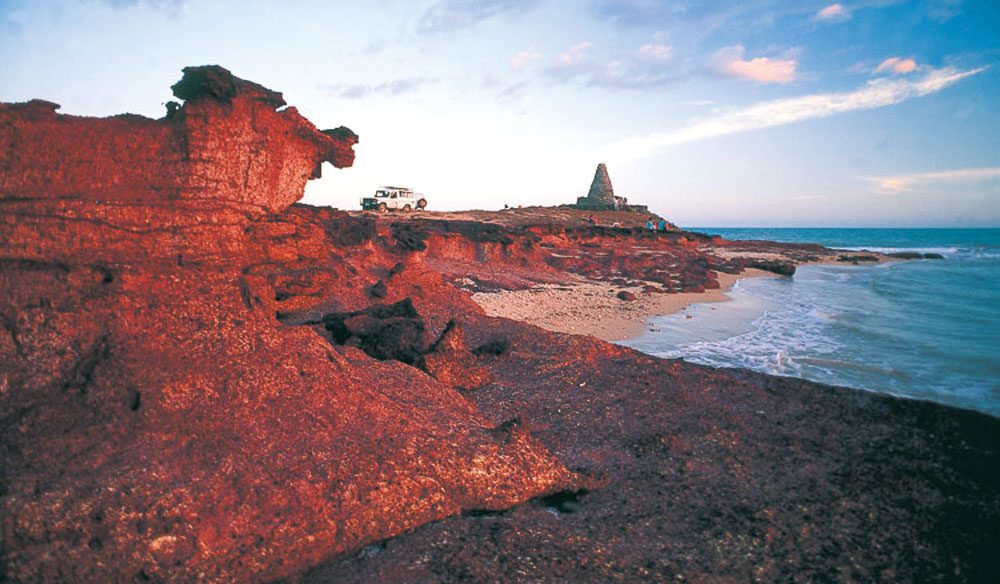
The most remote part of Australia, the Cobourg Peninsula in Northern Territory.
The Cobourg Peninsula is as remote as it gets. Most people fly into one of the wilderness resorts, which means you miss out on the adventure of driving across the great wild expanse of Arnhem Land, where the world’s largest remaining wild herds of Banteng roam the monsoon forests and crocodiles watch as you splash your way through rocky creeks.
The Garig Ganuk Barlu National and Marine Park includes the entire peninsula, and was the first area in the world to be listed by the Ramsar Convention, which ensures the conservation of important wetlands. It’s also the site of the Victoria Settlement ruins, perhaps the first serious European settlement attempt in northern Australia.
The breathtaking coastline is home to some of the world’s best – and most exclusive – fishing spots, since access to the area is extremely limited. One good way to experience this special area is with Venture North, which operates tours from Darwin and Jabiru. This really does feel like the ends of the Earth.
Where Around 570km northeast of Darwin on the Cobourg Peninsula. Venture North tours depart from Darwin and Jabiru (www.northernaustralia.com).
Did you know? NT consists of 95 different protected areas within 53,505km2. Ten are National Parks, four are Aboriginal National Parks and four more are Commonwealth National Parks.

Flames of the Forest, traditional Aboriginal meal
The smells and sounds of the rainforest at night, thousands of twinkling candles, friendly company, a fabulous three-course meal, Hors d’oeuvres and champagne on arrival and a private Aboriginal storytelling . . . what could be more magical?
The atmosphere alone of dining under a protective covering, with a Port Douglas rainforest canopy above that and only stars beyond, is amazing enough. But this is the perfect mix of theatre, spectacular nature and nocturnal animal life, storytelling and socialising, with a rippling mountain creek close by.
“GET THE WEATHER WRONG AND YOU’D BE AS HAPPY AS A SOCK. BUT WHEN IT’S GOOD, THIS IS TRULY MAGICAL.” – Catriona Rowntree
It truly is food for your soul, satisfaction for all senses and a unique hideout from the rest of the world. Flames of the Forest will be an unforgettable memory at an extraordinary natural venue.
WHERE // 15min from Port Douglas, 40min from Palm Cove and 1hr from Cairns in Mossman, Tropical North Queensland. $184 per person all inclusive, (07) 4099 3144 or www.flamesoftheforest.com.au for more info.
DID YOU KNOW? // For every person who signs their guestbook, Flames of the Forest plants a tree. To date they’ve planted more than 10,000 to help reforest the local area.
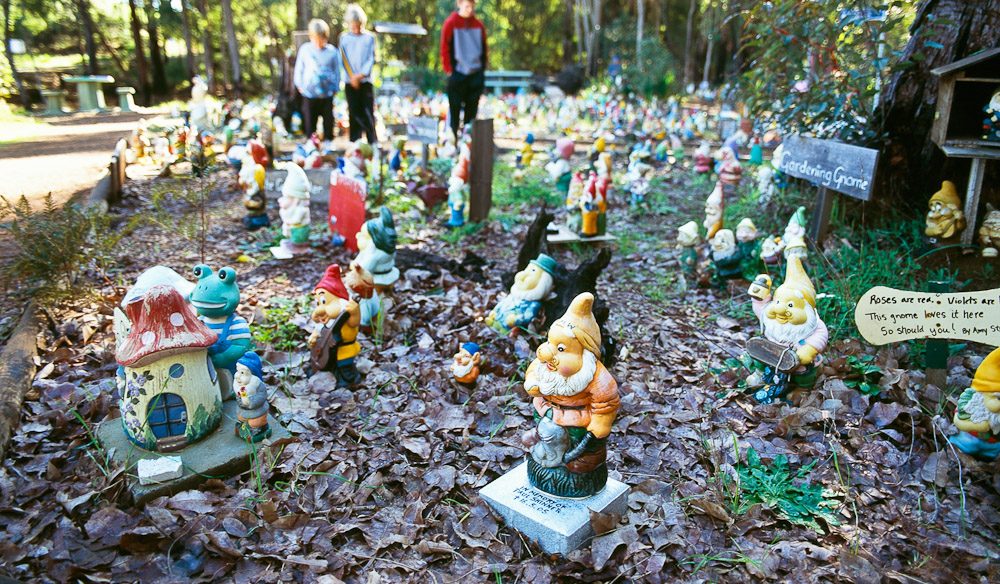
Gnomesville, the City of Gnomes
From humble and mysterious beginnings more than a decade ago (no-one knows for sure who started it), what was once a couple of meek lawn ornaments plonked onto a roundabout near Dardanup in southwest WA has grown into a sprawling citadel, a virtual world of more than 1000 roadside gnomes.
Garden variety gnomes, sports-playing gnomes, fishing gnomes, partying gnomes from all corners of the globe – they’re all left here with accompanying names and messages, usually richly pun-related. (Like Greg Gnoman, The Rolling Gnomes, the Gnoman Empire, even Assgnoma Bin Larden in a tiny gnome cave.)
The still-growing gnome community in tiny Ferguson Valley is self-protected by the rumour that incredible bad luck will befall anyone foolish enough to steal from or damage Gnomesville, and in fact wishes are granted to those who add to the collection when they visit.
The trick, when dropping off a portly statuette of your own, is coming up with a gnome-related pun that hasn’t already been taken (a lot harder than you think).
Quite aside from the sheer whimsy involved in visiting Gnomesville, there are several other sites worth checking out, including nearby Wellington National Park, home to the 36m tall King Jarrah Tree, one of the oldest jarrahs in the world at 500 years.
WHERE // Southwest WA, about a 15min drive from Bunbury, near Dardanup, surrounding the roundabout joining Ferguson Rd and Wellington Mill Rd in Ferguson Valley.
DID YOU KNOW? // Vandals (whom AT are officially putting a curse on) once tore a path of destruction through Gnomesville in past years, smashing and decapitating several dozen gnomes. Locals were outraged, Bunbury police were baffled and a reward was offered by the State Emergency Services Volunteer Assoc for their capture.
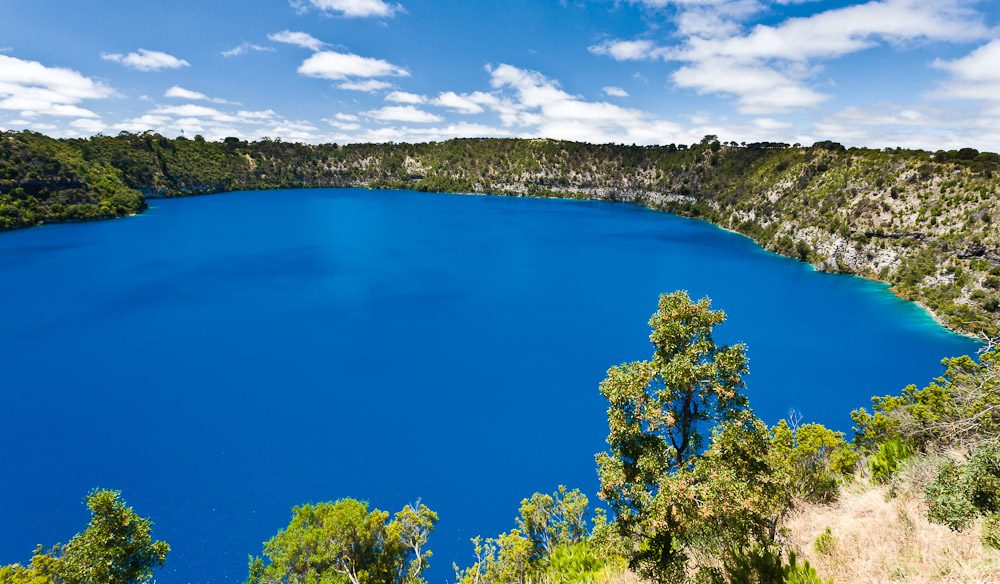
Changing colours of Blue Lake, Mt Gambier
If ever you needed evidence that spring’s arrival is celebrated by the living and the – well, the inanimate, then Mt Gambier has it. Every year as spring arrives, the town’s moody body of water – the Blue Lake – celebrates with a brilliant change of colour.
To see the lake in its two stages is something else, as though you’re at two very different places on Earth. The summer version sparkles like Lake Como, only more Australian. The winter version is a depressed former Soviet state.
During hibernation it’s the Grey/blue Lake. Then, in November, it changes to a brilliant sparkling blue.
Only recently have the lab coats revealed why: organic material clouds the water in winter, then as the water warms, it precipitates a greater amount of calcite, which changes the water pH and organic material levels.
It’s also the main source of water for the town of Mt Gambier, so don’t pack your bathers expecting to have a dip.
WHERE // 450km southeast of Adelaide and 426km west of Melbourne. The Blue Lake is on the southern outskirts of the town.
DID YOU KNOW? // If you needed any further evidence of traditional owners’ length of tenure, the Boadnik people’s oral history of the area alludes to ancestors witnessing the volcanic activity that created the many lakes in the area more than 4000 years ago.
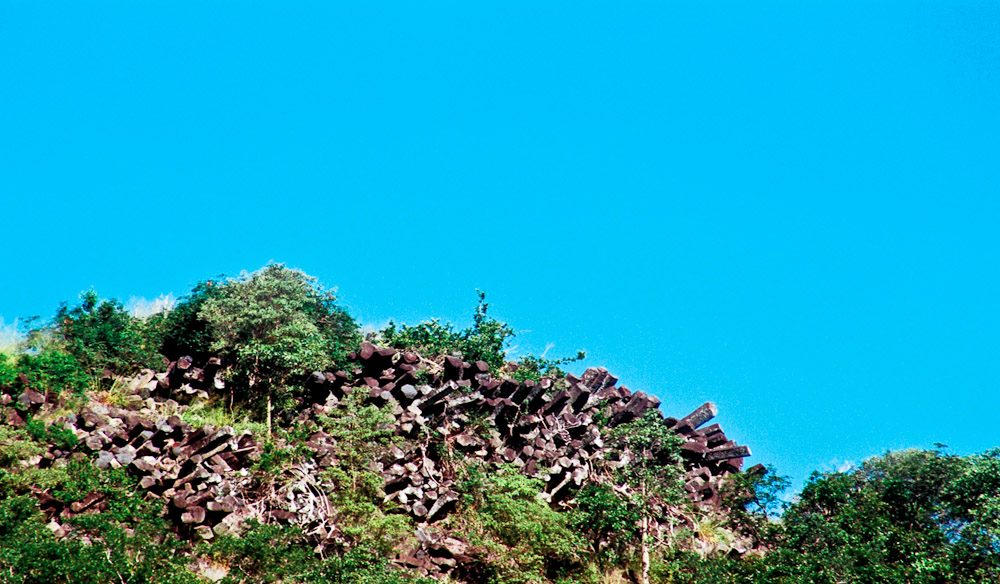
Musical Mount Scoria near Rockhampton
As a famous failed nun turned governess once sang, those hills most certainly are alive with the sound of music. And nowhere is this better expressed than our tiny but impressive hill of Mount Scoria, south of Rockhampton.
Billed as one of only three “musical mountains” in the world, and the only one in the Southern Hemisphere, the 150m high Mount Scoria is a rare, prehistoric rock formation that was the core of a volcano about 25 million years ago.
The curious and interesting thing about Mount Scoria, however, is not its complex volcanic history but the fact that, when struck (carefully, you understand, as this can cause damage), its long, six-sided basalt columns sound musical notes that ring out over the sparsely vegetated plain.
“FOR THOSE SEARCHING FOR TRANQUILITY AND AN UPLIFTING EXPERIENCE.” – Sandra Sully
The diminutive mountain has the distinct appearance of a naturally occurring staircase, reaching up in awkward stages from its 2km base.
It’s also known to be a fierce attractor of the elements – when thunderstorms rage in the area, Mount Scoria’s summit lights up with strike after scorching strike: an incredible experience if you’re in the area in grim weather, since the acoustic quality of the mountain turns regular thunder into a sound show that trembles the very Earth. (Just keep a respectful distance during these times.)
And for those of you keeping score at home, the only two other musical mountains in the world are located off the coast of Scotland and Sicily.
WHERE // Just 12km from Biloela and 127km southwest of Gladstone, Qld.
DID YOU KNOW? // According to the British tabloid The Sun (and imdb.com) The Sound of Music was chosen by BBC execs as a movie to be broadcast after a nuclear strike, to improve morale of survivors. The BBC did not confirm or deny the story, saying, “This is a security issue so we cannot comment.”
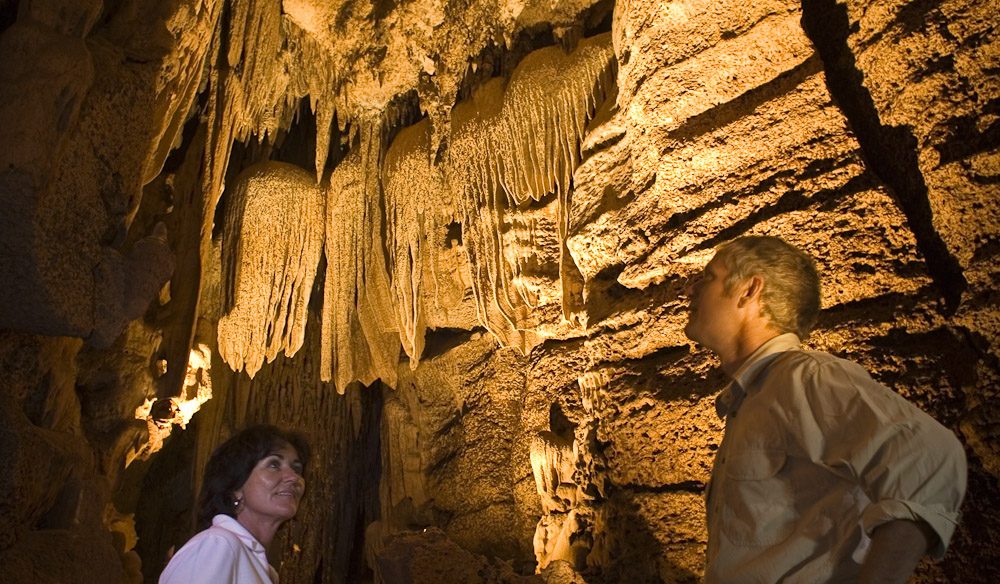
Cutta Cutta Caves and its rare residents
Blind shrimps. Yep, they do exist. In two places in the world: Madagascar and one itty-bitty cave in the NT. Cutta Cutta caves, just south of Katherine, have a lot more going for them but in terms of pure “get outta here” factor, the blind shrimps have it.
The cave system isn’t extensive compared to some of the larger southern states but pack a massive punch for their size and interest.
The blind shrimps share their habitat with two species of rare and endangered bats: the Orange Horseshoe and the more spooky Ghost Bat. Both are incredibly timid, so public access to the system has been limited to leave the poor critters alone.
And to make sure there’s something to spook everyone, the harmless brown tree snake hangs out on the ledges in the cave system.
As you descend the short 15m into the cave you notice the temperature starts to rise; the cave system averages about 35° and humidity hovers at a sweaty 80-90 percent. So while you explore, you can also sauna.
While westerners are spooked by bats and snakes, the stalactites and stalagmites gave the traditional owners of the land, the Jawoyn, the heeby jeebies; they never enter the cave system as they believe that’s where the stars live during the day.
“Star” in the local Jawoyn dialect is Cutta – hence, Cutta Cutta, the cave of many stars.
Where 27km south of Katherine.
Did you know? Cutta Cutta Caves were the site of a World Record attempt – an antisocial Territorian spent 60 continuous days living there in the ’70s to break the world record.
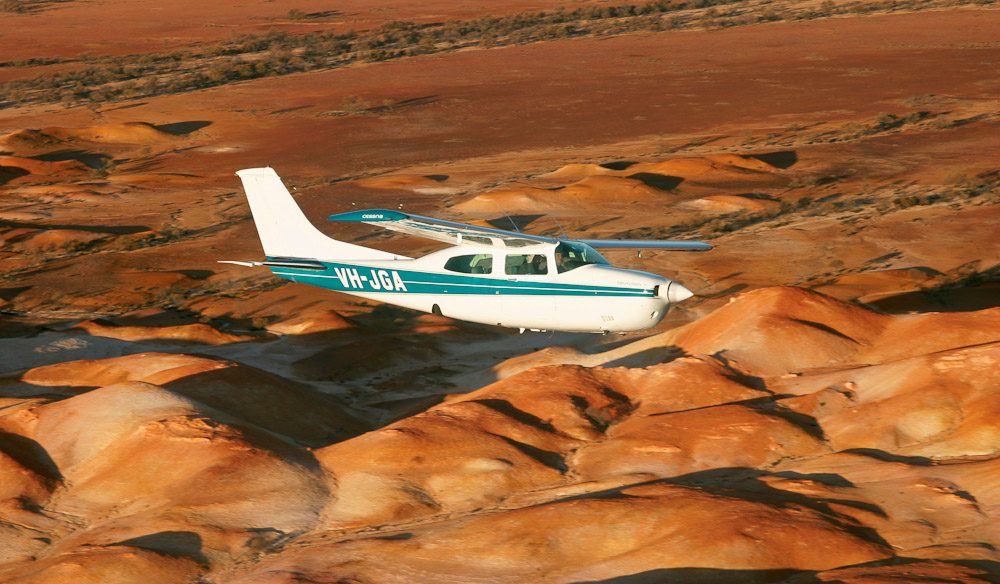
Flying tour to Aboriginal art centres in the Outback
Have you ever been to an art gallery (or, more often, a touristy gift shop), taken a look at the Aboriginal works on display there and wondered to yourself at the – how can we put this – at the authenticity of the pieces?
One great way of knowing for sure that what you’re looking at is the real deal is to take an aerial Aboriginal Art Tour. Fly to incredibly remote outposts to watch works of extraordinary beauty and complexity being produced right before your very eyes.
Trevor Wright from Wrightsair, based in William Creek in outback SA, runs tours to three major art centres, all of which – Ernabella, Fregon (Kaltjiti) and Indulkana – are more than 1300km from Adelaide by road, deep in Anangu Pitjantjatjara lands. Which is why it makes far more sense to fly there.
Once there you’ll have a chance to view artists working in their own environment and to learn about a culture that stretches back more than 3000 generations.
All permits are handled by Wrightsair, who are very passionate about the art and culture of these remote communities, and who point out that buying art direct from the community is incredibly important, as all monies go straight back into that community.
WHERE // Aboriginal Art Tours depart from William Creek, 168km east of Coober Pedy, on Mondays, Wednesdays and Fridays at 8am. Pickups are available from Coober Pedy and Olympic Dam airports. More info on (08) 8670 7962 or at www.wrightsair.com.au
DID YOU KNOW? // The people of the Anangu Pitjantjatjara lands have a strong tradition of contemporary art practices, and in fact Ernabella Arts is thought to be the longest continually running Aboriginal art centre in Australia.

Stay the night in Australia’s most haunted house – Monte Cristo Homestead
Boarding school kids would’ve heard many terrifying ghost stories in their time. But these leave those for dead.
Reg Ryan and wife Olive, owners of Monte Cristo Homestead, have lived at Monte Cristo for 40 years and subjected themselves to a lot over the years.
The presence of others in their home, their children grew up with a man dressed in work clothes peering into their bedroom window, family pets have gone berserk and run away, and the property was once illuminated with lights streaming from every window and doorway of the home – long before electricity was connected in the house.
“ASK AROUND THE GETAWAY OFFICE AND THIS PLACE GETS THE NOD AS THE ULTIMATE SPOOKFEST.” – Catriona Rowntree
Mediums tell of weird and wonderful occurrences from years gone by at Monte Cristo, and for those who dare accommodation is on offer at the beautiful Victorian home, elaborately decorated with cast iron lace and furnished with early 1800s antiques collected from every corner of the globe, some of which are also said to be haunted.
Reg is passionate about his property and if you reckon you’re brave enough to take a nighttime tour around Australia’s most haunted house, this place will send shivers up your spine.
WHERE // Monte Cristo Homestead is in Junee, NSW, around 4.5hrs from Sydney and 5hrs from Melbourne.
DID YOU KNOW? // Reg Ryan paid £2000 all up for the homestead (half in 1959, half in 1963). Now the contents of the home alone are said to be valued at $6 million.
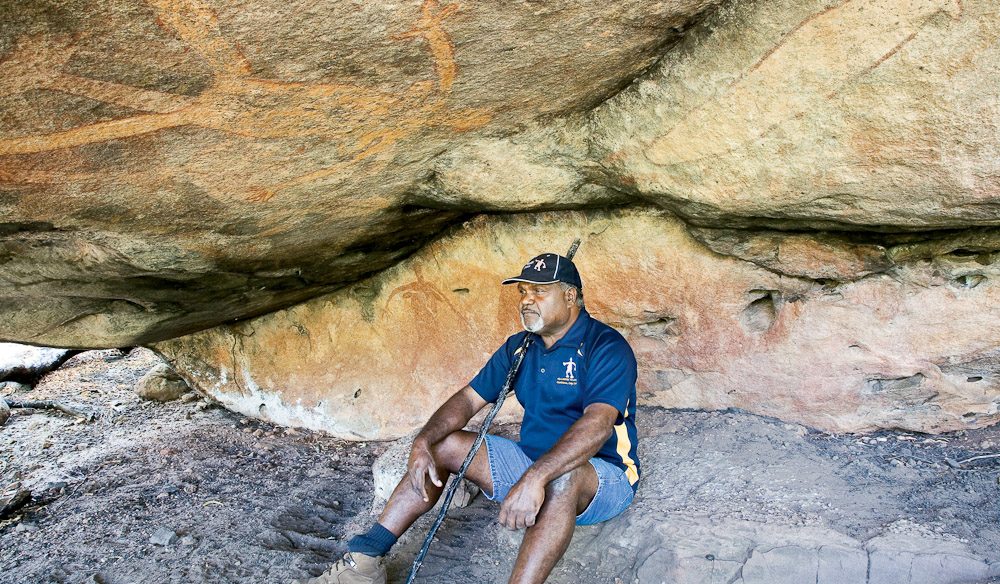
Personal Aboriginal story telling tour
“It was the best cultural experience we’ve ever had. We felt privileged to be a part of Willie’s family.” With recommendations like that, it’s easy to understand why Willie Gordon’s Rainbow Serpent Tour is revered as one of the best Indigenous experiences in Australia.
Setting out from Cooktown in Tropical North Queensland, Willie will take you on a tour of his nation’s secret and sacred rock art, through which he tells the story of his clan, Nugal-warra, of the Guugu Yimithirr nation. As the storyteller of his clan, Willie is the only person who knows exactly where the rock art is, and more importantly what it means. And you’re invited.
The tour starts with the Birthing Cave, where Willie connects modern living to the traditions of his people. It’s not uncommon for guests to be reaching for the Kleenex as they’re so moved by the stories. You’re invited to not just hear but be part of the story.
“I want people to take the story and tell it at home, that’s how I can make sure it survives,” says Gordon. He encourages you to take as many photos as you like, ask as many questions as possible, get as close to the art itself – totally immerse yourself in it.
The guest book is loaded with goosebump-inducing accolades. Willie and his tours are certainly very special.
WHERE // Between Cooktown and Hope Vale, about 340km north of Cairns, Qld. More info on (07) 4069 6259 or at www.guurrbitours.com
DID YOU KNOW? // Australia has more than 100,000 registered rock art sites, more than any other continent in the world. The art itself is also the oldest depiction of humans in the world.
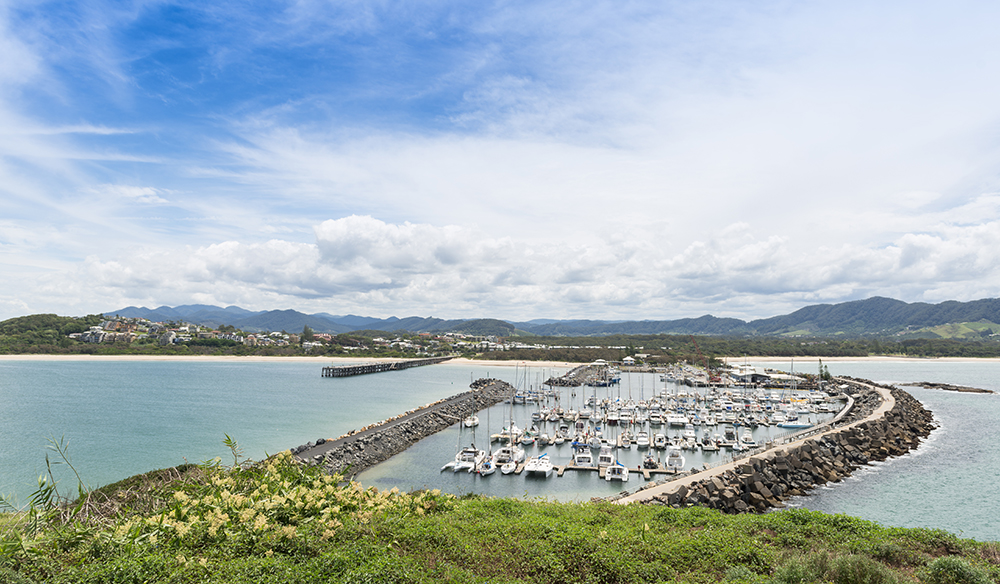
Skywalking and bird watching on Muttonbird Island and in Dorrigo National Park
The Coffs Coast in northern NSW is typical of Aussie seaside living – booming holiday destination through the warmer months, with a Big Thing to help for the low season.
The not-so-well-known part of the area combines the sea and the forest in a bird watching and bushwalking extravaganza. Start at Mutton Bird Island where the wedge-tailed shearwater (or mutton bird) hangs out from September to April before flying off to the warmer Philippines.
“I’VE DONE THE SKYWALK IN DORRIGO NATIONAL PARK. IT’S GREAT!” – Sandra Sully
Then take the short trip out to Dorrigo National Park (described by Lonely Planet as the most accessible rainforest in Australia) and stride out on its skywalk. There are several of these in Australia, all very worthwhile, but Dorrigo’s takes you way up high above the trees and out over the eastern edge of the great Dividing Range. In fact you’re 70m above the ground and travel for 70m on the edge of the escarpment.
From the top you peer out over the rainforests, the lush pastures and the sparkling Coffs Coast more than 40km away. If the mutton birds are at home and you’re up there at dusk you can watch the chaos of the birds returning home from a day of feeding on the ocean.
WHERE // Muttton Bird Island is reached by walking the 500m along the break wall from Coffs Harbour Fish Coop. Dorrigo National Park is 2km east of Dorrigo, 72km from Coffs Harbour, 540km north of Sydney on the Pacific Highway.
DID YOU KNOW? // Coffs Harbour used to be called Korff’s Harbour after Captain John Korff, who sheltered there from a storm in 1847. It became Coffs by accident when some fool in Sydney misspelt it in the gazetting documents for the area in 1861.
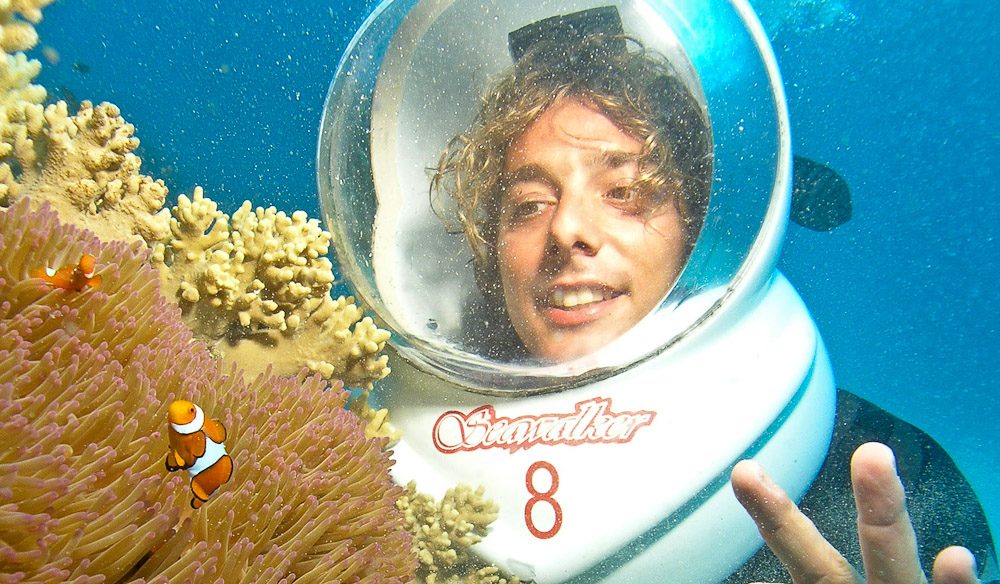
Walk on the ocean floor
Watching non-swimmers endure a trip to The Reef is painful. Like watching a kid with a broken arm at the beach at Christmas. Now you can actually walk alongside the reef, on its own terms, as it were. The Seawalker system places a pearl diver-like helmet on your head so you can breathe normally without water on your face or respirators in your mouth.
Designed for all those uncomfortable or unable to scuba or snorkel, Seawalker allows you to descend into the reef and actually walk along the floor of the ocean and see what all the fuss is about.
It lasts about 20min and you’re connected to air via a 25m tube to the surface with umpteen backups in the unlikely case of an air failure. (How else would they get insurance?)
Your guide will point out highlights of the coral garden, while the busy underwater creatures of the reef swim and scuttle by. It’s making the reef a lot more accessible for those who aren’t comfortable in water or can’t see without specs.
WHERE // Seawalker at Green Island operates from Green Island Dive Centre, a 45min high speed catamaran ride from Cairns.
DID YOU KNOW? // The underwater observatory on Green Island has been in its current place since 1954. It was built at Cairns, transferred to the island on a boat made from empty 44-gallon drums, which were then pierced for the observatory to sink to its current position.
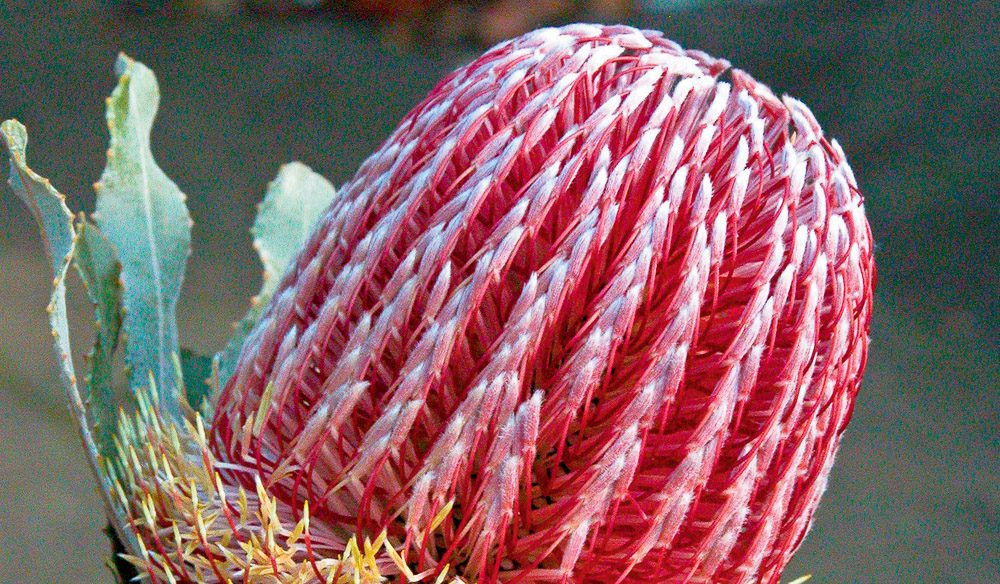
Banksia Farm and Garden – only place in the world, where all 77 species can be found
The magnificent and multihued Banksia: iconic Australian wildflower; important source of nectar for honeyeaters and pollinating creatures; inspiration for the terrifying Banksia Men of Snugglepot and Cuddlepie fame.
A favourite and hardy garden plant; ranging from low shrub to towering 30m-high tree; found in all but the most inhospitable areas of the country – and distinctively one of those rare plants that regards our harsh bushfire seasons as merely another chance to regroup and spread its seed.
How marvellously Australian can you get? With the exception of the Tropical Banksia, which is found in some areas of New Guinea and small islands near eastern Indonesia, the Banksia is wholly native to Australia.
“FOR THE ECO-LOVERS AMONG US, THIS IS A DEFINITE.” – Sandra Sully
There’s still rigorous debate on this point, but for a time it was thought there were 76 distinct species of the hardy little plant, until a 77th – B. rosserae – was identified in 1999. And, for the edification of amateur botanists everywhere, the only place in the world where all 77 of these species can be found is at the Banksia Farm and Garden in Mount Barker in southwest WA.
Southwest WA is home to three quarters of the known species of Banksia, so the exquisite five hectares of wildflower gardens – the 20-year labour of love of owners Kevin and Kathy Collins – set against the backdrop of the 1100-million-year-old Porongurup National Park seems the ideal spot to experience the wild diversity of this popular native flower.
And after your tasting, touching, smelling, extremely tactile tour, the Banksia Farm and Garden also features tearooms, a botanic art gallery, a native plant nursery and B&B accommodation.
WHERE // Mount Barker, gateway to the Porongurups, is 50km north of Albany in southwest WA. The Banksia Farm and Garden is on Pearce Rd, (08) 9851 1770, best flowering time is April to November.
DID YOU KNOW? // It’s not just a botanists’ heaven here: the Banksias and other plants draws animals from miles around. Geckos, goannas, bungarras (monitor lizards), marsupials, predatory birds such as wedge tailed eagles, peregrine falcons and the like – it’s a bountiful nesting site, as well as a perpetual parrot paradise!
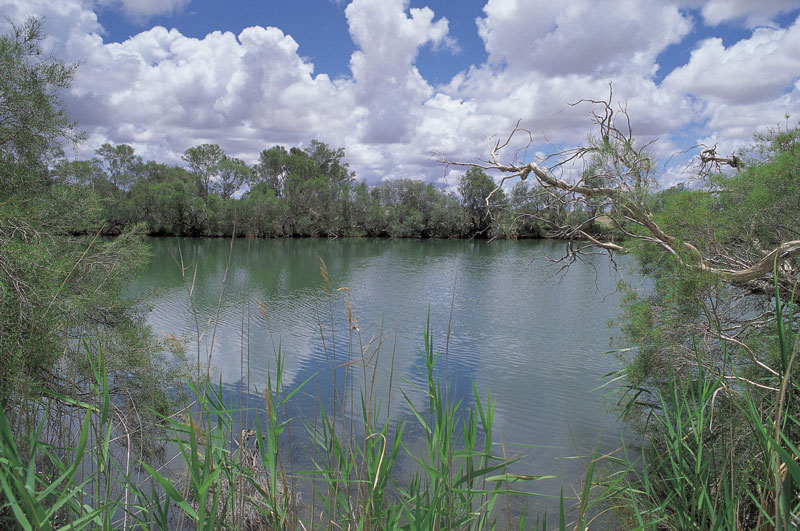
Dalhousie springs – largest complex of artesian springs in Australia
Imagine: a hot afternoon in the outback, dry desert and red earth as far as the eye can see – and you’re bathing off the dust in water millions of years old. Welcome to Dalhousie Springs in the Simpson Desert.
The largest complex of artesian springs in Australia, Dalhousie’s 70 or so active thermal springs are fed by water that comes all the way from the Great Dividing Range, hundreds of kilometers to the east and through immense layers of subterranean strata.
When the precious liquid finally gushes from the ground, it varies from scalding to warm (depending on the spring).
You’re welcome to take a dip in the main spring, which is about bathwater temperature, and also home to a number of fish species found nowhere else in the world: the Dalhousie catfish, hardyhead, mogurnda, and gobi. Besides breathtaking scenery, the park has an extensive European history and is of considerable Aboriginal importance.
The spring area used to be a refuge and base camp for desert crossings by early explorers and is a sacred place of many Aboriginal Dreamtime stories and songs.
WHERE // Inside Witjira National Park on the western edge of the Simpson Desert in SA’s far north, 180km northeast of Oodnadatta.
DID YOU KNOW? // Dalhousie is what’s known as a “spring supergroup”, but the largest supergroup in Australia is actually SA’s Lake Eyre, which is dry most of the time. In fact it only floods once every few years (and is doing so right now!) and fills completely about two or three times a century.
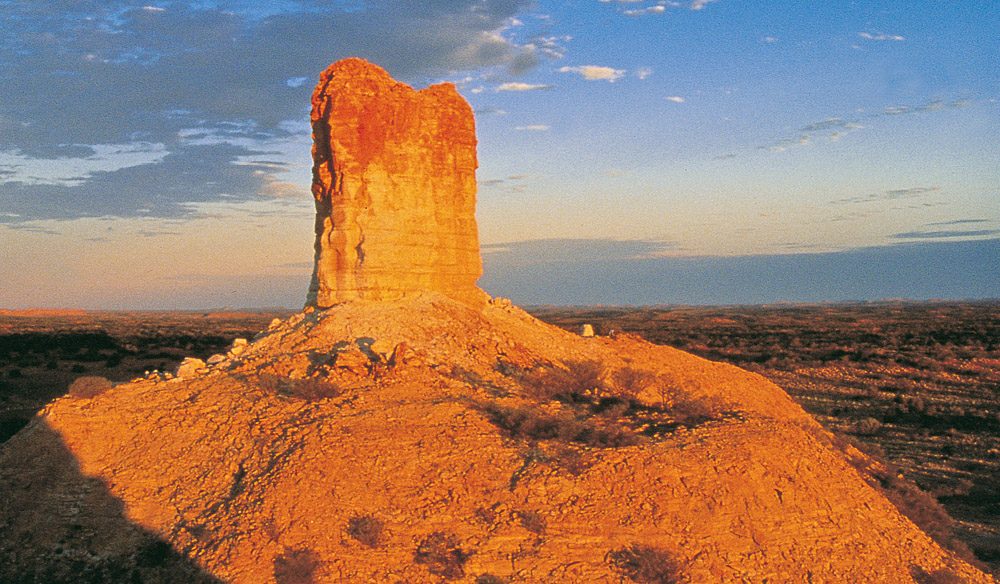
Chambers Pillar – landmark and natural phenomenon with historic and Aboriginal significance
History, Aboriginal belief, a natural phenomenon and adventure are all combined in this one-of-a-kind landmark: Chambers Pillar in the Northern Territory.
The sandstone column 160km south of Alice Springs stands 50m above the plain, making it easy for desert travellers to navigate by. Similar to Uluru, you can gaze at Chambers Pillar as it changes colours dramatically through sunrise and set, intensifying to a reddish-gold glow like a huge gleaming beacon.
The history of the site starts 350 million years ago, when sandstone deposits were laid down in the area. Wind and rain have eroded away the softer material, leaving Chambers Pillar as a solitary column.
It was named by John MacDouall Stuart in 1860, on his earliest attempt to cross Australia (James Chambers was one of his sponsors). Besides being a witness to early European exploration, the pillar is of great Aboriginal importance; it’s believed to be an ancient ancestor, who became the pillar after being banished by relatives.
The pillar itself also bears the marks of several early explorers, including Alfred Giles and John Ross, leaders of the second cross-continental expedition in 1870. Their initials are visible as J Ross and AC 1870.
WHERE
160km south of Alice Springs along the Old South Road. The road is unsealed, may be closed after rains, and 4WD is required.
DID YOU KNOW?
Recent visitors have added their own graffiti to the pillar just as early explorers did. This is illegal and unfortunate, but also poses the question: At what point in time does graffiti stop being historic and just become annoying?
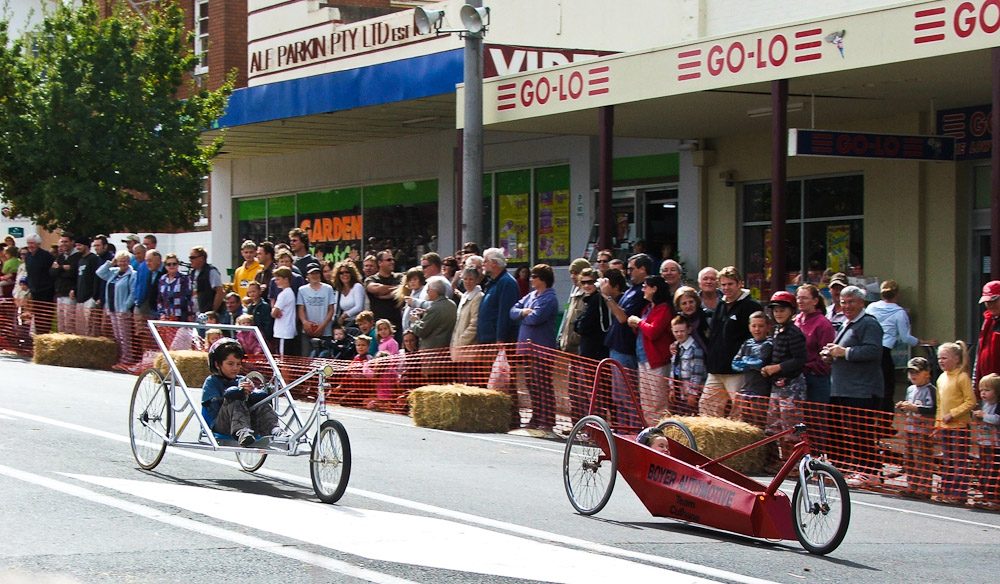
Australian Billy Cart Championships
Melbourne Cup? Overrated. Formula One week? Noisy and only interesting to the first corner. Both are as nothing compared to this old-school downhill speedfest.
Come Easter each year the Australian Billy Cart Championships in the southern NSW town of Corowa, just outside of Albury Wodonga, is definitely where it’s at.
Attracting competitors of all ages and from all over the country, it’s a weekend of scraped knees and engineering marvels as childhood memories are relived on homemade contraptions down the middle of main street.
“ONCE A BOY, ALWAYS A BOY!” – Chris Smith
Anyone can enter, too – so if you’ve got a spare plank of wood and some old pram wheels lying around, why not give it a crack?
Entry is ten bucks on race day, and that includes a sausage from the sizzle. Viewing – at your own risk along the street out front of the Australian Hotel – is completely free.
WHERE // Corowa is 622km southwest of Sydney and 57km from Albury-Wodonga, on the banks of the Murray River. Held annually each Easter. More info at www.corowa.nsw.gov.au or on (02) 6033 3221.
DID YOU KNOW? // Corowa has about 5000 inhabitants, and several famous Australians were born there, including: 1880s cricketer George Palmer; TV host Mike Walsh; AFL players Nigel Lappin and Ben Mathews; and Athens Olympic gold medal hockey player Stephen Mowlam.

Travel the Pichi Richi Pass by Afghan Express
What better way to enjoy the winding landscape of South Australia’s Pichi Richi Pass than by losing yourself in a 1930s daydream?
Lulled by the antique clattering rhythms of the Afghan Express as it makes its way along the oldest remaining section of the famous narrow-gauge Ghan railway, this is like travelling in a living museum.
Make yourself comfortable in the distinctive timber-bodied carriages, including those of the original Ghan, pulled by the restored steam locomotive NM25.
And if that kind of lazy enjoyment’s not enough for you, if you want to get really close to the heart of the engine, then you can actually volunteer to be a train driver: The Pichi Richi Railway Preservation Society’s volunteer members operate, maintain and manage the railway and are always looking for helpers.
Give them a call on (08) 8254 6514 or check out www.prr.org.au for more info.
WHERE // Travels between Quorn in the Flinders Ranges and Port Augusta.
DID YOU KNOW? // There are several versions of how the Afghan Express was named. One says that in 1923, when a sleeping carriage was included on the train for the first time, an Afghan passenger rushed off the train in Quorn to a quiet corner to pray. A railwayman joked that the train should be called the Afghan Express, which was later shortened to The Ghan.

Aboriginal experience – dancing, tea and damper, story telling
Hopefully by the time you’ve heard of the Morning Tea Ladies, one of Bathurst Island’s most precious resources, it won’t be too late.
The Tiwi people have inhabited Bathurst and Melville Islands for more than 10,000 years and the Morning Tea Ladies have enjoyed their morning tea sessions for many generations. However, they’re not training any further generations, and with no younger women to carry on the stories, time may be running out.
The Tiwi people are separated from mainland Aboriginals by more than the water North of Darwin: their culture, language, artwork and music is noticeably different; they don’t have didgeridoos, but make music instead with clapping sticks, a sound you’ll be sure to hear aplenty on your visit.
The Morning Tea Ladies gather over tea and damper to weave their intricate baskets and chatter about their cultures, but also to find out about the many cultures visitors bring to their circle.
Take part in these animated conversations as you’re cleansed of evil spirits, learn about Paleneri (Dreaming) Time, and watch each of the Tiwi peoples individual totem dances. A visit to Bathurst Island will leave you feeling connected to a new culture.
WHERE Bathurst and Melville Islands are 80km north of Darwin in the Arafura Sea.
DID YOU KNOW? Bathurst Island was the first part of Australian soil to be attacked in WWII, when the Japanese struck on February 19, 1942. Melville Island was also the site of the first captured Japanese prisoner of war, Sergeant Hajimi Toyoshima.
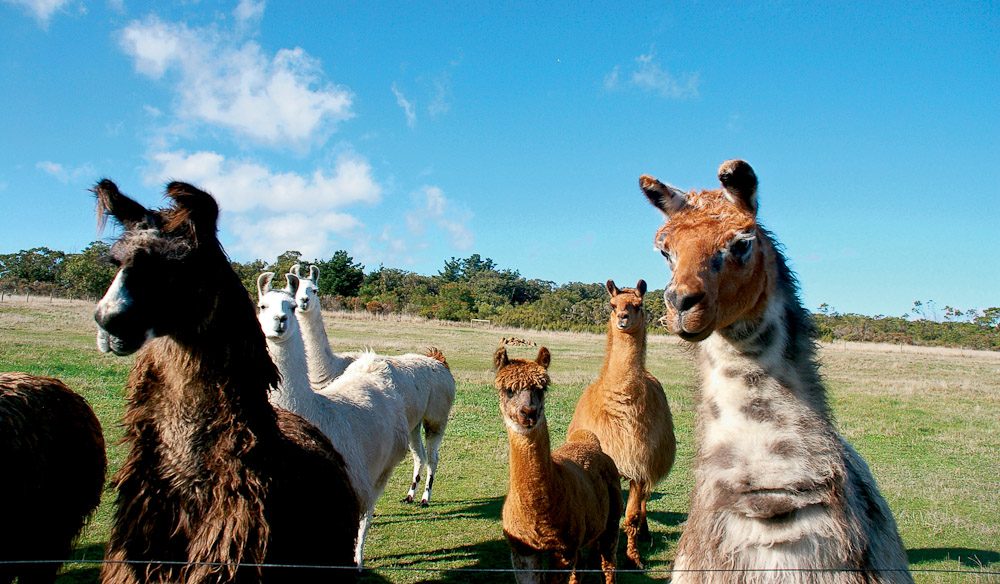
French Island Eco-Tours
There’s a hidden gem in Victoria that most people don’t know about: Phillip Island’s larger neighbour French Island.
It has a permanent population of less than 60 people and the primary focus is on eco-tourism, making it a secluded and amazing place for bicycling, watching more than 200 species of birds, walks through wildflower fields and heath lands with hundreds of plant species, bus tours and camping.
There are no sealed roads, no piped water and it’s independent from outside electricity; 70 percent of the island is National Park, but there’s even more to it than that. McLeod Prison Farm, founded in 1916 and closed down in 1975, was the first Australian prison to introduce television.
“I’D NEVER HEARD OF FRENCH ISLAND BEFORE, BUT AFTER LUNCH WITH SOME LOCAL LLAMAS I’LL NEVER FORGET IT. SAY HI TO THE MINOGUE FAMILY WHILE YOU’RE THERE!” – Catriona Rowntree
Today it’s not only a historic tourist venue, but also an organic farm. The French Island Llama experience offered by Tanderum Farm is also not to be missed, and a wonderful way of exploring the whole island is by tour. Two companies, French Island Eco-Tours (1300 307 054) and French Island Bus Tours ([03] 5980 1241), offer coach tours departing from Stony Point on the Mornington Peninsula.
WHERE // French Island is a short ferry ride across Westernport Bay from Stony Point, southeast of Melbourne. You can also get there from Cowes on Phillip Island.
DID YOU KNOW? // French Island houses the world’s densest and most disease free koala population. Keep your eyes peeled for them at recreation hall and the post office at Tankerton where the ferries dock.
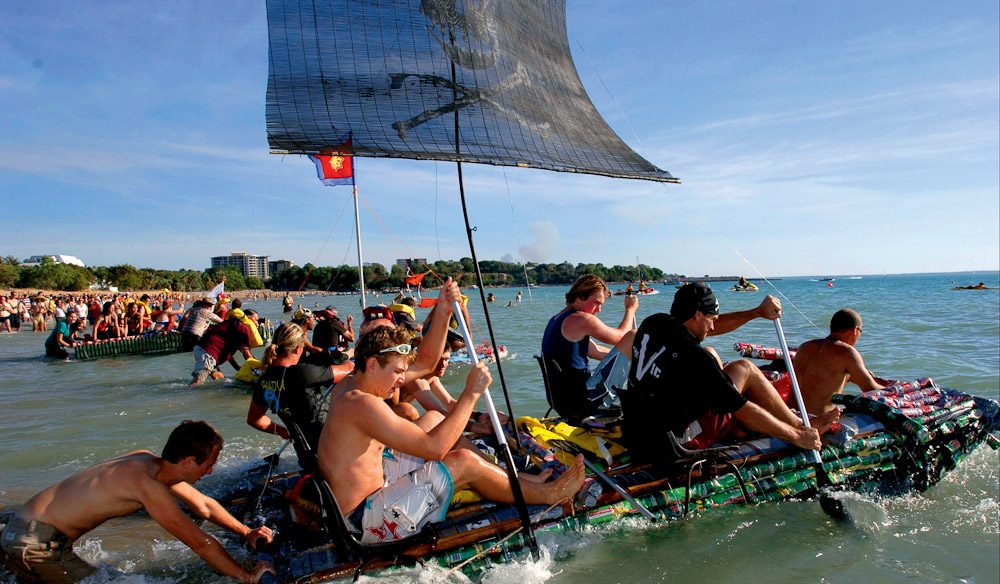
In a quintessentially Australian fit of inventiveness, the Beer Can Regatta stands alone as a beacon for the most insane – yet highly practical – outback festival.
Each July, imaginative Territorians race boats made of nothing but beer cans along the shores of Darwin’s Mindil Beach, with nothing in mind but fun and fundraising.
And there are loads of activities besides the boat race: if your craft isn’t seaworthy, you can take part in the Henley on Mindil race, where all buoyantly challenged boats are raced by foot up the beach.
Thong (the kind you wear on your feet) throwing comps, sandcastle comps, hole-in-one comps and soft drink can regattas for kids are just some of the other activities.
It’s all held in conjunction with the renowned Mindil Beach Sunset Markets, where the array of food is unrivalled across Australia. It’s a fabulous festival day, Territorian style.
WHERE: Mindil Beach, around 1.5km north of the Darwin town centre.
DID YOU KNOW?: The Beer Can Regatta was established in 1975, after the thousands of workmen flocking to Darwin to rebuild in the wake of Cyclone Tracy caused a bit of a litter problem. Being ever the pragmatists, a local Territorian established the regatta as a fun way to clean up the mess.

Diving with Grey Nurse Sharks in Fish Rock Cave in South West Rocks
In Australia it’s almost too easy to become blasé about our abundant and fantastic water experiences.
However, here is a true hidden and underrated gem. Reputedly one of the best ten dives in the country – if not the world – Fish Rock Cave is more like a 125m submerged tunnel.
Definitely not for casual snorkellers, and accessible from South West Rocks on the NSW North Coast, the Fish Rock Cave vanishes below a rocky outcrop and is home to one of the largest single collections of the highly endangered Grey Nurse Shark.
“AN ABSOLUTE DIVERS’ PARADISE.” – Sandra Sully
Starting at the deepest side of the tunnel, you traverse through a pitch-black chimney packed with fish and crustaceans.
The little-known Hairy Reef Lobster is just one of five types of lobsters found here, and the dizzying array of fish and life as you burst through to the light is an overwhelming sensation. Deservedly one of the greatest underwater experiences in Australia.
WHERE // Fish Rock is 2km off Smoky Cape at South West Rocks, which is 460km north of Sydney and 530km south of Brisbane on the Pacific Hwy. For more info, call (02) 6566 6474 or check out www.southwestrocksdive.com.au
DID YOU KNOW? Trial Bay, the bay South West Rocks sits on, got its name from the ship Trial, which was stolen by a group of convicts looking to escape to South East Asia and was wrecked there in 1816.

Privately-owned Mogo Zoo with endangered and exotic species
Beach, rainforest, fish ‘n’ chips, old gold rush town . . . and a rare white lion?! Yep, this is Mogo Zoo.
On your NSW south coast journey you can drop in on probably the most successful private zoo in Australia, full of exotic and endangered animals that will make you gush. The animals are housed in very spacious and “considerate” enclosures; this is, after all, a serious conservation project.
Now over two decades old, this private operation has done very well to be so much more than a glorified petting zoo.
Mogo Zoo has successfully bred in captivity the highly endangered and difficult to manage snow leopards, marking their successful breeding for the first time in 15 years in an Australian zoo. The startling and shimmering Golden Lion Tamarinds, another on the highly endangered list, are also part of the zoos expanded Primate Island, which is home to a stunning array of primates from all corners of the globe.
WHERE // Mogo is 10km south of Batemans Bay, 280km south of Sydney, on the Princess Highway, and Mogo Zoo is around 1km on Tomakin Rd from Mogo.
DID YOU KNOW? // The Pygmy Marmoset, also found at Mogo Zoo, is the world’s smallest primate, between 12-15cm in length and weighing between a feathery 85g and 140g – half the length of this page and weighing less than the magazine you’re holding.

Wife Carrying Championship in Singleton
Australian men, throw your mothers, daughters, sisters, aunties, wives and even mothers-in-law over your shoulders and run as fast as your little legs will carry you.
Wife Carrying has finally made its way to Australia, and the Finnair Australian Wife Carrying Titles are held each year in the NSW town of Singleton.
The event looks set to have a bright future, especially since this year’s winners scored a trip to the World Titles in Finland. And if you win there, the prize is your wife’s weight in beer! So it seems worth a little bit of effort at least.
Simply be the fastest over at least 200m with a minimum of four obstacles, including log jumps, limbo bars, water and a mystery hazard, without dropping your “luggage” and you’re home.
The “wife” doesn’t even have to be your legal spouse; just take any woman that’s available, persistent and not too heavy. (If you drop her, you gain extra seconds as a penalty.)
This bizarre event has run for several years and is now a regular part of Singleton’s annual Integra Countryfest, featuring alongside a Ute muster, rodeo, dog high jumps (which are surprisingly watchable) and loads more fun of a distinctly Aussie nature.
WHERE // At Singleton’s Integra Countryfest, 182km northwest of Sydney.
DID YOU KNOW? // Wife Carrying originated in Finland more than a decade ago and is now surprisingly big around the world. The World Champs were taken out by Margo Uusorg and Sandra Kullas of Estonia in a world record time of 56.9secs over the 253.5m course.
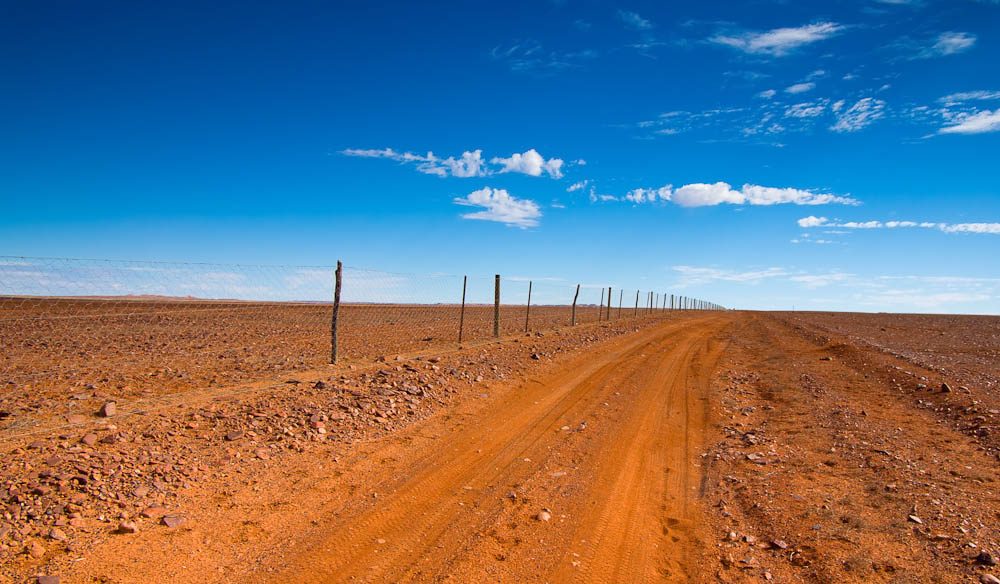
Longest fence in the world at Cameron’s Corner.
It’s the biggest fence in the world.
That may just seem like just another “biggest” claim, but to give you a feel, consider this: drive from Melbourne to Sydney and back. You’re not even close. Now drive to Perth. You’ve almost driven as long as this fence stretches. (You’ve driven 5133km. Only 187km to go.)
Important in Australia’s agricultural development, the fence has kept the sheep safe from dingoes and explains why we really don’t see many at all across Australia’s southeast (except of course the pure breeds on Fraser Island.)
The best place to see and feel just how big a structure we’re talking about is out at Cameron’s corner, at the intersection of SA, QLD and NSW. Here the fence is “one chain” (22 yards, or exactly one cricket pitch) from the post that marks the meeting point of the three states. And it’s great travelling country.
Loads of red sand, hot and very, very empty – yet it’s still only semi desert. The Sturt National Park close by is the best place in Australia to see the red kangaroo, as opposed to the much smaller grey.
And local operators claim that the wildflowers following spring rains are better than the most famous West Australian blooms.
WHERE // Cameron’s Corner is 1320km west of Sydney, 1300km north of Melbourne, 975km north of Adelaide and 1460km west of Brisbane.
DID YOU KNOW? //WA’s Rabbit Proof Fence was originally the longest continuous fence in the world (at 1833km) when completed in 1907.
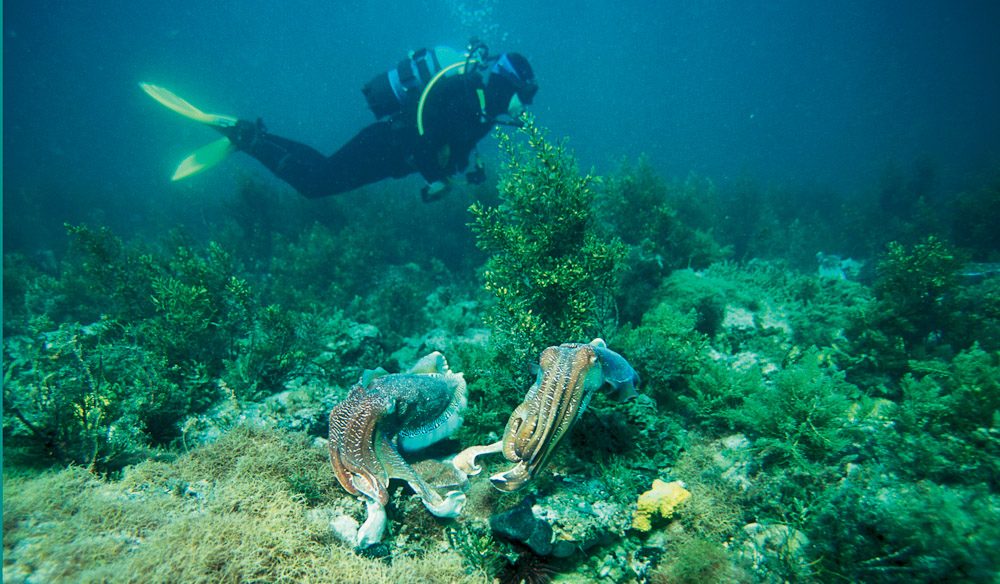
Watch spawning cuttlefish off Whyalla
Chicken is tasty but boring. Crocodile is quirky but not that tasty. The humble cuttlefish, poor little fella, is both quirky and tasty. They’re the poor cousins of the seafood chain; ever had your fishmonger tell you about the great deal he has on cuttlefish?
Ever seen a convoy of Japanese factory ships heading south in search of cuttlefish? No, probably not.
But every year between May and September our little friends do something truly amazing in the waters off Whyalla in South Australia. The adult cuttlefish spawn, with mature females laying eggs close to the shoreline.
The really incredible thing is that you can get up close to them and watch these remarkable creatures – weighing up to 5kg each – change colour before your eyes. They truly are the chameleons of the sea. But, sadly, they die shortly after breeding.
Even worse, they end up in budgerigar cages all over the country. Having sex, then dying, only to be fed to a budgerigar is a raw deal. Do yourself a favour and check them out while you’re in Whyalla.
WHERE // Throughout the waters between Fitzgerald and False Bays, just off Whyalla, SA. Contact Whyalla Visitors Centre for more info on (08) 8645 7900.
DID YOU KNOW? // The common cuttlefish has actually got blue blood and three hearts.

Stay the night in a castle
You may feel as though you’re in Scotland (you’re not), and you may feel you’ve been anointed King of all you survey (you haven’t, you’ll just be treated like one), so if you’re after a truly regal experience, check in to Kings Plains Castle in Glen Innes, NSW.
You’ll get your royal money’s worth here: 28 rooms on three floors of a heritage-listed castle with – naturally – a tower and battlements. Kings Plains Castle was built in 1908 and is furnished with international antiques, making this quite literally a priceless place to stay.
There’s even a little airstrip close to the castle for those royals wanting to fly in secretly by private jet to avoid the paparazzi.
Set on 4.5 acres of abundant garden, attended by countless chirping birds and the constant sweet smell of roses and lavender, the castle also has a guided history tour, ancient photographs to gaze at, and a National Trust-listed cemetery to spend a few quiet moments in.
WHERE // Kings Plains Rd, Glen Innes, NSW, 4hr south of Brisbane, 7hr north of Sydney.
DID YOU KNOW? // Kings Plain Castle was actually built under Scottish influence; William Vivers, an immigrant from Scotland, settled the property in 1832. His great-nephew George Vivers then established the castle.
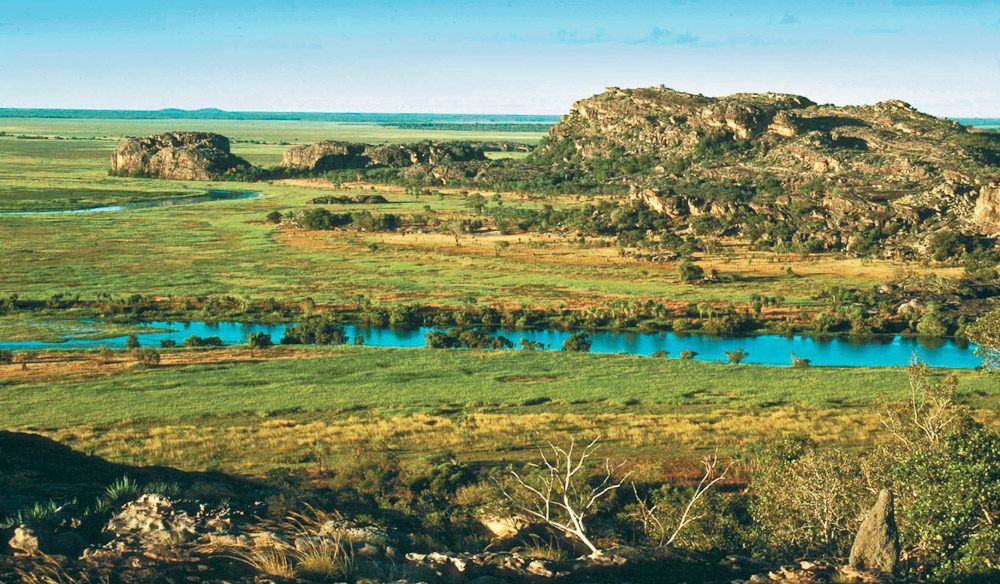
Hawk Dreaming Safari Camp in Kakadu National Park
Camping out in Kakadu might be accessible, but overnight digs in the traditional land of Hawk Dreaming is a novel experience – and one sacred to those who appreciate just how exclusive this safari camp is.
This tented lodge set among dense bush sleeps 16 guests and focuses on ensuring that visitors experience Kakadu as it once was. This land is out of bounds to everyone except Hawk Dreaming guests, who have exclusive traversing rights across the estate.
Local landowners will fill you in on the past, tell you a story or two and speak of traditional customs, while resident guides lead you through the park showing off the iconic spots of Kakadu.
The motivation behind Hawk Dreaming is to give guests the chance to experience and see a side of Kakadu others can’t. Aboriginal rock art, located near the camp, is fenceless and crowd free – unlike other protected rock art areas dotted around the busy reserve.
It’s an intimate experience and you’ll feel as though you’re literally in the wilderness on your own. Sit outside your tent and overlook the flood plains and you’ll realise just how isolated you really are at this treasure of the Top End.
WHERE: Overnight stays in Kakadu National Park at the Hawk Dreaming Safari Camp, Kakadu. Exclusive to Aussie Adventure tours, www.aussieadventure.com.au for more info.
DID YOU KNOW? Big Bill Neidjie, who died in 2002, was the last surviving speaker of the Gagudju language after which Kakadu National Park is named. He was a senior elder and traditional owner of the Bunitj estate (Hawk Dreaming land) and it was his decision to open up this area of the land.

Explore a real historic gem…drive the Great North Road.
Explore a real historic gem by roaming the Great North Road. Around 700 convicts built this road metre by painstaking metre in a mere decade from 1826, some parts so steep that it’s unthinkable how they managed it without modern machines.
Built to connect Sydney and the Hunter Valley, the Great North Road is one of only a few worldwide that maintain some original features, including stone retaining walls, culverts and the oldest bridge on mainland Australia.
“THE ONLY DOWNSIDE TO THIS DRIVE IS THAT THE LOCAL PUBS ARE SO GOOD. I PITY THE DESIGNATED DRIVER.” – Catriona Rowntree
As you walk, cycle or drive on parts of the 264km route, imagine hundreds of convicts building it manually in tremendous heat, often in leg irons, through wild and hilly terrain. Use it as a scenic and slow-paced alternative route between Sydney and the Hunter. Pause at walls, wharves, culverts and buttresses more than 170 years old.
Some remains are found in Sydney’s Epping and Gladesville, at Wisemans Ferry or Wollombi, Bucketty or Broke or in the National Parks of Dharug and Yengo.
WHERE // From Sydney to Newcastle and the Upper Hunter. Call (02) 9489 3603 for more info on the Convict Trail Project, which was established to preserve and restore the road as a museum.
DID YOU KNOW? // Before the Great North Road was built there were no maps of the country. Explorers searched for routes on which it would be possible to build a road and, if successful, were rewarded with land grants.
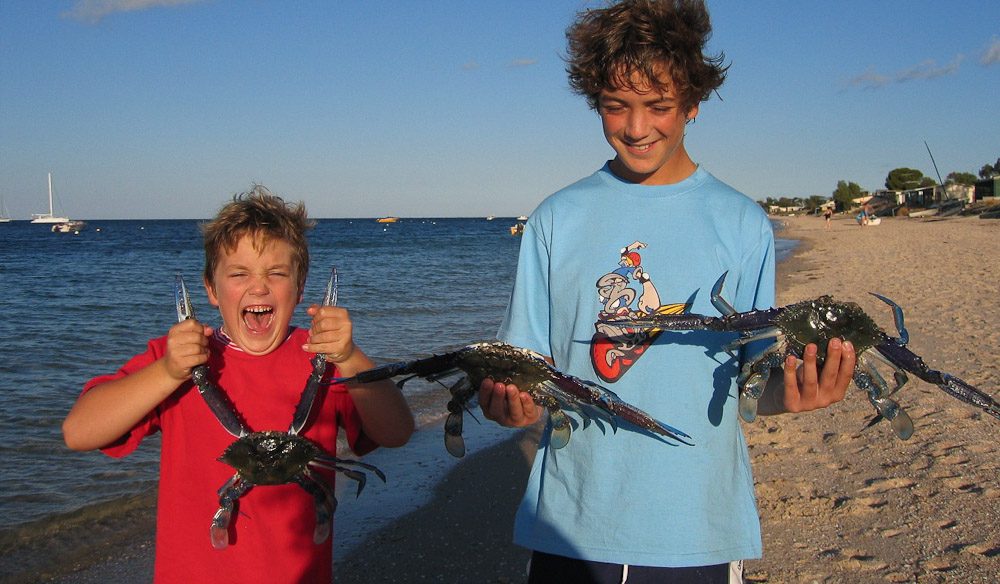
Catch your own dinner at Black Point in South Australia
To make a list of Great Things To Do In Australia, beaches are a little handicapped. Since we have so many of them, a beach has to have something a little more than just beautiful white sand and gorgeous turquoise water.
Out of South Australia, the Yorke Peninsula doesn’t get the attention it deserves for its fantastic beaches. And Black Point makes this list for its additional activities.
As the sun sets and the tide is out, grab a snorkel and mask and head out to the shallows where you can catch your own scallops. Just look for the fan shells with two sides and you’ve got the freshest and tastiest seafood dinner well on the way.
Plentiful in the area at the right time of year are crabs as well: crabbing season, according to local advice, is any month with an “R” in (with the best being February to April). Black Point is well and truly the home of the Aussie seafood platter.
WHERE // Black Point is 165km via road from Adelaide and only 70km directly west as the crow flies across the Gulf of St Vincent.
DID YOU KNOW? // The Jump Stump Plough was invented and perfected by the Smith brothers of the Yorke Peninsula in South Australia. The museum at Ardrossan, 23km north of Black Point, houses an excellent collection of this important Australian innovation.
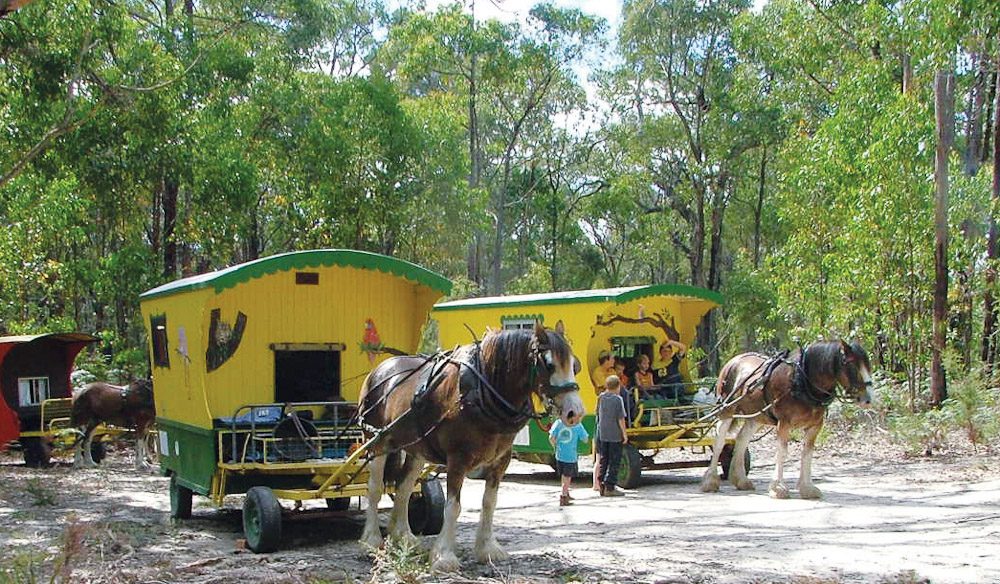
The perfect family holiday, mosey along behind your very own Clydesdale.
If you like to mosey, then this hobbit-like experience is probably the pick of them. The Colonial Way wagons are, as the name suggests, old style wooden caravans fit for Frodo, Sam, Merry, Pippin and any other fellowship you care to name.
Sitting in your wagon, you’ve got your massive Clydesdales up front carrying you through the secluded and tranquil camping sites of this bucolic Victorian countryside.
This is varied country for the traveller (or mosey-er), where rivers trickle and bubble, hills are climbed gently, and forests are wandered through at your own pace. In the immortal words of Darryl Kerrigan from The Castle, “How’s the serenity?” Each wagon sleeps up to five people (usually two adults plus children) and well-behaved dogs are welcome.
After a steady and lethargic meander (unless you’re still moseying), you reach your pre-agreed campsite, whereupon your hosts organise your horse then leave you to it. The next morning they’re back to help hitch up and plan your day. It’s no great stretch to imagine yourself back in Australia’s pioneering days, with creeks to cross and a homestead to build. Better get cracking.
WHERE // The Colonial Wagons are based near Taylors Rd, Rheola, Victoria, 59km west of Bendigo
DID YOU KNOW? // The silky hair on a Clydesdale’s leg is called a “feather” and protects the horse’s vulnerable hoof and fetlock area from common infections and skin conditions. Scottish farmers reputedly created the Clydesdale by selectively breeding their own stock with imported Flemish stallions in the early 19th Century.
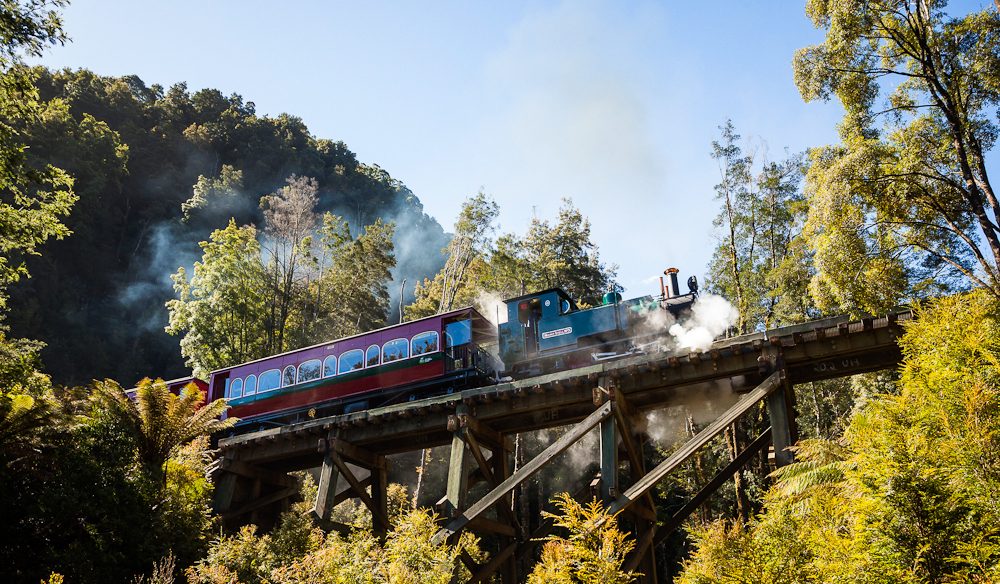
Wonderful transportation though the land of Piners and Miners.
Explore Tasmania’s west coast with the most unique and diversified tour of the state, starting in Strahan and winding through the fascinating world of Piners and Miners.
The most amazing thing, besides the wonderful views and natural flavour, is that you’re transported in a number of ways: on the West Coast Wilderness Railway track on board a Landrover turned into see-through rail car; by 4WD to the Bird River Track; then on foot along a secluded track to Kelly Basin, a historic mining site with old ruins waiting to be explored.
Watch the birds, study the stunning landscape, take amazing pictures, walk through history and heritage, then finish the adventure with a luxurious trip on a cruise boat back to Strahan. A lunch stop includes a picnic with the best Tasmanian food, wine and freshly caught seafood.
This experience is a real one-of-a-kind in the world: a historic trip into a truly untouched region of the Tasmanian World Heritage Area.
WHERE // Strahan and surrounding areas of the west coast of Tasmania. Piners and Miners is operated by Pure Tasmania on 1800 420 155 or at Discover Tasmania. Costs $275 including lunch.
DID YOU KNOW? // The Tasmanian Wilderness World Heritage Area is the equal highest rating WHA of anywhere on Earth (meeting 7 out of 10 criteria), alongside Mt Taishan in China.

Enjoy the legendary Geebung Polo Match on Easter weekend.
It was somewhere up the country, in a land of rock and scrub, that they formed an institution called the Geebung Polo Club . . . every Easter Sunday, crowds swarm to Victoria’s Dinner Plain to witness what has become a legendary event: The Geebung Polo match. The name of the game is victory as the High street boys (the Cuff ‘n’ Collar team) take on the local country cattlemen (Geebung Polo Club).
This bareback battle is Australia’s largest Polo match and in true Aussie style adheres just barely to accepted polo practice. Goalposts are made from snow gum trunks and rugged brumbies replace groomed ponies. Polo etiquette is redefined in the paddocks of Cobungra Station, and with neither umpires nor game rules, the action is nothing short of contagious.
With Mt Feathertop as backdrop, regular supporters rarely miss a meet, and visitor numbers increase annually; it’s claimed to be the largest match of its kind in the Southern Hemisphere. Entertainment doesn’t stop there: whip cracking, chopper rides and music gigs entertain the less horsy types.
It’s a great gathering of people and players in a beautiful setting and all funds raised go towards charitable causes.
WHERE // Dinner Plain, High Country, Victoria.
DID YOU KNOW? // The event pays tribute to, and was inspired by, Banjo Paterson’s poem, The Geebung Polo Club.
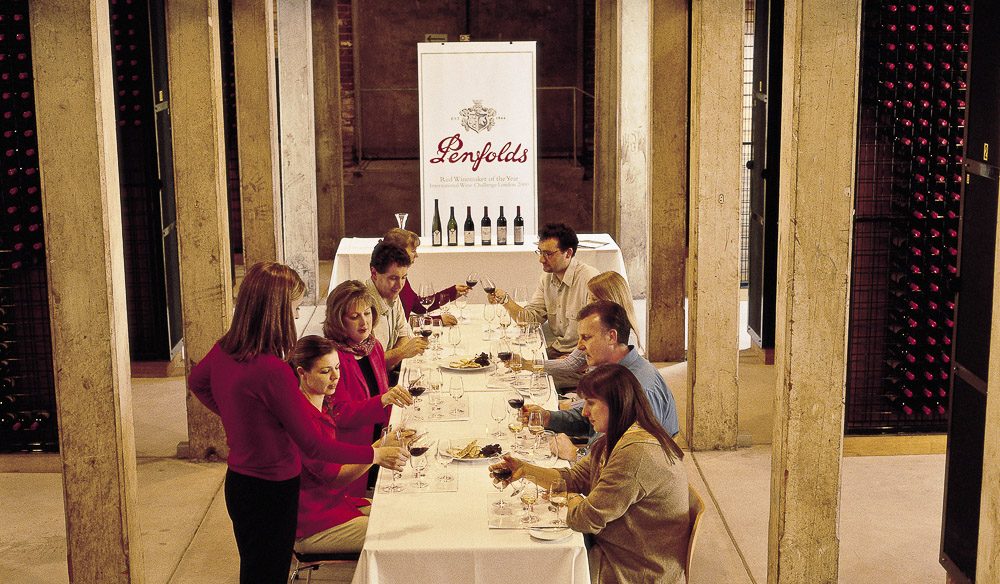
An inexpensive wine tour in the Barossa Valley with an experience of a lifetime! Tour the Penfolds vinyards, and then make your own legendary bottle of wine to take home.
The Barossa has always been synonymous with Australia’s most famous reds. Penfolds Grange Hermitage lives here. As does Henschke’s Hill Of Grace. And, more importantly, so can you. The Penfolds cellar door in the Barossa has opened Australia’s first “Make Your Own Blend” experience.
“A TRULY GREAT IDEA FOR US WINE LOVERS.” – Chris Smith
That’s right – after a short walking tour of the winery and cellars, you then descend to the lab and get to blend Grenache, Shiraz and Mourvedre to craft your own delicious drop. And those wines are taken from the same barrels that are used to create Penfolds famous Bin 138.
Once you’ve finished having a stab at greatness, your efforts are bottled for you to take home. It’s $45 to experience this thrill, and the take-home bottle is included in that price. It even comes with a fancy Penfolds label and your name as the winemaker!
WHERE // Penfolds Barossa Valley Cellar Door. www.penfolds.comor call the cellar door directly on (08) 8568 9408. Cost $65 with a minimum of two people required.
DID YOU KNOW? // The lab you use to create your own blend is the very same one used that created Penfolds Grange Hermitage! Perhaps you’ll be able to show those Grange winemakers a thing or two . . .

The Tilba Region, not your usual weekend retreat.
The Mountain that dominates the skyline of the Tilba region is the densely forested Gulaga. Here, the larger of the two timeless towns, Central Tilba, nestles alongside the volcanic slopes, referred to as Mt Dromedary by non-locals.
Both the tiny towns are preserved heritage villages with a cheese factory, jewellery stores, a woodturning gallery, bygone sweet stores, walking tracks and friendly locals.
“THIS IS A REALLY SWEET AND FASCINATING TOWN. THERE’S LOADS TO SEE AND EXPERIENCE.” – Sandra Sully
These towns may be quaint but certainly aren’t your dainty little weekend retreats – get tipsy at Tilba Valley Wines situated on the shores of Lake Corunna, hike through the misty forests of Gulaga or take the family snorkelling in the shelter of Mystery Bay.
Settled during the bustling gold rush of the 1850s, the farming grew as the gold ran out. Today you’ll wander through the streets and get a great sense of how life was lived; little has changed.
Stroll among interestingly designed buildings, old shop facades, lush green forest gullies, then buy a bottle of wine, some quince paste and cheese and find a patch of grass to plonk down on. Now relax and watch life go by.
WHERE // The NSW South Coast, 370km south of Sydney.
DID YOU KNOW? // Gulaga was an area of spiritual significance to the Yuin people who inhabited the land long before Captain Cook named the mountain Dromedary. It’s for this reason the locals insist on calling it Gulaga.

Visit the Hasting Caves thought to be 40 million years of age.
They’re estimated to have been untouched for 40 million years, but in 1917 timber workers finally stumbled upon the Hastings Caves in southern Tasmania.
Newdegate Cave, named for a former Tasmanian governor, is one of only two dolomite caves in Australia and the largest tourist cave in the country. Inspect the huge chambers and unique fauna with a guided tour, operating several times a day with remarkable explanations of the cave’s geology.
Pay special mind to Titania’s Palace – 5km from the cave you can luxuriate in a 28-degree thermal pool fed by clear spring water. Two walking tracks begin near the pool, one leading to two creeks – one warm, the other cold.
You can purchase tickets for cave tours at the Visitors Centre, close to the pool. A short walk from the car park through wonderfully grown rainforest ends at the cave.
WHERE // Hastings Caves are 125km south of Hobart, Tasmania.
DID YOU KNOW? // Caves are not the lifeless places one might expect; more than 40 species have been discovered in Newdegate Cave, some very strange looking and still unclassified.
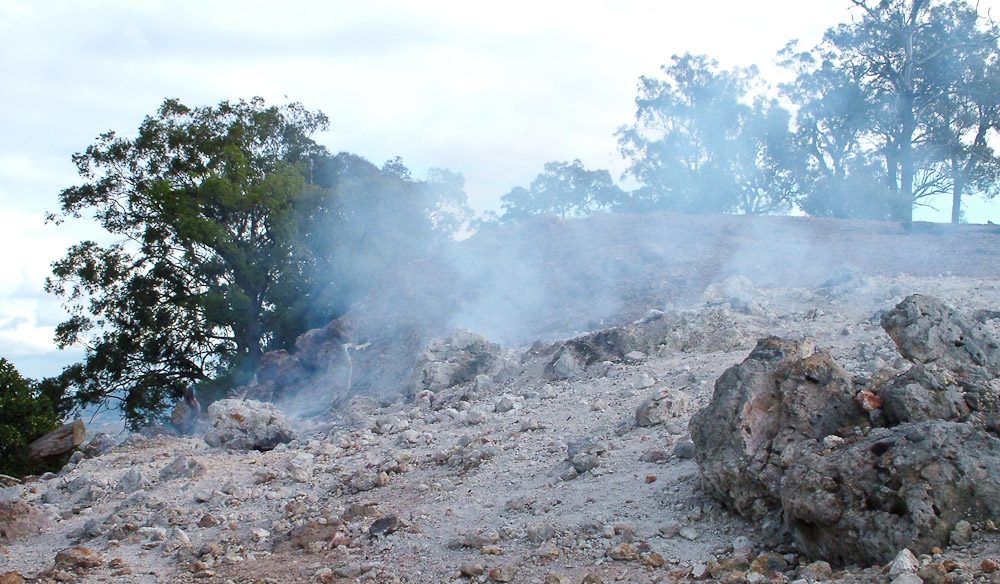
Like the smell of Sulphur? Head to the Hunter Region’s Burning Mountian.
Considered the world’s oldest coal fire, Burning Mountain in the Upper Hunter Region is Australia’s only example of a naturally burning coal seam (one of only three in the world). Believed to have been naturally ignited about 6000 years ago, it’s slowly burning through a thick coal seam about 30m deep.
The first non-Aboriginal observation of it occurred in 1828 when a local farmhand named Smart claimed to have found an active volcano.
Poor old Smart’s fame was shortlived, though, and he completely failed to have a volcano named after him since it turned out not to be one; faster than you could poke it with a burnt stick, eminent geologist CPN Wilton correctly identified the phenomenon as a burning coal seam the following year.
Smell the acrid sulphur. Feel the heat from the roasting 350-degree surface. Watch the pale grey smoke waft into the air. Look for wedge-tailed eagles soaring on the thermal currents above. Imagine you’re at the beginning of time. Or perhaps the end.
WHERE // Just off the New England Hwy near Wingen in the Upper Hunter Valley area, about 320km north of Sydney and 17km north of Scone.
DID YOU KNOW? // The burning site moves about 1m south each year. Since it’s already moved 6km it’s estimated that it’s been burning for about 6000.
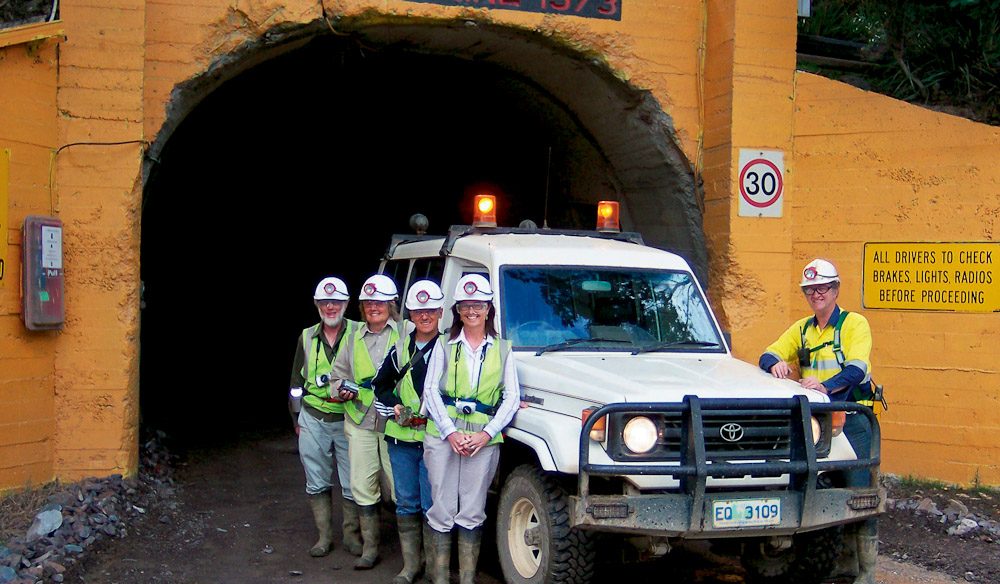
Put your hard hats on and infuriate your insurance broker as you head for a tour on a real working mine.
This is the stuff of insurance companies’ nightmares. Touring a real working copper mine.
In an era of soaring public liability insurances and the cancellations of school fetes, local shows and swimming carnivals, one oddity stands out: Douggie’s Mine Tours. The only place in Australia (and possibly the world), where you take a tour inside a real working mine.
Douggie takes you on a tour of the world’s purest copper deposit at the Mt Lyell mine in Queenstown, Tasmania. This is no half-baked experience; this is the real thing. Safety lamps, oxygen masks, endless safety instructions – more than an hour of the 2.5hr tour is taken up purely on safety drills.
Douggie is very, very serious about his safety. And you soon understand why. After corkscrewing 7km to a depth of 2km below ground, you get out of your Landcruiser, turn on your lamps, and trudge single file behind Douggie.
Then the action begins. “Quick! Off to the side,” he yells, before squeezing you into a crevice in the tunnel as a truck laden with 50 tonnes of ore trundles past, it’s diesel engine howling.
But this is nothing. Further down you go to the rock crushing plant, where enormous motors break up rocks the size of cars. “It’s just like your blender at home,” Douggie deadpans gleefully. “Just a bit bigger.”
WHERE // Queenstown, Tas, 248km west of Hobart on the way to Strahan. Call Douggie direct on 0407 049 612, since he doesn’t use that “new fangled internet stuff”. Costs $70 for a 3hr tour.
DID YOU KNOW? // Copper production during the last two world wars was so important that miners weren’t allowed to sign up and fight. Their skills were just too important to lose.
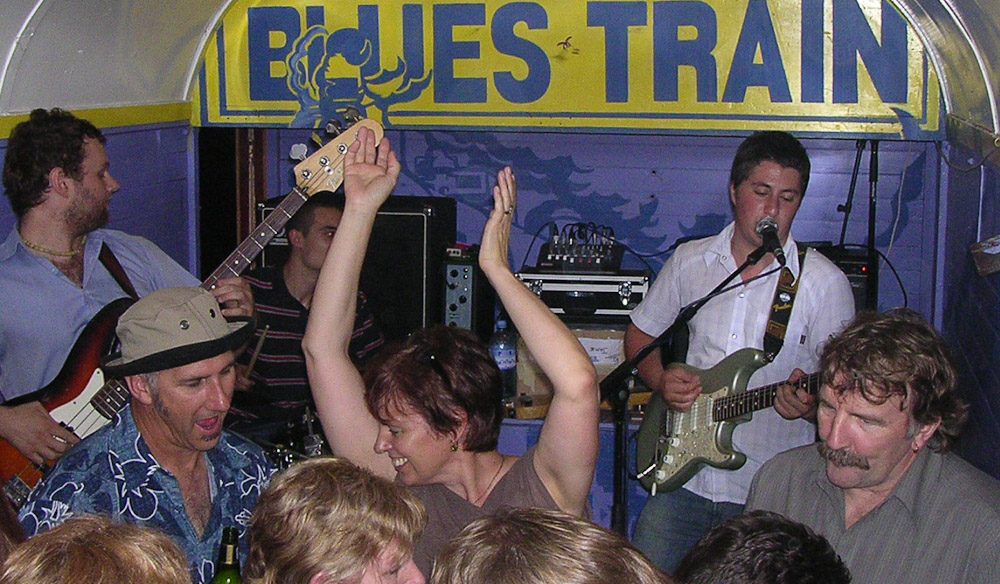
When it comes to listening to the blues, can you think of a more perfect vessel than a vintage steam train, clickety-clacking its way across the countryside?
The Blues Train, departing from the Victorian coastal town of Queenscliff and making its way through the Bellarine Peninsula is totally unique.
Combined with four top-of-the-line blues acts and enough food and wine to run a small music festival, you’ll dance, eat and drink your way past the foreshores of Swan Bay, up into the hills of historic Drysdale, swapping carriages at every stop to listen to another band’s music, before looping back into Queenscliff at journey’s end.
Lunchtime journeys run from noon till 4:30pm, with the dinner train departing at 7pm and returning at 11:30pm (although the bar opens at 6:30pm). Be sure to take your turn in the carriage with seating running along the walls – it’s the best place to hop up for a little post-dinner boogie!
WHERE // Departs Queenscliff, 75min from Melbourne CBD. More info at www.thebluestrain.com.au. Costs vary with group size, but about $72 per person for 20-48 people.
DID YOU KNOW? // The Blues Train is looked after by the Bellarine Peninsula Railway, a committed group of volunteers who are always keen for a helping hand.

Rent a cave of your own two hours drive from Sydney in the upper Blue Mountains
For rent: one cave. Big, sunny and dry with most mod cons. Sound like something you’d be interested in? Awake to the sounds of thousands of birds and the sight of a million-year-old sandstone cathedral arching over your head.
On a property that transects a deep gorge in the Upper Blue Mountains, Mark the Hatter (he makes leather hats) offers a simple solution to the satisfaction of human needs: “Water comes directly from the sky.
“I LOVE THIS IDEA! ALTHOUGH I’M NOT KEEN ON THE BATS . . .” – Chris Smith
Food is sumptuously prepared over a fire. Most guests bring their own small group of companions. Continuation of the species is left up to the clients.
Shelter is provided, tranquillity is assured, and contemplation of why we exist is readily discussed around a crackling fire.” Sounds like the perfect escape from the everyday.
WHERE // Two hours drive west of Sydney in Bell in the Upper Blue Mountains, NSW. Call Mark O’Carrigan on (02) 6355 2777 or check out www.rentacave.com for more info.
DID YOU KNOW? // The Wollemi National Park is the largest wilderness area in New South Wales. It is part of the Greater Blue Mountains World Heritage Area and hosts one of the state’s longest, most scenic gorges along the Colo River.

Visit Australia’s Unkown Grand Canyon: the Capertee Valley of the Blue Mountains
It’s surprising, but the Blue Mountains does maintain a hidden gem – the Capertee Valley on the western side of the ranges, north of Lithgow.
The place has it all: history, nature, quaint guesthouses and an excellent claim to fame. The valley itself is the second largest “enclosed” valley in the world – second only to the Grand Canyon.
So for a jaw dropping, goose bump-inducing vistas, stop off at Pearsons Lookout on the road into the valley. And for those who like the views after a two-day effort, scamper up Pantoney’s Crown for superb 360-degree from the centre of the valley.
The nearby town of Glen Davis is an oil shale mining ghost town where you can pick through the ruins and find abandoned old-fashioned mining equipment. And if you mention the Capertee to bird watchers, they twitter excitedly as more than 14 threatened species are regularly spotted in the valley.
WHERE // Capertee Town is 42km north of Lithgow on the Mudgee Rd. Glen Davis is 36km east from Capertee off Mudgee Rd. Pantoney’s Crown walk starts from Baal Bone Gap. Take the 4WD track signposted “Gardens of Stone NP” at Ben Bulleen.
DID YOU KNOW? // The Capertee Valley is 30km across and apparently 1km longer than the Grand Canyon. It’s just not as deep as that great titleholder of largest enclosed valley in the world.

Share your secrets with a lump of concrete at the Barossa Reservoir’s Whispering Wall.
Engineers are a funny bunch. They draw up detailed plans and make all sorts of calculations using words like “megajoule” to make us think their jobs are harder than they are.
Naturally they don’t make mistakes, and when something wacky occurs, they nod and say, “But of course. There’s a simple scientific explanation for that.”
But sometimes the unexpected occurs, such as when the Barossa Reservoir was built some 105 years ago. At the time this dam was a bit of a marvel, with a curved, tapering structure remarkably similar to many dams built nowadays.
The thing about this dam, though, is that if you speak normally at one side of the dam, your voice can be heard quite clearly on the other side – 144m away!
The perfect curve of the dam wall doesn’t absorb the soundwaves, rather the parabolic effect simply “pushes” them along. At least that’s the explanation we got from the bearded engineer who simply couldn’t understand why it wasn’t patently obvious to us. After all, it was a “simple scientific explanation.”
WHERE // About 10km northeast of Gawler in SA on the Williamstown road.
DID YOU KNOW? // During construction, legend has it one poor packhorse worked for nine months moving rubble in the formation of the tunnels that feed water to the dam. It’s said the poor horse didn’t see daylight for that entire time. These days the RSPCA would have a field day.

Sometimes it’s good to just throw up your hands and get lost. If it can be done safely – like inside the world’s oldest circular rose maze at Ashcombe Maze and Water Gardens – so much the better.
The first of its kind in the world and a garden lovers’ dream, 1200 rose bushes have been specifically chosen for their variety of colours and scents for this ultimate sensory overload.
After you’ve roamed through the 25-acre property, in and out of daintily manicured gardens and themed grounds (if mazes aren’t your idea of fun), it’s still a pretty beautiful place to spend a morning, lunch or afternoon.
“NO DOUBT IT’S AS PRETTY AS A PICTURE. I JUST WANT TO SMELL IT!” – Sandra Sully
The licensed café serves great meals and their fabled rose scones – it’d be silly not to try one when you visit – are delicious.
The restaurant with its arched ceilings and massive windows looks out over Australia’s largest and oldest traditional hedge maze, at more than 3m high and 2m wide. Lose yourself in one of the country’s premier garden surrounds – you’ll be amazed at how good it feels.
WHERE // The Ashcombe Maze and Water Gardens are on Shoreham Road, Shoreham, in Victoria’s Mornington Peninsula. Phone (03) 5989 8387 or check out www.ashcombemaze.com.au for more info.
DID YOU KNOW? // Fully 217 varieties of roses were used in creating the circular rose maze at Ashcombe.
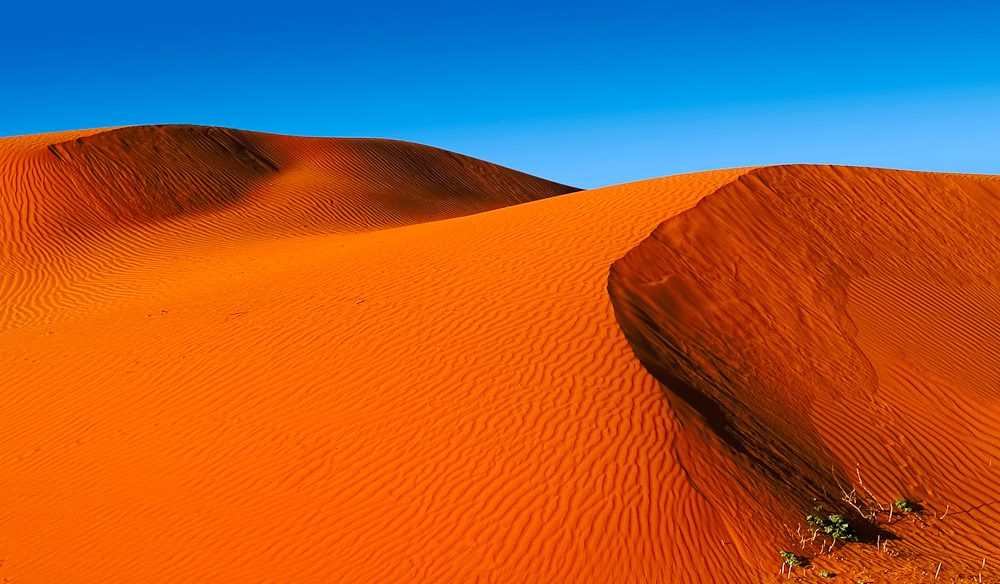
The Perry Sandhills are a remarkable eons-old geological formation. So guess what we used them for? Target practice! During WWII the red rippling dunes were used for bombing practice runs.
We can sort of see the logic in that; one big explosion moves a whole lot of sand from one dune to the next. But we digress. These remarkable dunes, covering an area of 10ha, are much smaller than their famous neighbour in Lake Mungo National Park. But what they lack in size they more than make up for in sheer beauty.
They feature regularly on TV and film, and there have been significant fossil finds as well (bones of early Megafauna – think wombats the size of a car), some of which are housed in the Rotary Museum in Wentworth.
The heart of the Murray Darling basin, this area also marks the confluence of the fourth largest river system in the world, after the Amazon, the Nile and the Mississippi (on area of catchment).
WHERE // The Perry Sandhills are 6km northwest of Wentworth, a picturesque small town on the banks of the Murray River not far from the NSW/SA border.
DID YOU KNOW? // The Perry Sandhills have featured in a Toyota ad, The Man From Snowy River II, on Slim Dusty’s last Album Looking Forward Looking Back, in an episode of children’s show Ocean Girl, Burke and Wills the movie and episodes of The Flying Doctors.
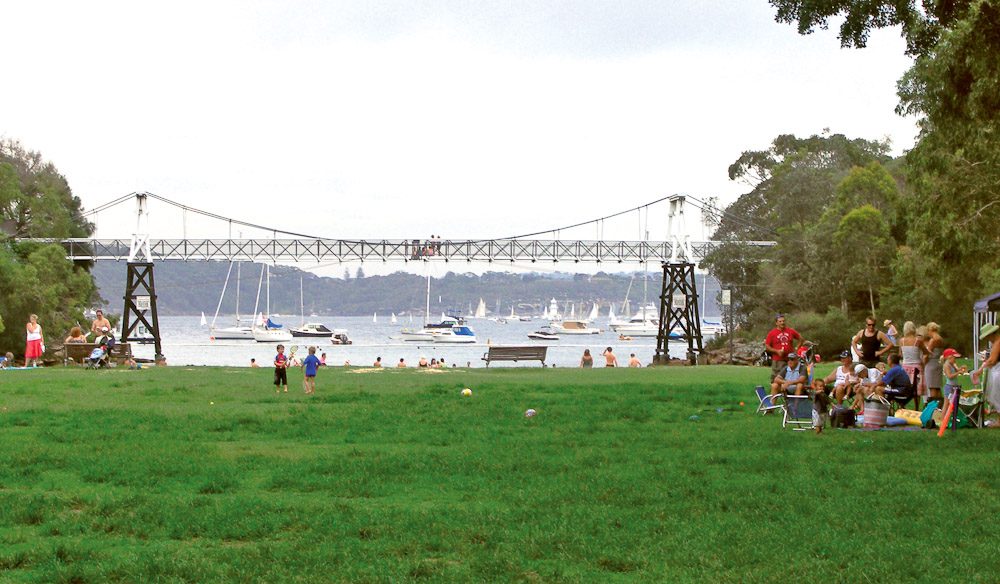
Picture a graceful suspension bridge stabbing across a cove of calm, blue-green water, a grassy area large enough for BBQs, cricket, footy and sunbathing (all at the same time), giant trees huddled around the perimeter with thick canopies to protect young reddening shoulders, a state-of-the-art playground with all the swings and roundabouts you could ever need.
Add in a small café doing a brisk trade, a beach, knee-deep water for 40m, interesting crinkly edges for safe snorkelling, a shark-net at the Harbour edge where sailboats and other watercraft go about their business, a spot from which to fish, paths and walkways connecting you with other fascinating bays left and right, a healthy number of other kids to play with or mums and dads to chat to.
Now place it all less than 10km from the heart of the Sydney CBD.
“If you’ve ever wondered why people fall under Sydney’s spell, a visit here will work its magic on you too.” – Catriona Rowntree
It’s called Parsley Bay and it’s hidden (really, really hidden) between Watsons Bay and Vaucluse. Good luck finding it, but once you have you’ll never go anywhere else for your perfect family days.
WHERE: In the eastern Sydney suburb of Vaucluse, there’s limited parking for Parsley Bay Reserve at the end of the narrow Parsley Bay Rd and Horley Ave, and further access on foot from The Crescent, Hopetoun Ave and Horler Ave.
DID YOU KNOW?: Parsley Bay was named either for a hermit called Parsley who lived in a cave there, or by First Fleeters in 1788 who plucked a parsley-like plant there to combat scurvy. We prefer the hermit story.
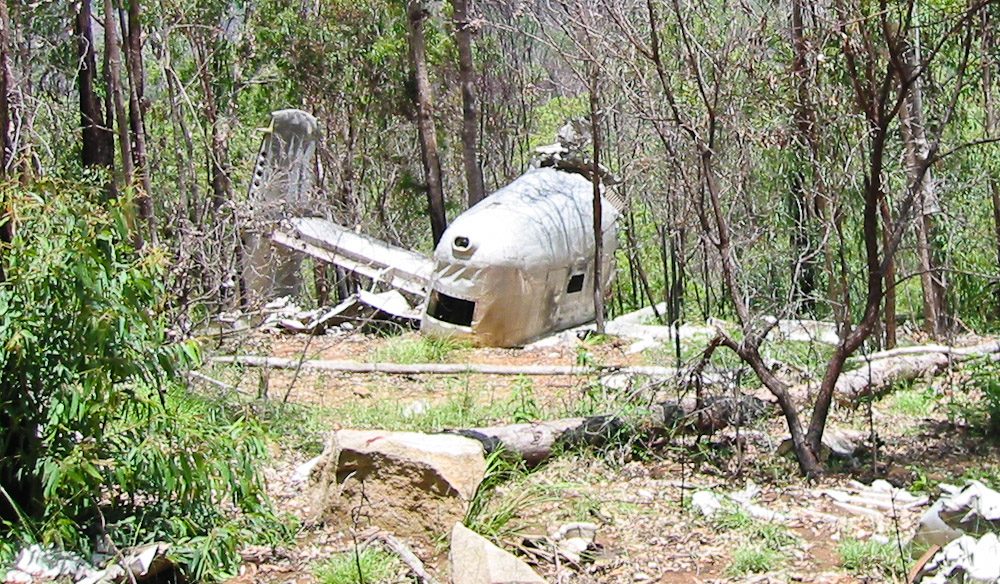
Lying peacefully in Queensland’s Kroombit Tops National Park is the mournful answer to a 50-year-old mystery. On February 26, 1945, the USAAF B-24 Liberator Beautiful Betsy and her crew went missing.
WWII was over and in high spirits eight young men volunteered to fly the retiring bomber from Darwin to Brisbane. The aging craft never made it. Several desperate and fruitless searches ended in frustration, until Parks and Wildlife ranger Mark Roe stumbled upon the wreck by accident half a century later.
Now it’s a permanent memoriam that honours the lives of the soldiers and is a place of solace for veterans and visitors alike. The wreckage strewn over the top of the sandstone escarpment details the sheer magnitude of the crash in which six American and two British soldiers lost their lives.
“VERY WORTHWHILE. DEFINITELY A SOULFUL JOURNEY.” – Sandra Sully
There’s something eerie yet undeniably fascinating about being able to walk quietly past Betsy’s engine, fuselage, shorn wings and mighty propeller, still lying in the same ridge-top clearing she came to rest in more than 50 years earlier.
Set against the peaceful surrounds – black cockatoos alighting in casuarinas, trickling creeks and flowing waterfalls, dense rainforest that’s home to the rare Kroombit tinkerfrog and the stunning views over Boyne Valley from the eastern escarpment – this is indeed a very special place for quiet reflection.
WHERE // 85km southwest of Gladstone, Qld, about a 1.5hr drive. 4WD is recommended.
DID YOU KNOW? // Flight Officer Roy Cannon of the ill-fated Betsy was due to marry a Brisbane girl only days later on March 2, 1945. His intended best man, Flight Lieutenant TJ Cook, was also on board.
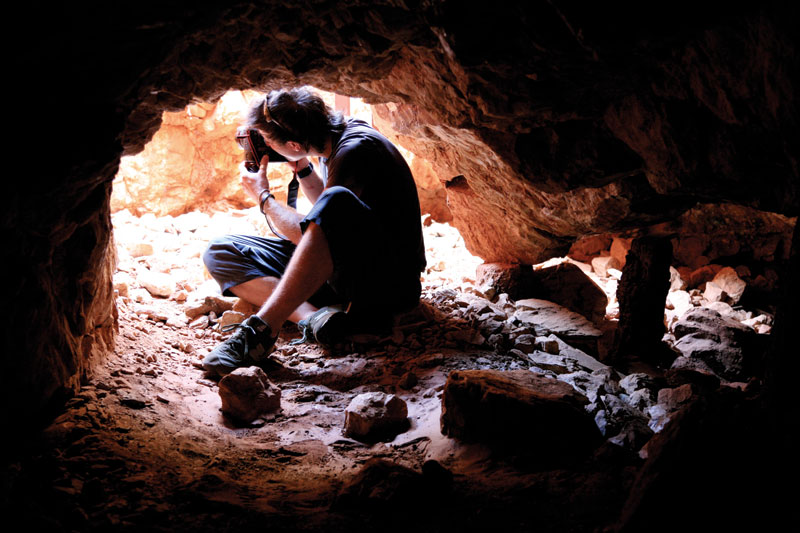
Welcome to Arltunga, the first gold rush town in Central Australia. Back in 1887, Arltunga became the focus of hundreds of desperates trying to carve out their futures in the mines and tunnels.
As you drive down the gravel roads to visit this historic site, just try to imagine what travel conditions crowds of gold seekers would have had to endure: some travelled up to 600km on foot with only a wheelbarrow full of belongings, just to chance their luck.
Once you’ve arrived you’ll have the chance to immerse yourself in what the gold rush days would have been like. Learn through guided tours and a self-operated slideshow all about the area, and even try your skill at gold panning in a display in the visitor information courtyard.
Grab a map at the visitor centre and embark on one of the many walking tracks and visit the old Police station, the Government Battery and Cyanide Works.
If you want to explore any of the old mines, be sure to remember your torch as you crawl on hands and knees through the hand-dug dusty mines.
WHERE: The Arltunga Historic Reserve is 110km east of Alice Springs via the Ross Highway. Take a fly net. Seriously.
DID YOU KNOW? Due to the gold rush that began in 1851, Australia’s population increased threefold with the influx of immigrants joining the craze, jumping from 430,000 in 1851 to 1.7 million by 1871.
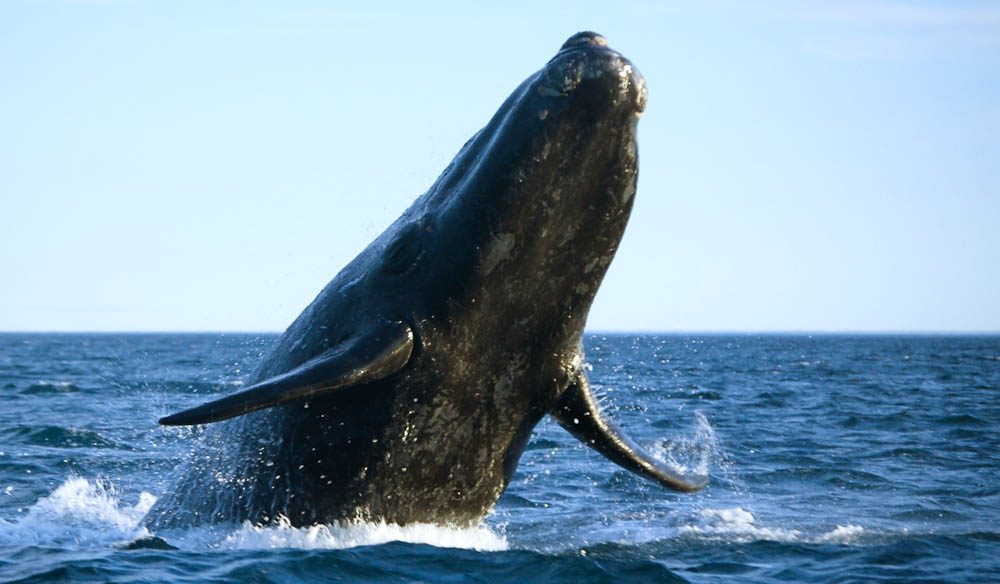
Watching whales. Never quite sounds as enthralling as it is, does it? But it gets even better when the whales are very close to shore and are in fact giving birth or helping junior through the first few weeks of life.
In the middle of the Fitzgerald River National Park between Esperance and Albany in WA’s southeast, Southern Right Whales congregate to calve and rest. And this is only one of two places on the coast where you can see them consistently in large numbers with calves (the other is Head of Bight in SA).
“IF YOUR TIMING IS RIGHT, THIS IS UNFORGETTABLE.” – Sandra Sully
The number of whales spotted is huge by normal standards, with up to 40 close to shore, with humpbacks also seen further offshore as they zoom past on their migratory journey.
The best place to see them is off Point Ann between July and October. The National Park itself is fascinating, with a great deal of flora found nowhere else in the world. Bremer Bay, the quaint town on the outskirts of the park, is the best place to set up home base for forays into the park.
WHERE // Point Ann is 65km east of Bremer Bay, 4WD recommended if you like your car unchipped. Bremer Bay is 540km southeast of Perth and 180km east of Albany.
DID YOU KNOW? // A Southern Right Whale calf will gain 90kg a day in their spring feeding as they race to put on blubber to insulate from the cold waters of Antarctica.

Imagine carving through a sheer rock face pretty much with your bare hands, without the help of modern road-making equipment. That’s what Australian convicts had to do in the 1860s to built a very special tunnel on the old Glen Innes road past Dalmorton on the NSW mid-north coast.
About eight kilometres out of Dalmorton on the wonderful scenic drive west of Grafton in the Clarence Valley, you suddenly come across the curious convict-carved construction, as the road passes for fully 20m through solid rock.
The old Glen Innes road was formed as a path predominantly for the woolgrowers of the area, and was in good use by Cobb and Co. coaches and bullock wagons when it was officially declared a highway in 1876.
The hewn edges and craggy surface of the convict tunnel, clearly visible as you inevitably slow down to a crawl, is a true wonder. And the best way to experience this is by taking the entire 244km loop, starting from and ending in Grafton.
This traces the Boyd River, goes through World Heritage-listed National Parks, scenic farmlands, passes an old graveyard, remains of the gold mining era, picnic and swimming spots and breathtaking vantage points and lookouts.
WHERE // In the Clarence Valley, at the southern end of the Northern Rivers region of NSW. The tunnel is located southwest of Grafton, 8km beyond Dalmorton.
DID YOU KNOW? // Dalmorton was once home to 13 pubs and 5000 people, all feeding off the gold rush of the 1850s and ’60s. Today the war memorial and a roadsign are all that remain.
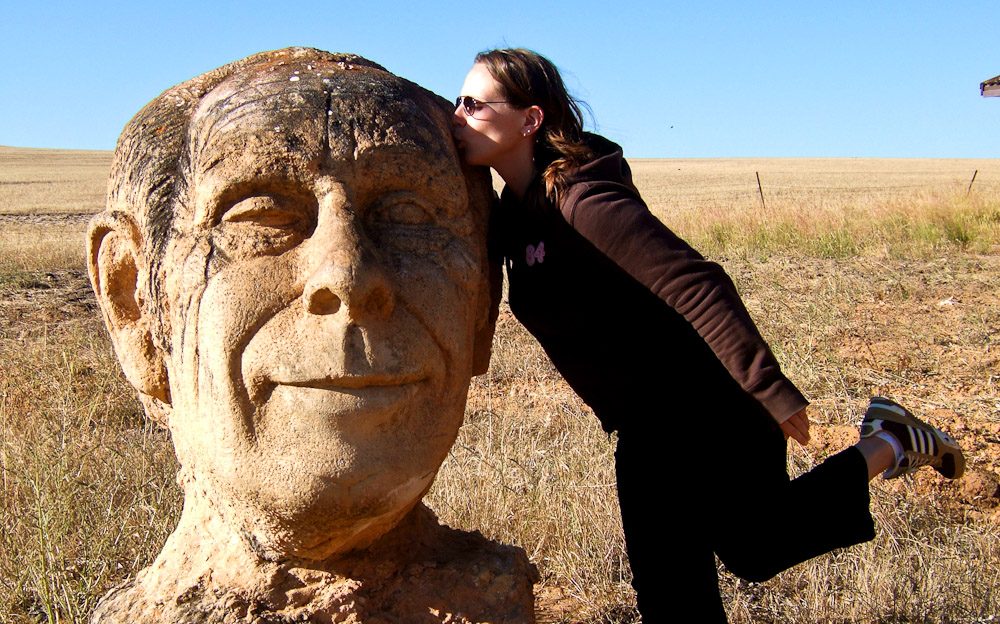
How many people knew there was a country existing independently within mainland Australia? On April 21, 1970, the Principality of Hutt River was formed after seceding from Australia.
When you arrive there, you’ll most likely be greeted by one of the members of its own Royal Family. It may be HRH Prince Leonard or HRH Princess Shirley, who’ll be happy to give you their own personal tour of the province and answer any questions: such as “How did all this happen?” (a disagreement with the government over wheat) and “What happened on December 2 1977?” (Hutt River declared war on Australia following further disputes with Canberra).
However, with the newest addition of the Pyramid of Hutt (devoted to Pyramid Energy) you can be sure the principality is more interested in peace and all things spiritual rather than war.
You’re welcome to energise yourself in the centre of the pyramid, which is known for its ability to heal and improve sleep, making this a truly relaxing and revitalising place to visit.
WHERE // 595km north of Perth, comprising of some 18,500 acres of land. Check out www.hutt-river-province.com for more info.
DID YOU KNOW? // The Principality of Hutt River has its own stamps, currency, visas and drivers licenses, so remember to take your passport with you on your visit so you can get it stamped.
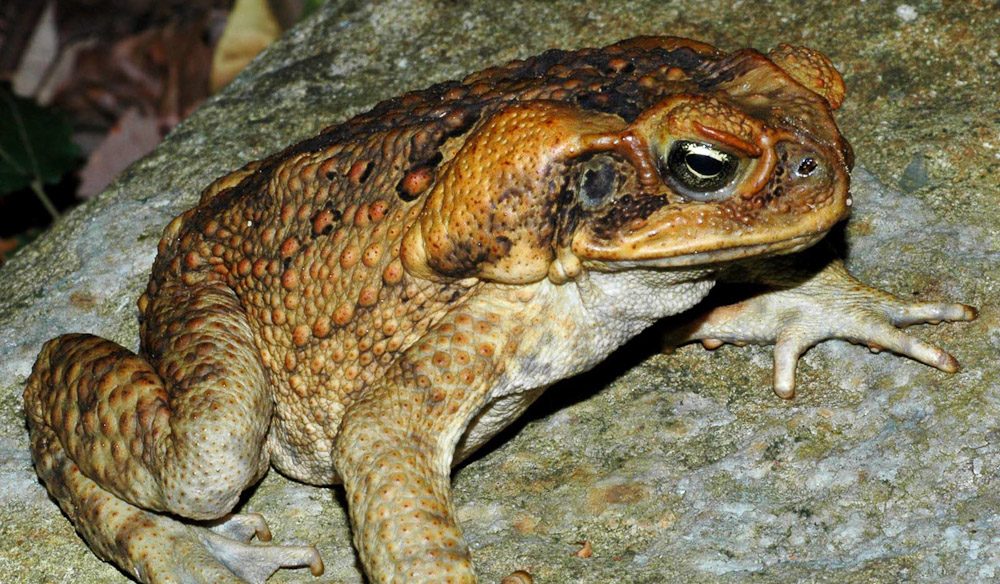
The Melbourne Cup is the race that stops a nation; cane toad racing on Magnetic Island is the race that stops an Island and raises money for charity.
Vern Thomas Jack (the Toadmaster) has been described as iconic and legendary, and 2007 marks his 20th year of holding court in the big racing circle outside Magnums on Magnetic (formerly Arkies), during which time he’s managed to raise around $200,000 for the local junior surf lifesavers and kindergarten.
While reactions range from dealing with a certain ick-factor to an excited buzz, all watch intently as the toads wait in their Perspex box waiting for the race to start.
“THIS BRINGS BACK MANY MEMORIES OF MY CHILDHOOD AND AIRLIE BEACH TOAD RACES. EEEK!” – Chris Smith
Each punter has their own tactics: Do you bet on the size of the toad? The colour of the ribbon around its middle? But “Skinnydipper” has no ribbon – what do you do there? Do you go with the name you like best?
Will your toad of choice be the Red Russian? The Irish Green Toad? Or maybe the toad with the identity crisis, the Pink Pussycat? It’s all down to you, the circle, one slimy hopper and the screaming, screaming crowd.
WHERE // Magnums on Magnetic (07) 4778 5177 is in the Arcadia township on Magnetic Island, which is 8km offshore from Townsville.
DID YOU KNOW? // While toad racing does take place in other areas of Australia, Vern claims that between himself and David “Crusty” Heron, they’ve managed to make Wednesday nights at Magnums the most consistently held toad racing night in the country.
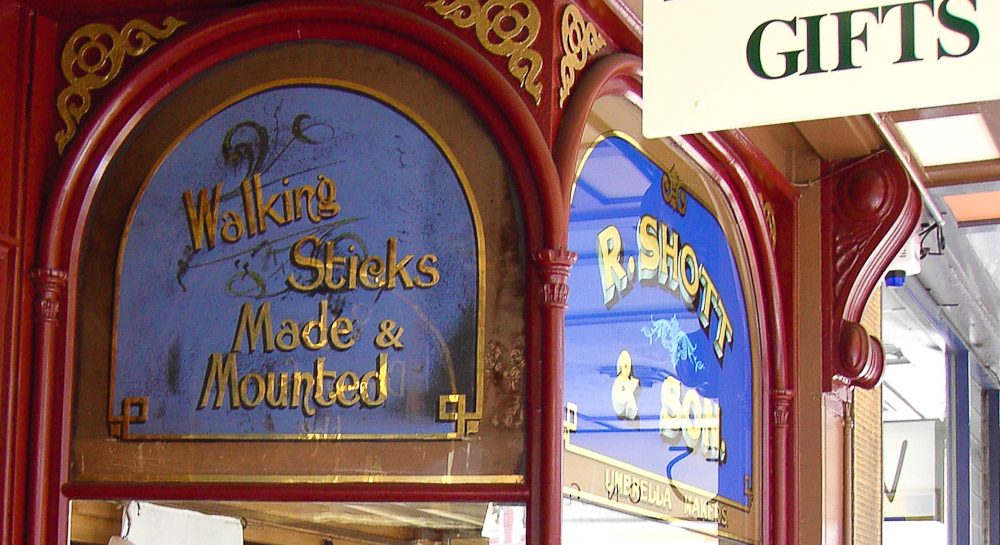
Don’t be surprised to find yourself singing in the rain after you’ve bought one of the gorgeous retro umbrellas at the Old Umbrella Shop in Launceston.
The unusual and antiquated shop in George St was built in the 1860s from Tasmanian blackwood and is the last original store of the Victorian age in Tasmania.
“A WONDER WORLD STORY IN THE MAKING. I WISH I’D KNOWN ABOUT THIS PLACE TEN YEARS AGO!” – Catriona Rowntree
The three generations that have been running it from 1900 – and all other previous owners – have maintained the genuine Victorian style so that you can still buy National Trust, typical and unique Tasmanian goods as well as a variety of umbrellas used during the past century.
Even if you prefer spiffy modern umbrellas, it’s bewitching to just observe the pretty display and stroll through the Victorian shopping atmosphere. Step inside this neat boutique and take a journey back into the rainy old days.
WHERE // 60 George St, Launceston City, Tasmania, (03) 6331 9248.
DID YOU KNOW? // Old umbrellas aside, it’s now possible to purchase brollies that have a talking function in order to provide weather forecasts on demand. (What next? Talking surfboards that track the swell?)
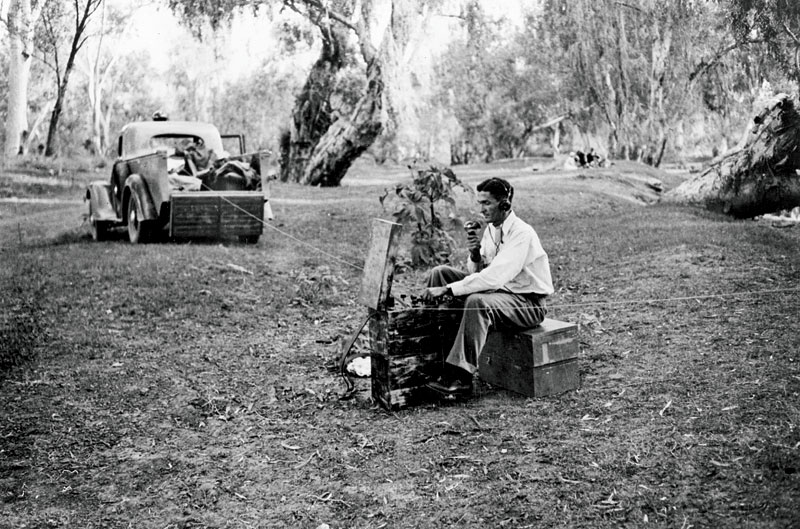
Do you know where you come from? And we’re not talking about the birds and the bees here. We mean how much do you know about where you and your family are from?
Can you account for exactly how you ended up living in Australia? Do you know what your great-great-great grandparents did for a living? The National Archive of Australia welcomes you to undertake research and uncover your immigration history.
“I HADN’T HEARD OF THIS ONE EITHER! BUT THANKS FOR THE TIP. I’D LOVE TO DO THIS.” – Catriona Rowntree
The collection holds mainly records created by the Federal Government since Federation in 1901. If records are more than 30 years old they’re available to the public and may hold information regarding the marital status, country of last permanent residence, nationality and more on your relatives.
Your history awaits!
WHERE // The NAA has galleries, a reading room and offices in Canberra and a reading room and offices in each State capital and Darwin (www.naa.gov.au).
DID YOU KNOW? // The earliest record the National Archives of Australia holds dates back to 1804 and is the deed of title signed by Governor King approving the purchase of the site currently occupied by the Sydney General Post Office.
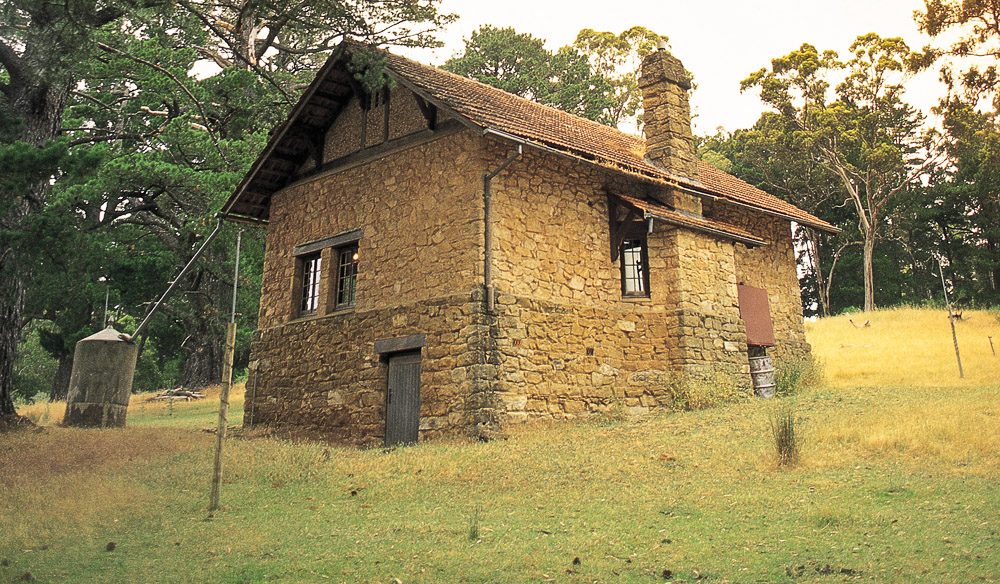
The “portrait painter to the gumtrees”, Sir Hans Heysen is famous for his remarkable works of Australian Eucalypts painted throughout SA, and the Flinders Ranges in particular.
He was the first Australian painter to make the trees themselves the subject, exploring their unique colours and shapes as opposed to being the necessary background to a painting of people or landscapes. Still owned by the Heysen family, his house and studio are now a delightful museum and garden in the Adelaide Hills.
“FOR THOSE WHO LOVE ART AND AUSTRALIA’S ART HISTORY, THIS IS A MUST SEE.” – Sandra Sully
Sir Hans was probably one of the earliest conservationists as he bought neighbouring properties to ensure the trees weren’t destroyed. The increased garden he also used as his studio.
The estate was named The Cedars by the family and over the course of a one-hour tour you’ll see the studio and family home of the wonderful and relatively unknown painter.
WHERE // Heysen Rd, Hahndorf, 30km east of Adelaide. (08) 8388 7277 to book tours, closed Mondays.
DID YOU KNOW? // Sir Han Heysen won the Wynne Prize (the Archibald for landscape artists) a total of nine times.
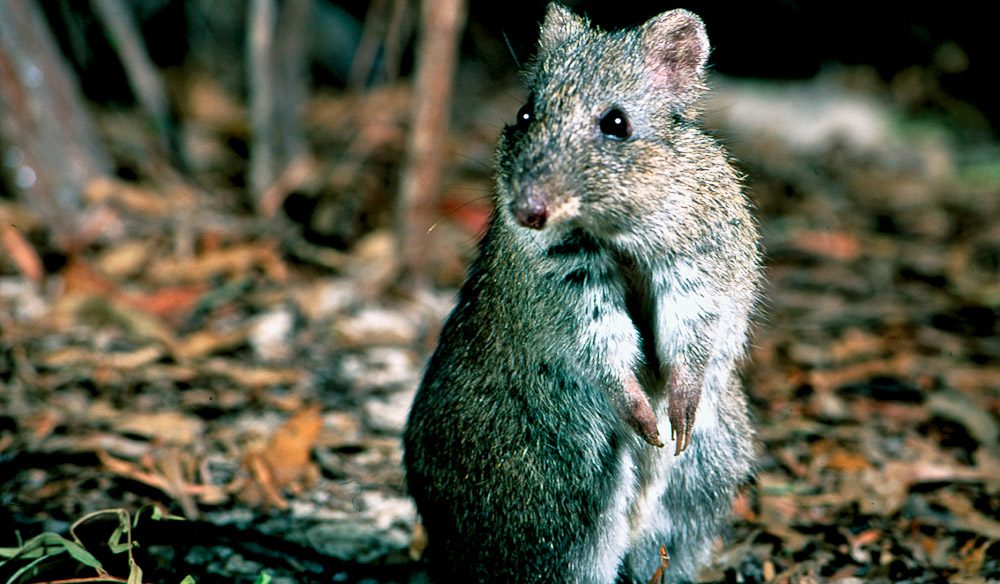
The smallest marsupial is no longer extinct! You can find most of these little rare creatures at the nature reserve near Two Peoples Bay.
At Two Peoples Bay in southwest WA in 1994, a PhD student by the name of Elizabeth Sinclair and her field assistant Bridget Hyder made an astonishing discovery while studying quokkas in the region.
Or perhaps that should be a rediscovery, since they actually found what turned out to be a few Gilbert’s Potoroos that were thought to have become extinct 115 years earlier!
The beautiful nature reserve at Two Peoples Bay is now the only area in the world in which at most 40 of the rare marsupials live. But, in the rarity stakes, at least they’re not alone. The noisy scrub-bird was also rediscovered here in 1961 after having been unrecorded for 72 years.
A recovery program has seen the bird’s population increase from about 100 in the 1960s to more than 1900 today. The bird is consequently one of the icons of WA’s nature conservation initiatives, since it’s still considered an endangered species.
A new Interpretive Centre welcomes nature lovers, as well as some amazing walks at the gorgeous Little Beach and Waterfall Beach. Turn to page 48 to learn more about this unique and beautiful area of Australia.
WHERE // The Two Peoples Bay Nature Reserve is 35km east of Albany in southwest WA. Go to www.potoroo.org to learn more and even donate some money to this worthy cause.
DID YOU KNOW? // The call of the noisy scrub-bird is almost painfully loud at close range. Its rediscovery in the 1960s was a timely one, since much of the area was due to be turned into a holiday resort. Which is lucky, also, for the Gilbert’s Potoroo.
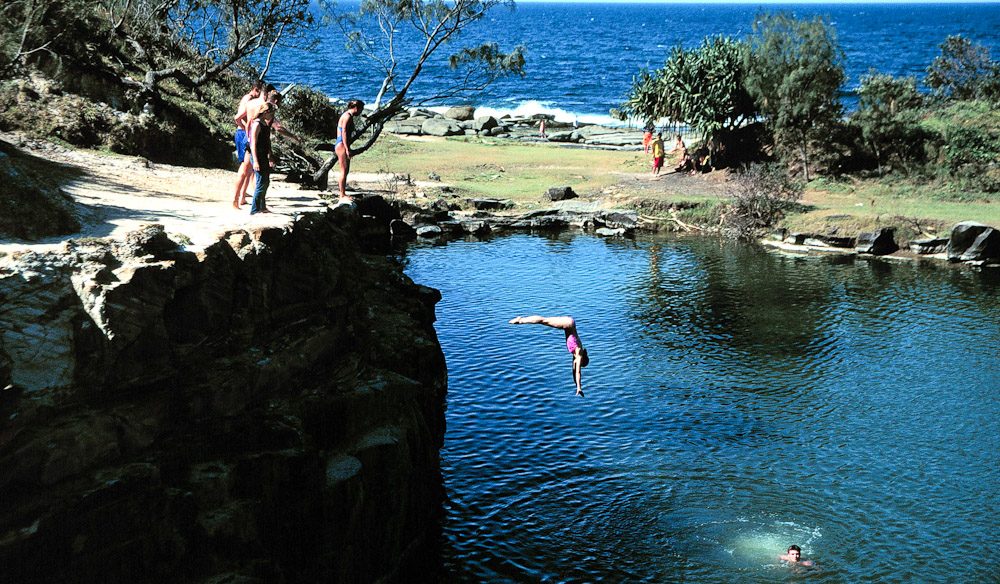
Angourie’s Blue Pool was once a rock quarry that ran across a slight problem. When an underground freshwater spring was disturbed it was suddenly transformed into an aquatic haven.
Children revel in it for the daredevil opportunities it provides, jumping off the cliffs into the dazzling blue without a care in the world. Ramblers who’ve undertaken the spectacular 10km coastal walk from Angourie think of nothing but the opportunity to melt into the Blue Pool’s revitalising chill after their hike.
And the whole area is a Mecca for dyed-in-the-wool surfers as well as a renowned home to some of Australia’s top surfboard shapers. While you’re in the area be sure to check out Spooky’s Beach (Spookies to the locals) a great point to look for whales and dolphins, as well as Back Beach, a slightly quieter surf break.
Keep your eyes open and alert for the chance to collect some fabulous shells, but – and the locals have asked us to make a point of this – please be positively sure not to leave any litter.
WHERE // Angourie’s Blue Pool is 684km north of Sydney, 10km south of Yamba, 133km south of Byron Bay and definitely worth the journey to visit.
DID YOU KNOW? // The small village of Angourie first surfed into the limelight in the cult movie Morning of the Earth in 1971.
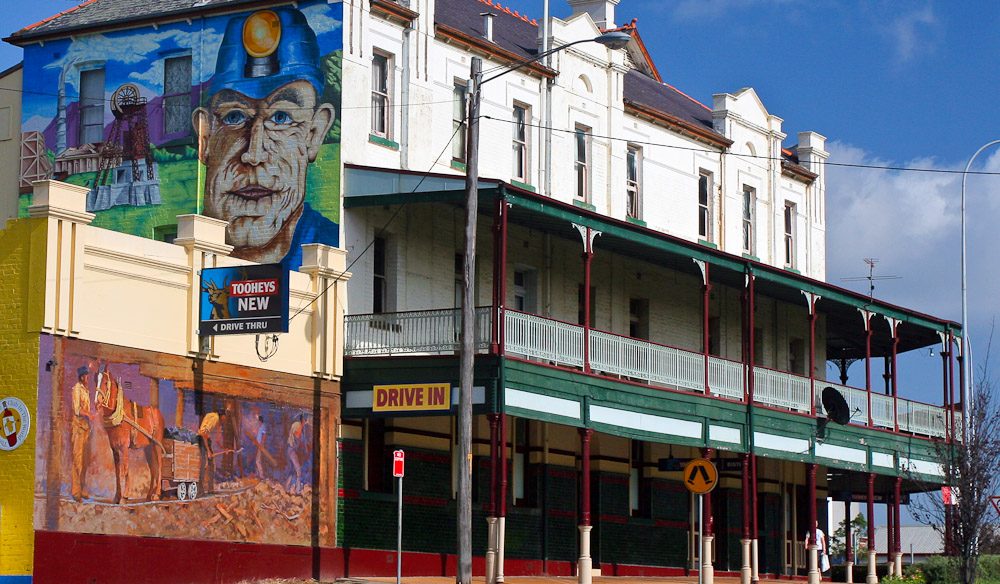
Kurri Kurri, in the NSW Hunter Valley, is an art gallery all its own, abuzz with works by Australian and local artists. As you wander through town you’ll notice the lively collection of 38 murals of varying sizes, a colourful project that began as a means of combating unemployment and to support local businesses.
On brick walls, buildings and even a toilet block, each one is a unique piece of art showing the town’s history and culture. Here you see companion workers, there a piece with Aboriginal dot painting influences, over there a blacksmith and a Christian church scene.
Each picture is fondly drawn and shows a great love of detail, bringing the walls to life. No entry fees, no sticky museum air, no darkened display rooms or restrictions for photographers – this art is displayed in a truly open, modern manner.
WHERE // Kurri Kurri, Hunter Valley wine region, 145km north of Sydney.
DID YOU KNOW? // The world’s largest indoor mural is in Gwalior, India, and measures 904m2. The world’s second largest (727.52m2) is in Burnie in Tasmania’s northwest and depicts Tasmania’s wildly varying terrain.
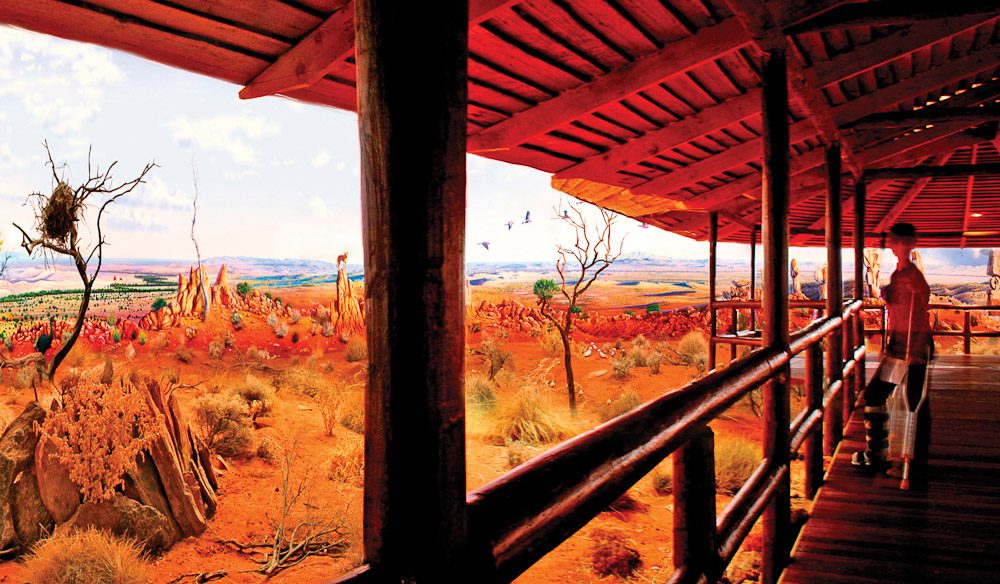
Jaws drop and people stand speechless in front of the World’s largest acrylic painting, the Big Picture. Do not stop in Broken Hill without checking it out. It’s difficult here to do it justice, especially when you realise it was only one man, one brush stroke at a time, who completed the colossal 12m x 100m canvas.
Ando (left), the artist, has never had an art lesson in his life. His style is typically referred to as “Andoism”, as he blends perception, reflection, depth, shadow and light to depict a “super realistic” art form so true to life you’ll be tempted to step into his landscapes.
“ANY EXCUSE TO GET TO BROKEN HILL IS A GOOD ONE. AND THIS IS A GOOD ONE.” – Sandra Sully
The Big Picture is best described as bringing the outback to life, with real red dirt and plants forming the foreground – an effect that seduces the eye.
The painting features lightning strikes, dust storms, 100,000 saltbushes, 3000 clouds, 20,000 trees, 20,000 stones and more. Ando painted parts lying on his back, used around 3000 tonnes of paint and took five years to conceptualise, plan and eventually unveil the Big Picture in 2001.
The painting is a work in progress masterpiece, which Ando will continue to add to throughout his life.
WHERE // At the Silver City Mint and Art Gallery in Broken Hill. More info at www.andoart.com
DID YOU KNOW? // Ando created the world’s largest work of art: a head and shoulders image of a stockman that he etched into the Mundi Mundi plains near Silverton, NSW, covering 4,300,000m2.
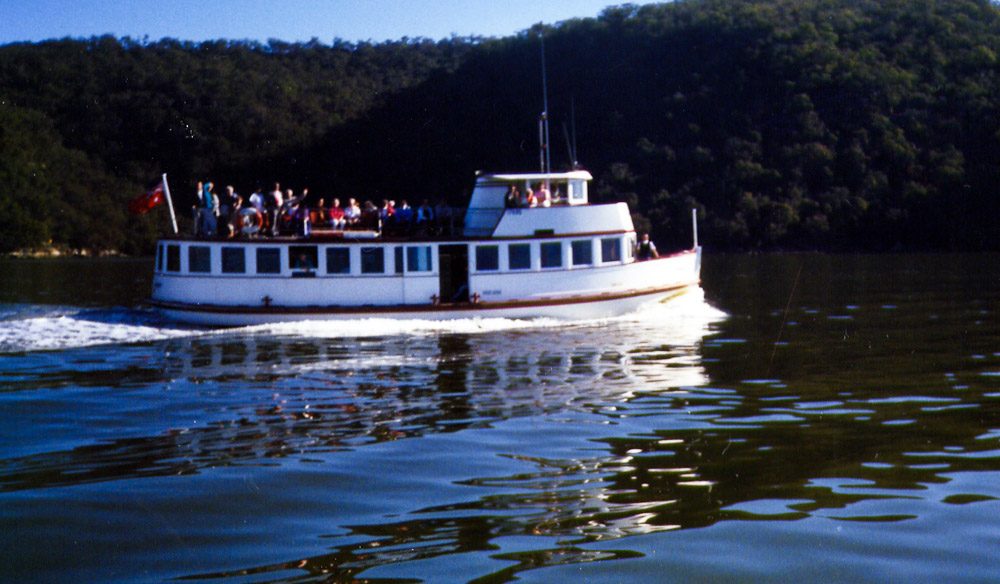
Australia’s last remaining riverboat postman service cruises along the Hawkesbury River delivering post and essentials to isolated communities living along the watercourse.
The old timber ferry allows guests on board to witness the bread and milk run, which is a great way to experience the old charms of yesteryear and understand how life was lived in the 1800s.
River courses were major transportation routes in days gone by and if you sit back and listen to the commentary you’ll learn more than you think. The host himself, referred to as “Postie”, tells the odd yarn and paints a great picture of the past as you stare out towards the neighbouring Ku-ring-gai Chase National Park.
“GET COSY AND ENJOY THIS TOUR THAT TAKES IN ONE OF THE MOST ROMANTIC WATERWAYS.” – Catriona Rowntree
Operating six days a week, it’s recommended to reserve a seat and expect to pay $45 per head (which includes lunch and the 3.5-hour adventure – bargain).
From a scenic point of view, the postman tour gets a huge thumbs up: wide waterways, little inlets and lagoons, privately owned boats anchored along the riverbanks and houseboats meandering slowly alongside.
WHERE // Hawkesbury River, NSW. Board a train in Sydney, hop off in Brooklyn, walk a metre or two and jump in the riverboat (which is literally across the way) – and let the unique quest unfold from there. Contact the postman to arrange your trip on 02 9985 7566
DID YOU KNOW? // In the 19th Century, the Hawkesbury River was used as the main transportation route for ferrying food from western Sydney to the city.
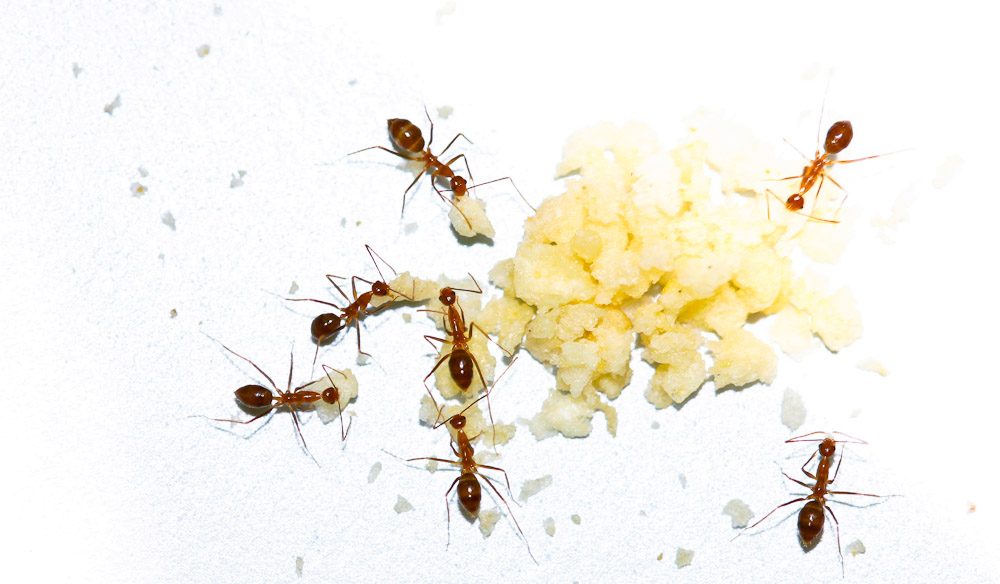
What’s yellow, crazy and has billions and billions and billions of legs? All of the Yellow Crazy Ants currently turning areas of the Northern Territory into so much insect food.
They’ve worked their way through about 20 million red crabs on Christmas Island, and are now causing problems along the Gove Peninsula in eastern Arnhem Land.
So named because they swarm when disturbed, Yellow Crazy Ants are recognised by the Global Invasive Species Program as one of the world’s worst invaders, and it’s up to you do help turn the tide . . . on your next holidays.
Scientists and Indigenous rangers need your help as in their eradication programmes as part of a volunteer holiday near Nhulunbuy in a remote and wild area covering 25,000km2.
A one-of-a-kind experience, you’ll travel through astonishing Aboriginal lands, swim at secluded beaches, get to know researchers and traditional owners of the land and sleep beneath the stars. Oh, and don’t forget your boots.
WHERE // Nhulunbuy, east Arnhemland, Northern Territory. More info at www.conservationvolunteers.com.au.
DID YOU KNOW? // If aerial spraying isn’t maintained, it’s thought the endemic Christmas Island Frigatebird population will fall by 80% in the next 30 years through Yellow Crazy Ant infestations.
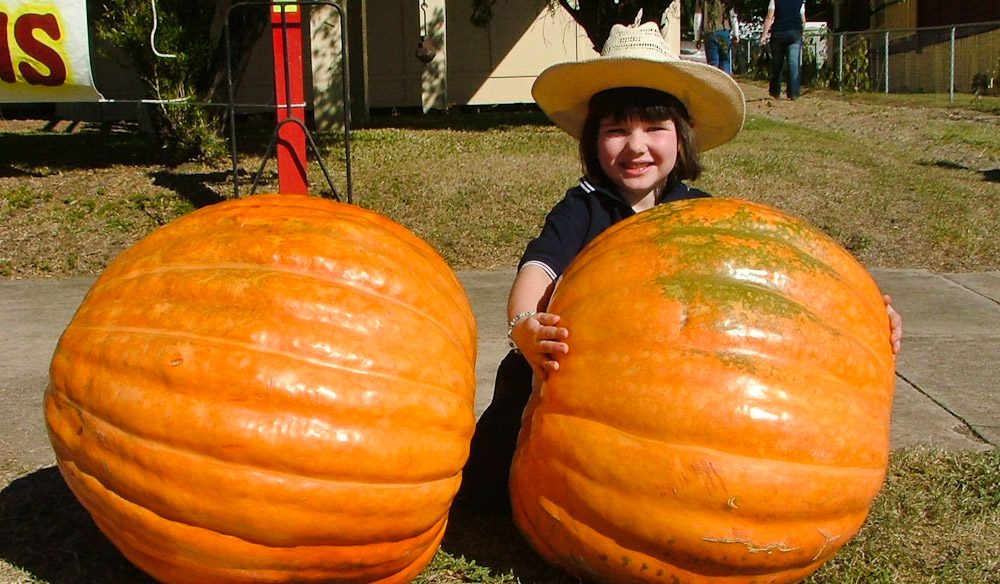
Forget about carving pumpkins for Halloween. Give ’em a strong push and roll ’em down the hill! The centrepiece of Queensland’s annual Pumpkin Festival in Goomeri is the Great Australian Pumpkin Roll, which is kind of self-explanatory.
The local police and mayors of South Burnett roll off to open the festival – directly down Policeman’s Hill, which could be why the head-to-head so far has the police streets in front. Past guests for the great roll have also included Queensland Minister Margaret Keech, who tried her arm a couple of years back.
More than 300 rollers cover Policeman’s Hill and adjacent areas with pumpkins of all shapes and sizes (you never really know where they’ll end up), and there’s a parade, various quirky pumpkin competitions (biggest, best dressed etc), loads of family fun, live music, art, crafts and markets with up to 200 stalls throughout Goomeri.
Around 13,000 visitors make this little town a place full of activity and action during the festival – so why not make it one more? It’s held on the last Sunday of May each year, so be sure to warm up your rolling arm.
WHERE // Goomeri is in Kilkivan Shire on the Burnett Highway around 265km northwest of Brisbane.
DID YOU KNOW? // According to pumpkinnook.com, the largest pumpkin ever grown weighed 681kg, and was grown by Ron Wallace of Greene, Rhode Island.
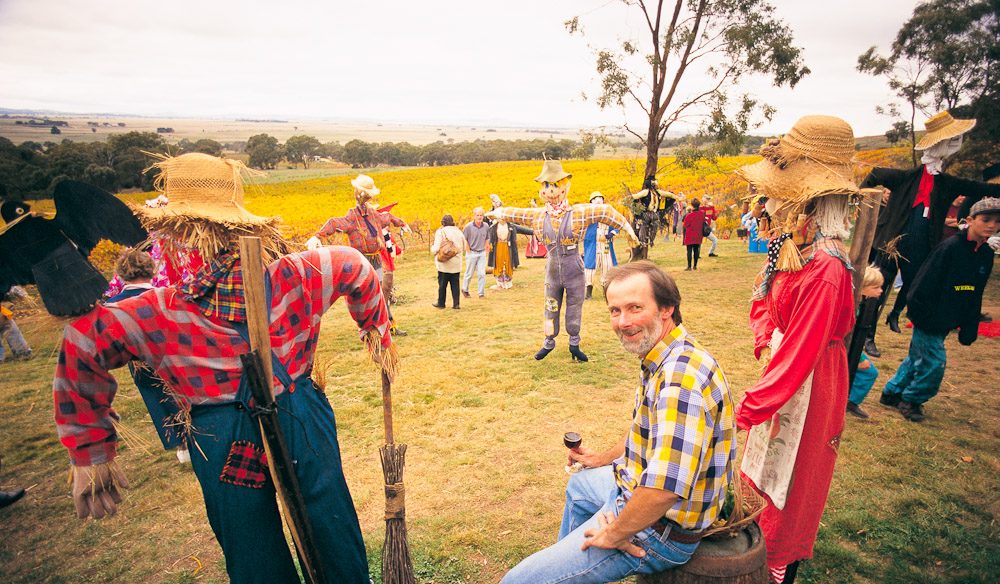
Dorothy would certainly have her work cut out for her in the Grampians Wine region in May every year. There are more scarecrows there than you could poke a stick at.
The annual Scarecrows in the Vineyard display is a marquee event of the Grampians Grape Escape Festival. Expert scarecrow builders from all over Australia enter their work to a set theme each year; 2007 was “Scarecrows at Work” and had to show “get up and go attitude” and be “vibrant and lively”.
And the entrants are certainly entertaining. You wander through an amazing collection of around 30 scarecrows, all made with a great sense of fun and humour.
The weird and wonderful collection is displayed at Garden Gully in the Grampians Wine Region for three weeks leading up to the Scarecrow Picnic, when the winners are announced.
WHERE // Garden Gully Grampians Wine & Produce, 1477 Western Highway, Great Western, Vic. Check out www.montara.com.au for more.
DID YOU KNOW? // The origins of the scarecrow are a mystery, but scarecrow-like beings have turned up in ancient Greece, Rome and Japan.

The National Art Glass Gallery in Wagga Wagga on the banks of the Murrumbidgee is home to the country’s largest collection of glasswork. The gallery boasts a permanent display of some 410 pieces, including Leonard French’s huge stained-glass piece (above) reason enough to visit.
As you step inside you feel as though you’re entering a glass bubble, as one side of the room is glassed from floor to ceiling, looking out onto a leafy garden that compliments the artwork.
“ART LOVERS WILL BE TRANSFIXED.” – Sandra Sully
The still surrounds amplify the busy glass displays, making the experience that much stronger. Creative glass blowing has been a leading art form in Wagga since 1974.
The gallery aims to grow and build its contemporary glass collection, and its latest acquisition, an elegantly shaped blue vase with perfectly blown indentations – aptly named Blue Steel by Joanna Bone – carries a uniquely Aboriginal look and feel, and is reminiscent, for some, of a symbolic expression of the Milky Way.
WHERE? Wagga Wagga is midway between Sydney and Melbourne.The Glass Gallery is in the Civic Centre of the city’s Cultural Precinct (www.wagga.nsw.gov.au/art-gallery)
DID YOU KNOW? Wagga Wagga is often called the City of Good Sports, because of all the famous sporting identities hailing from there, including Wayne Carey, Paul Kelly, Geoff Lawson and Michael Slater.

Glen Nagle reckons the Moonrock Café has the best coffee in the galaxy – and he can prove it. Since he works for the Canberra Deep Space Communications Complex at Tidbinbilla just outside Canberra, we’re inclined to believe him.
Unfortunately, many people who visit Canberra stay in the “Parliamentary Triangle”, which houses many fine institutions such as the National Gallery, Parliament House and the War Memorial.
But we urge you – we beg you – to make the 40min trip to Tidbinbilla to see the DSCC. It’s operated by NASA and has the best collection of space memorabilia and real flight hardware in Australia. And it’s a working complex.
You can see quite literally the latest photos beamed back to Earth from the Mars Rover. It’s one of three places on Earth that track and “talk” to spacecraft in deep space (the other two are in the US and Spain).
The people here are knowledgeable and enthusiastic. The display includes models of the Mars rover, actual flight suits, and one of the largest pieces of Moon rock in the world.
WHERE // 34km southwest of Canberra, and best of all it’s free! But the “best coffee in the galaxy” might cost a few bucks.
DID YOU KNOW? // The CDSCC is currently supporting 43 missions from over 23 nations, who time their launches to have Canberra tracking at their critical early stages; our engineers are considered the world’s best and are the only one’s completely trusted to manage such a delicate stage of the launch process!
This is one of the most diversified tours of the Australian desert. First, ride a camel, then hop into a helicopter to enjoy sweeping views of the outback, followed by a sunset dinner and topped off after day’s end under the incredible night sky of the Red Centre, accompanied by fascinating stories about the universe.
Anangu Waai’s Flying Camel Tours take you on a one hour camel ride near Alice Springs and through the Todd River area, exploring native animal and plant species and visiting the Camel Museum.
“MAGICAL OUTBACK AUSTRALIA AT ITS BEST.” – Sandra Sully
“
Then you’ll fly over Honeymoon Gap, Mount Gillen and Heavitree Gap by chopper, touching down in time for a glowing sunset over the MacDonnell Ranges and a three-course dinner in Milky Way Café as countless twinkling stars take over the sky.
Listen to stunning explanations of the universe and take a deep glimpse through a telescope. What an amazing mixture of nature, outback adventure, dining and education.
WHERE // Alice Springs, NT. Contact AnanguWaai Tours on (08) 8950 3030 or at www.ananguwaai.com.au for more info.
DID YOU KNOW? // The first Australian camel was called Harry and arrived from the Canary Islands in 1840. He knocked his owner John Horrocks, who was loading his rifle at the time. John died from the resulting injuries, but not before asking that Harry be summarily executed.
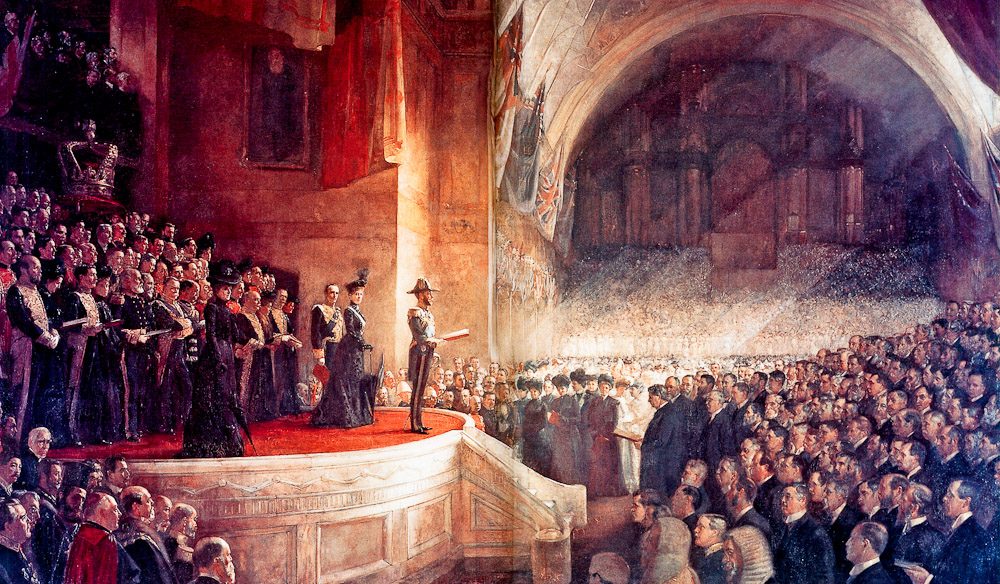
We’ve done the maths and Tom Roberts has it over famous Renaissance man Rafael. In Rafael’s seminal work School of Athens there are a mere 21 portraits of famous scientists, many supposedly done by assistants.
Roberts, on the other hand, crafted 269 individual portraits in the making of the Big Picture, commemorating the opening of the first Federal Parliament of Australia.
“ I JUST ADORE THIS PIECE BY TOM ROBERTS. A MUST SEE IF YOU LOVE AUSTRALIAN ART.” – Sandra Sully
The huge canvas is hung in Federal Parliament in a special gallery at the entry to the Main Committee room. To reach it you walk through the foyer, past the members’ hall, then through a narrow passageway.
It’s a shame that unless you make the effort or are on a tour you’d more than likely miss it. But to really appreciate it, you need to consider Tom’s effort: he was second choice for the commission, which stipulated there be at least “250 recognisable likenesses.” He produced 269. To finish the piece he had to go to England and sit with subjects, which was made all the more difficult with the recent death of Queen Victoria.
All the attendees at the event were dressed in black to signify their mourning, so Roberts had to include the stream of sunlight from right to left to give the piece any colour.
WHERE // Federal Parliament, ACT.
DID YOU KNOW? // In the greatest act of gift recycling, the Victorian businessman who commissioned the work gave ownership to the Australian Commonwealth, which then gifted it to the King in 1904. It was only in 1957 that the work returned to Australia. (We still don’t own it. It’s on permanent loan from the Royal Collection.)
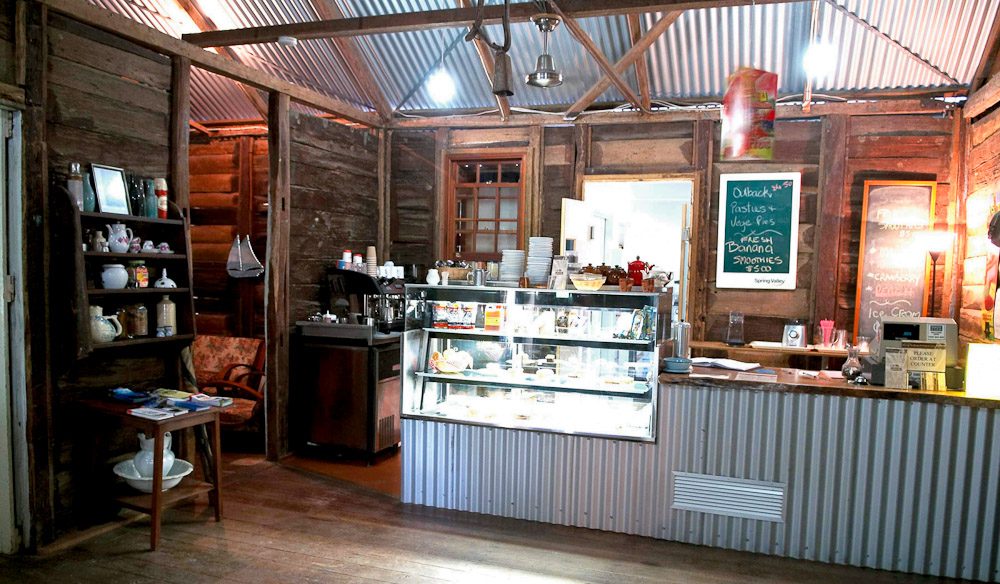
This could be the world’s most bizarre drink. The Herveys Range Heritage Tea Rooms near Cairns, operating from the Eureka Hotel, the oldest building in north Queensland, is the only café in the country that sells Kopi Luwak.
And since it’s the world’s rarest coffee blend, it costs $50 per cup. Let’s talk you through it: The beans are harvested in Indonesia on the islands of Sumatra, Java and Sulawesi. But they’re not, and this is the important part, simply plucked from coffee plants. Oh no.
They’re collected from the poo of the Common Palm Civet, or Luwak, a catlike animal that eats the ripe coffee cherries but can’t digest the beans. While in the Luwak’s digestive system, they pass through a unique fermentation process that no-one’s really game to get to the bottom of (ha!), but we’re told it all ends up in a brew so sensational that it commonly sells for $1250 a kilo!
Don’t forget to also try their yummy scones and apple pie, as well as their tours through five of the old mining tunnels of the Greenvale line and the nearby forest that’s home to the Gulbaru Gecko, which was only newly discovered in 2005.
WHERE // The Herveys Range Heritage Tea Rooms are 30min out of Townsville. Call (07) 4778 0199 or check out www.heritagetearooms.com.au for more info.
DID YOU KNOW? // In 2006, the Herveys Range Heritage Tea Rooms sold fully two percent of the entire world supply of Kopi Luwak coffee. People just can’t seem to resist trying the stuff.
If it’s not too terrifying for you, we’ve found the perfect way to experience the venomous side of Australia – safely – from as close as it’s possible to get. Australian Venom Zoo in Kuranda, northwest of Cairns, is home to beasties you won’t find in any other zoo on Earth.
Aside from daily live venom extractions, they also house a variety of tarantulas (some up to 17cm in size for goodness’ sake), Australia’s top five venomous snakes, various scorpions, centipedes, insects and reptiles.
“TOO CREEPY AND CRAWLY FOR WORDS!” – Chris Smith
In fact, why would anyone in their right mind go to this place? It’s a specialised centre for breeding Australian Tarantulas. Isn’t that warning enough?
But if this is up your alley, by all means, head down there. You’ll witness some very important scientific work: the various venoms are sent all over the world for medical research to find cures for some of the most fatal diseases. Set your fears to one side and delve into a world of fascinating and much maligned animals.
WHERE // 8 Coondoo St, Kuranda (25km northwest of Cairns), Queensland. More info at www.tarantula.com.au
DID YOU KNOW? // Scientists are currently researching venoms as cures for such conditions as heart arrhythmia, as medication for brain cancer, and arthritis pain relief.